Back as a regional player and resurgent world power in recent years, Russia is has also been making an automotive comeback with new models and a return to old markets. Returning to regional markets including the UAE and Jordan in recent months, Russian automaker Lada’s small, iconic off-roader remains the star player in its portfolio.
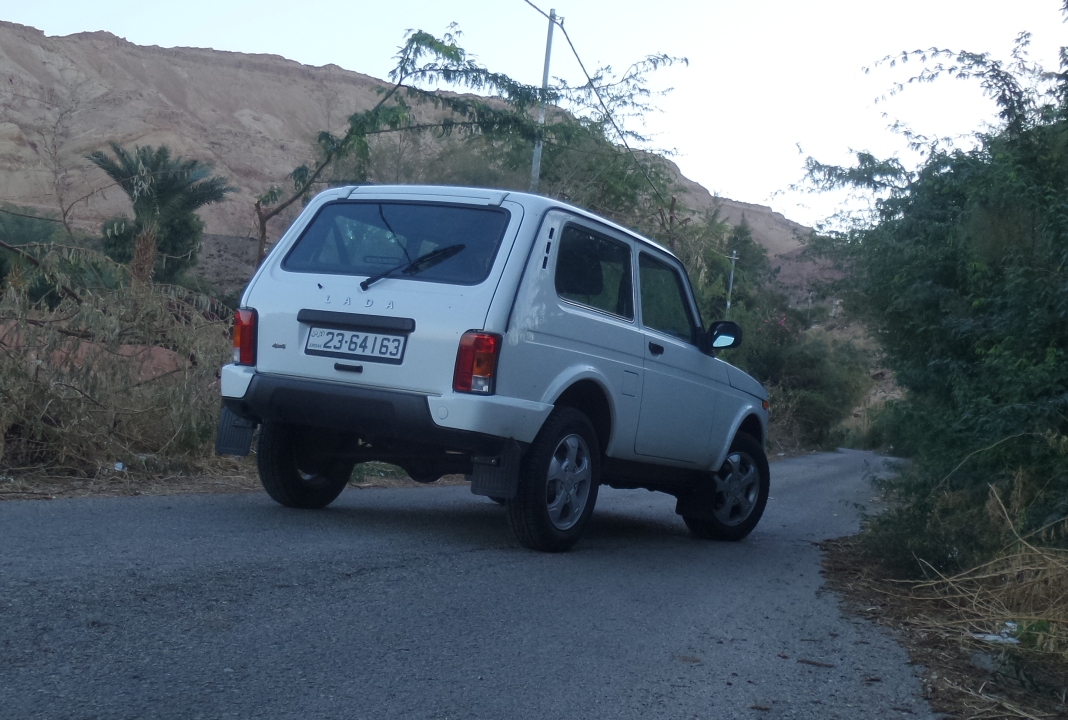
Forgoing its best known Niva nameplate, the recently re-named 4×4 has been little altered. Bar a mild cosmetic refresh and light concessions to comfort and convenience in road-biased Urban guise, the 4×4 is as authentic, affordable and able as ever.
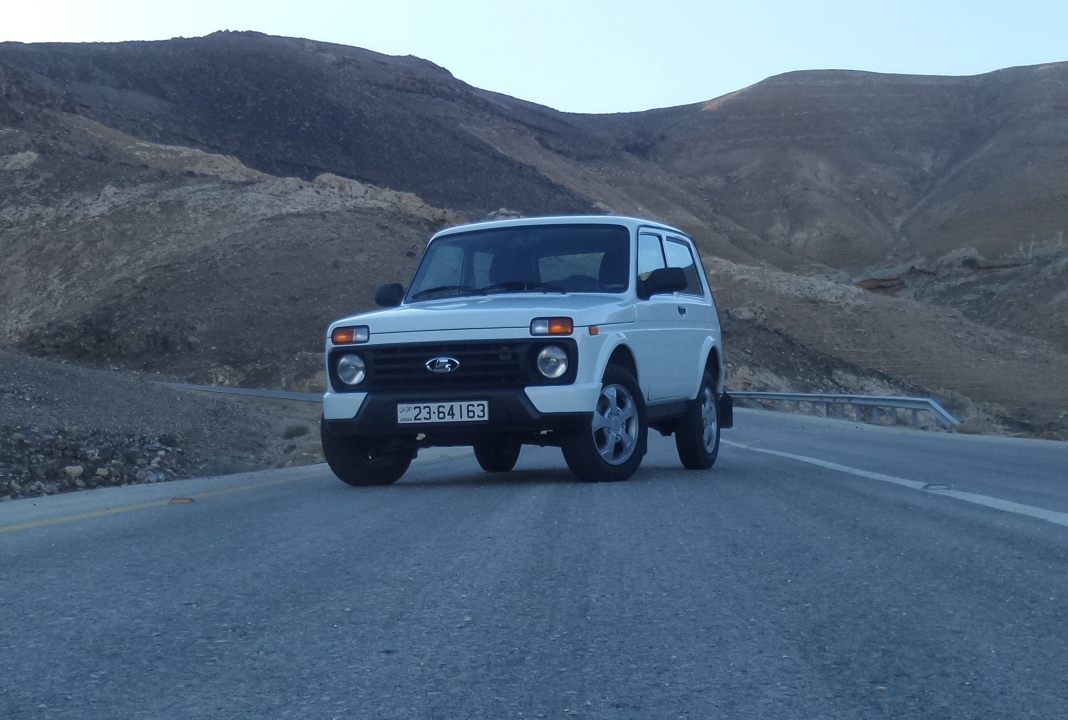
Uncomplicated, unpretentious and rugged, the Lada 4×4 was ahead of its time when launched in 1978. Engineered for a high degree of off-road capability and compact car-like comfort and maneuverability in an easily maintained and accessible package for harsh rural Russian conditions and city streets, it was like a Land Rover or Jeep crossed with a compact hatchback.

A product of the Soviet era that remains relevant, the 4×4 may lacks the luxury and much of the convenience of more modern but less capable crossover SUVs, but is among the most affordable and maneuverable cars.
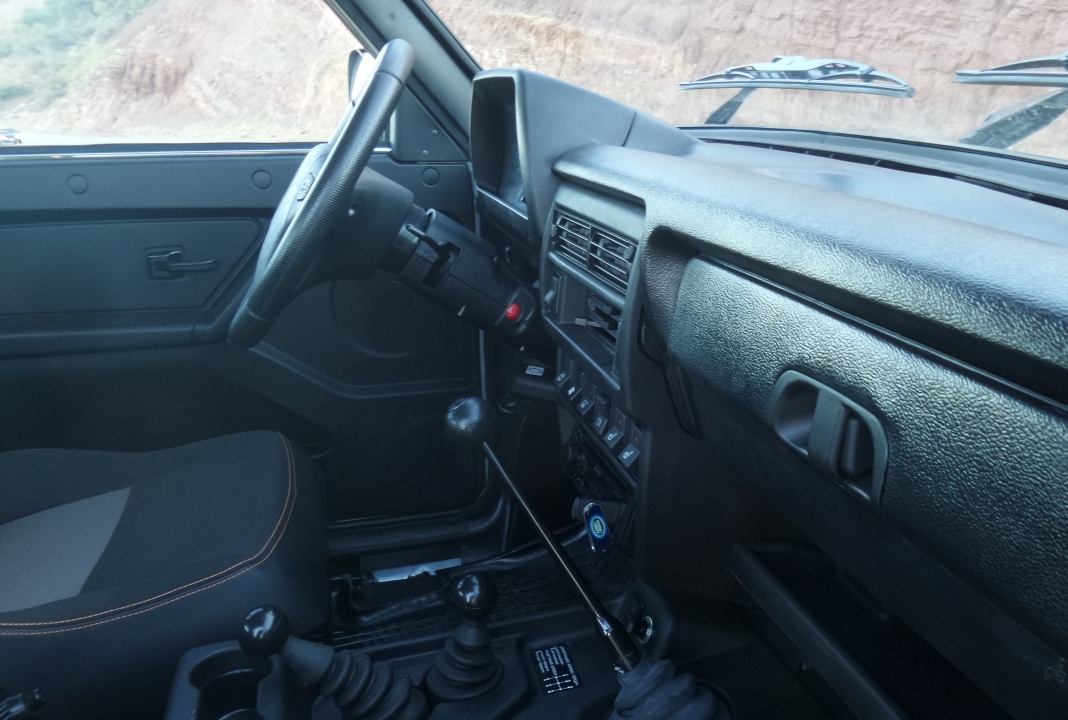
An attainable daily driver for many during such chaste economic times, the Lada 4×4 is for more solvent others, an affordable second or third runaround car or occasional-use off-roader costing a fraction of more ‘precious’ luxury SUV.

A design icon with boxy, un-fussed and honest dimensions, surfacing and styling the 4×4 features distinctive low-slung headlights, and modern integrated bumper and 16-inch alloy in Urban specification. Highly customizable, mechanically and aesthetically, the 4×4 also makes an ideal and dedicated off-road plaything, equivalent to what Caterham or Harley-Davidson are to weekend track day racers and bikers, respectively.
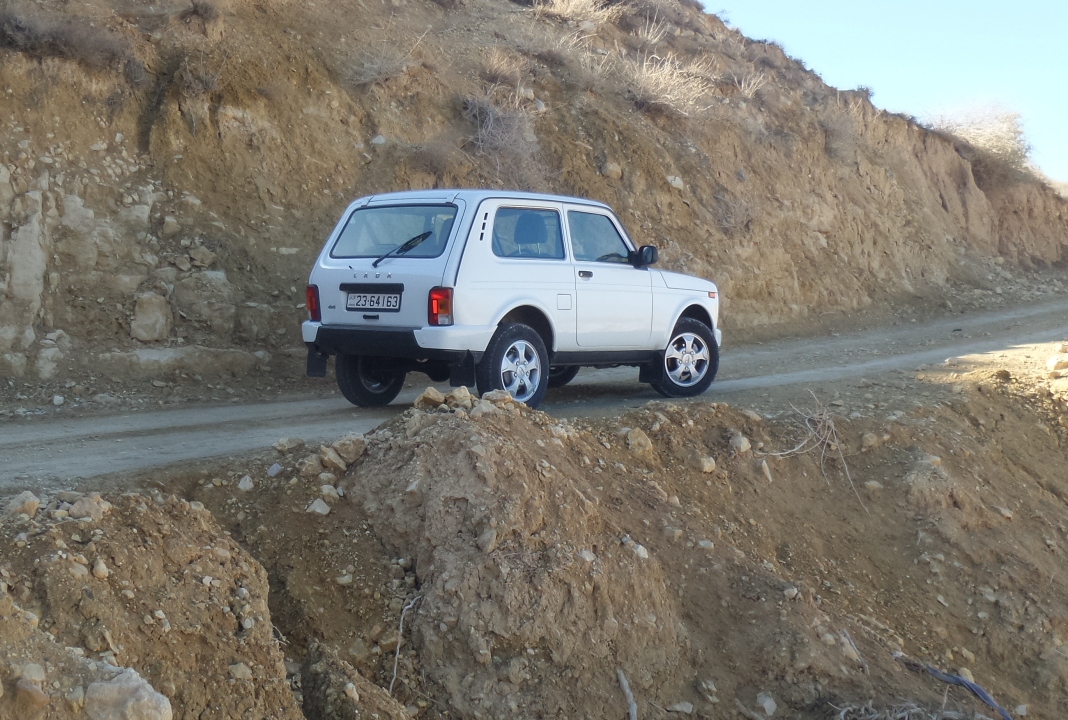
Uncomplicated and comparatively low-revving but effective and proven, the 4×4’s 1.7-liter naturally-aspirated 8-valve 4-cylinder engine develops 83HP at 5000rpm and 95lb/ft at 4000rpm. Eager to rev and mated aggressive gearing, the 4×4 is perky at lower speeds and in town, and pulls hard from idle to redline, and keeps up well with traffic.
Capable of 0-100km/h in 17-seconds, the 4×4 sounds slightly strained – with little insulation – as it reaches for its redline. Confidently accumulating pace at motorway speeds before trailing off as it nears its 142km/h top speed, the 4×4’s delivery is progressive, with accurate throttle control.

Driving rear wheels – under normal conditions – through a five-speed manual gearbox, the Lada’s gear lever snicks with satisfyingly firm, mechanical and precise movements, while clutch biting point is intuitive. Small and light at 1210kg, the 4×4 is engagingly fun when pushed hard.

With slim 185/75R16 tires, natural feeling steering, short wheelbase, big footprint and balanced chassis and weighting, it is agile and maneuverable, weaving confidently through narrow winding switchbacks. Turning on the proverbial dime into corners, the 4×4 leans somewhat, but is committed, grippy and is virtually immune from under- and over-steer in most circumstances.
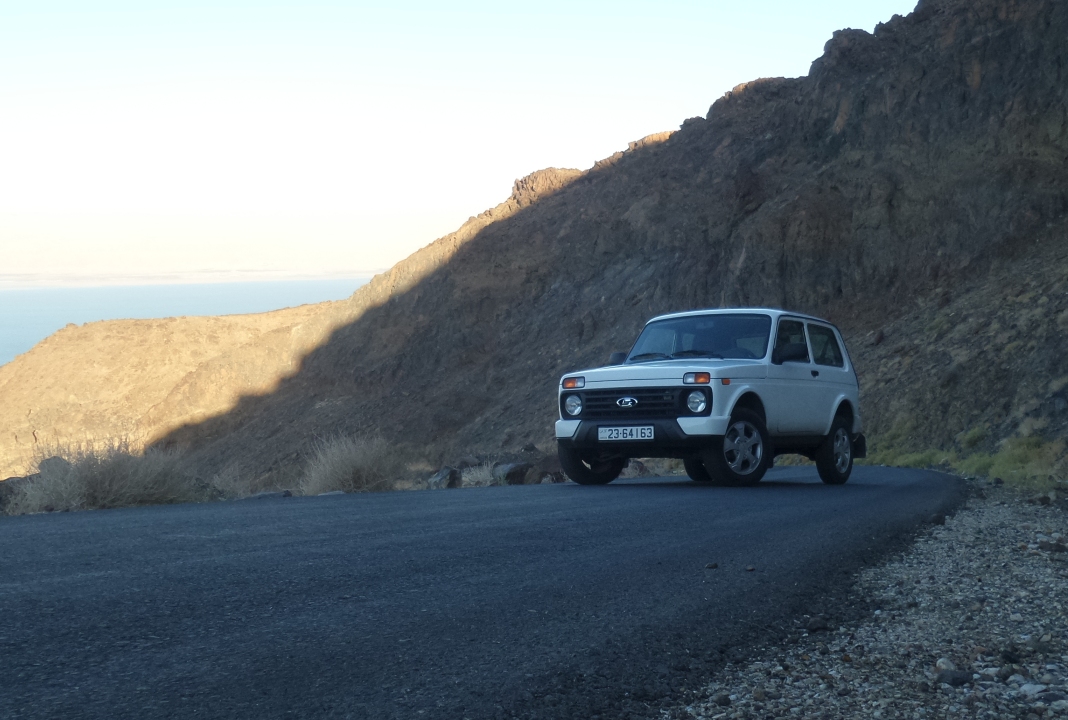
With unibody construction and independent double wishbone front and live-axle coil-spring rear suspension for comfort and capability, the 4×4 rides with forgiving fluency over rugged roads and the narrowest dirt routes alike, dispatching bumps and lumps with suppleness and buttoned down rebound control more sophisticated than many a modern car.
Engineered for high off-road abilities, it rugged lever-activated four-wheel-drive, low gear ratio transfer and locking rear differential keep it moving over steep inclines, low traction surfaces and through water and snow. Meanwhile, 213mm ground clearance and short overhangs provide generous approach, break-over and departure angles for difficult terrain.
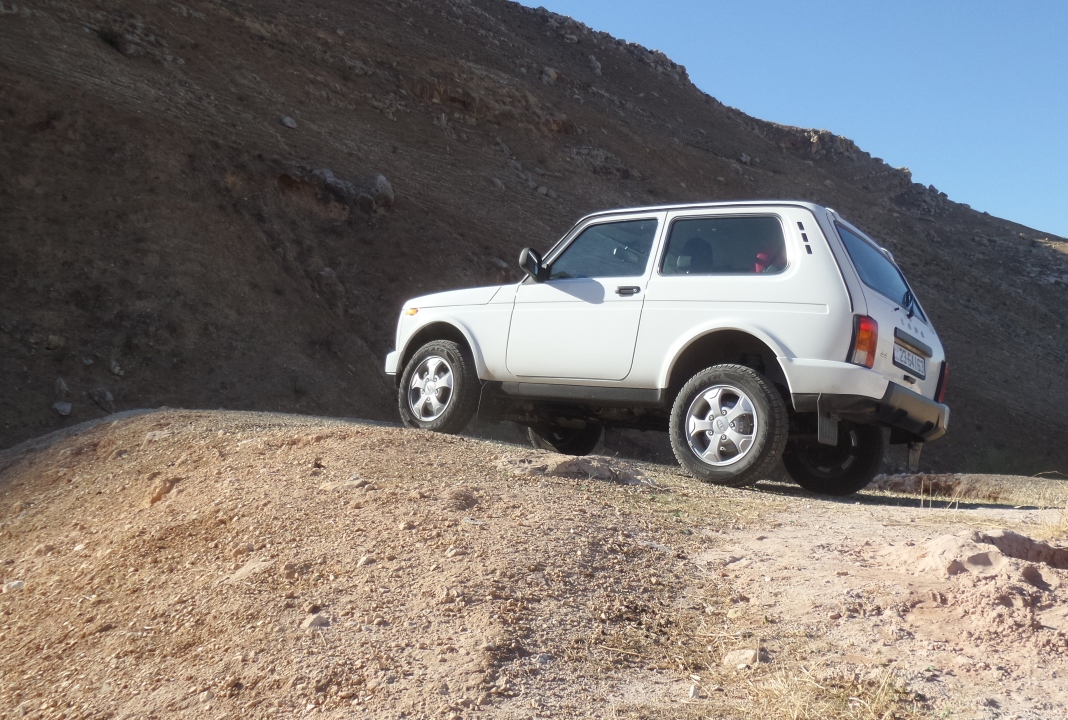
Unimpeachable off-road, maneuverable in tight confines at just 3640mm long and 1680mm wide and affordable at JD13,500, the 4×4 is a triumph of engineering minimalism over excess. Stable at speed and well-packaged, the 4×4’s boxy design provides good space utilization for passengers and cargo, including good headroom and minimum/maximum 263-/982-litre luggage volume.
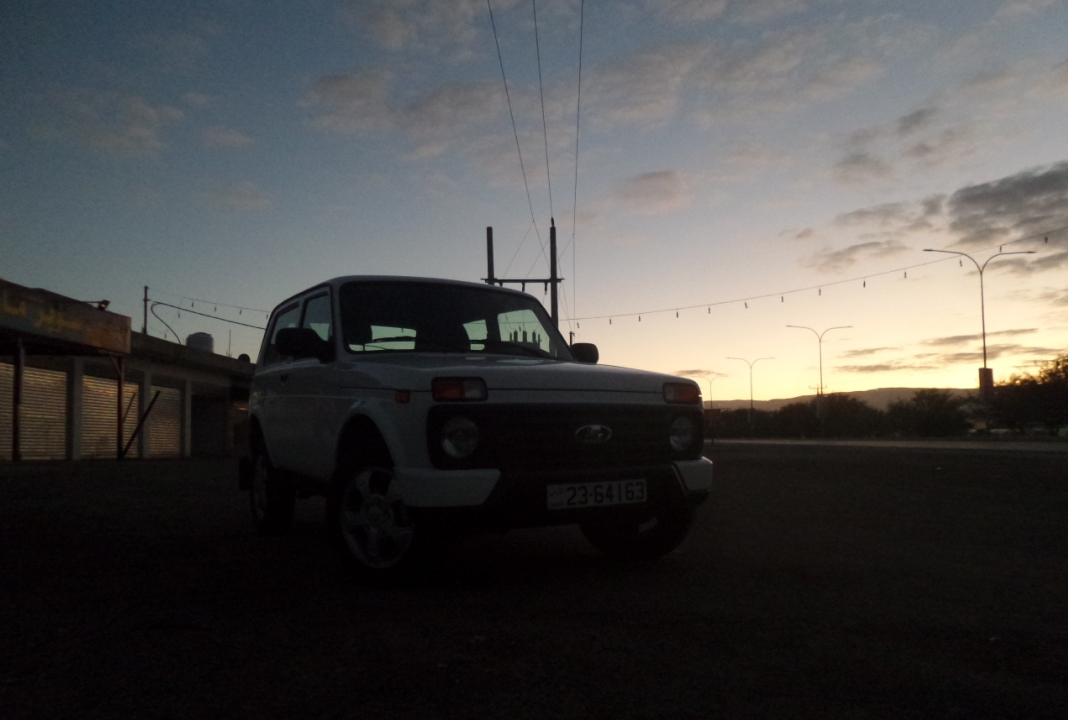
Comparatively Spartan inside, the its comfortable cabin uses tough hard plastics and clear instrumentation, but now features electric windows and two-speed A/C. Seating is upright and visibility excellent, but better driver’s seat support, steering reach adjustment and rear headrests would be welcome additions.
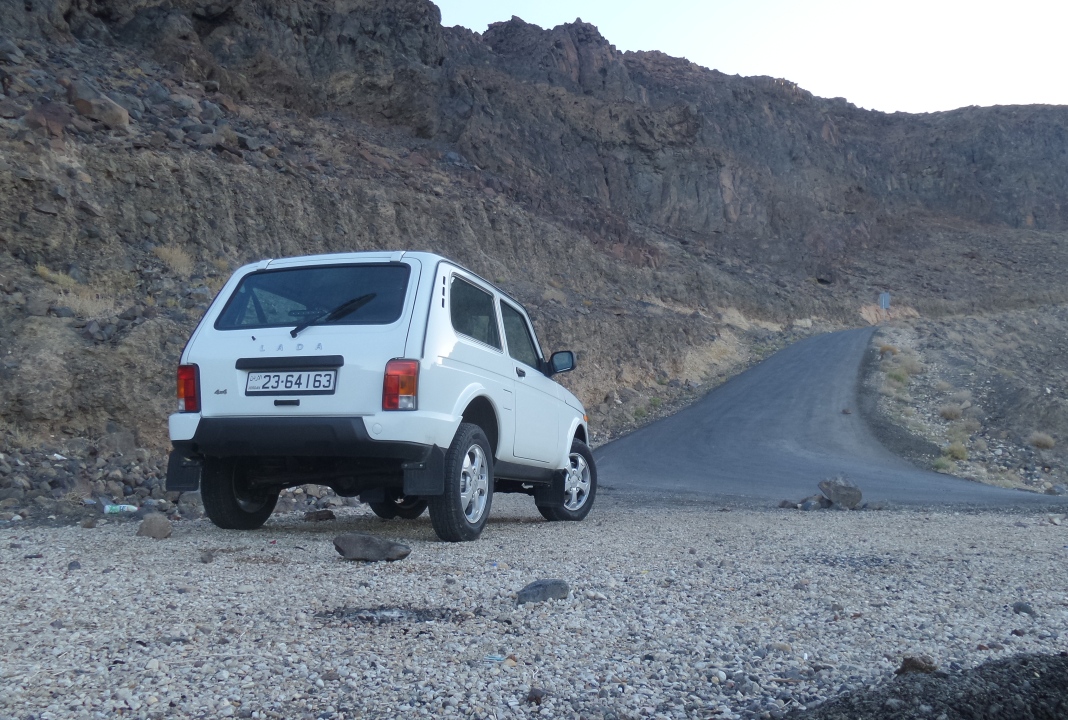 Specifications: Lada 4×4 Urban
Specifications: Lada 4×4 Urban
- Engine: 1.7-litre, 8-valves, 4-cylinders
- Gearbox: 5-speed manual, four-wheel-drive
- Driveline: low gear transfer, locking rear differential
- Power, BHP (PS) [kW]: 82 (83) [61] @5000rpm
- Torque, lb/ft (Nm): 95 (129) @4000rpm
- 0-100km/h: 17-seconds
- Top speed: 142km/h
- Fuel consumption: 9.9-litres/100km
- Length: 3640mm
- Width: 1680mm
- Height: 1640mm
- Wheelbase: 2200mm
- Ground clearance: 213mm
- Luggage: 263-/982-litres
- Weight: 1210kg
- Suspension, F/R: Double wishbones / trailing arms, panhard rod
- Turning circle: 11-meters
- Tires: 185/75R16
- Price, on-the-road: JD13,500
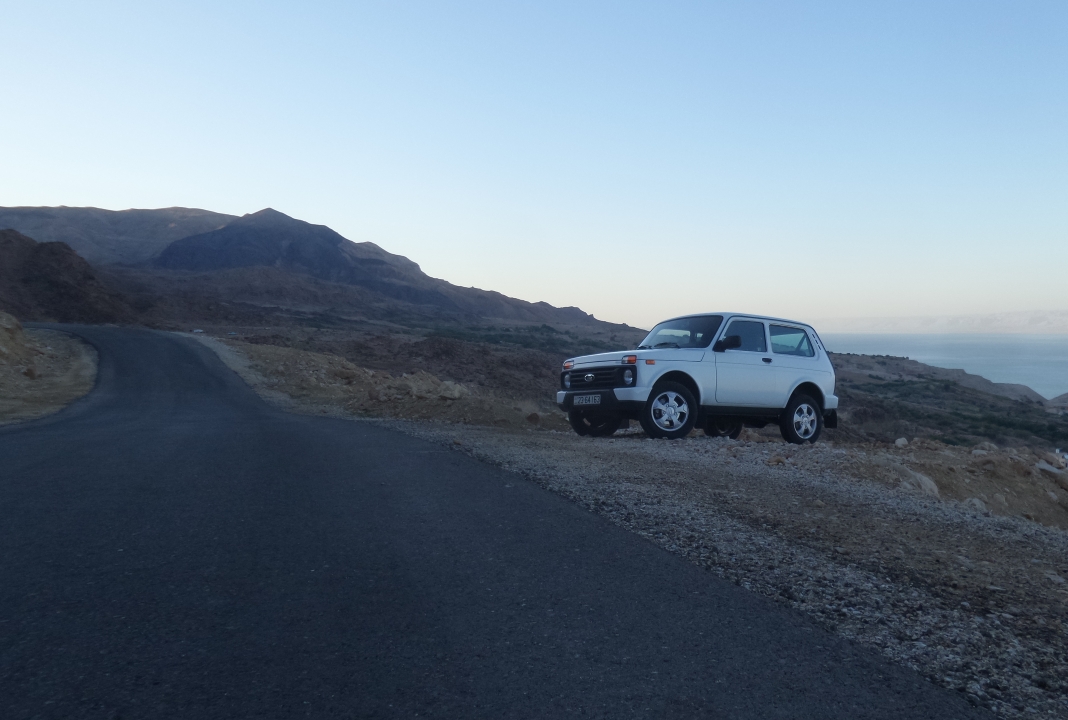
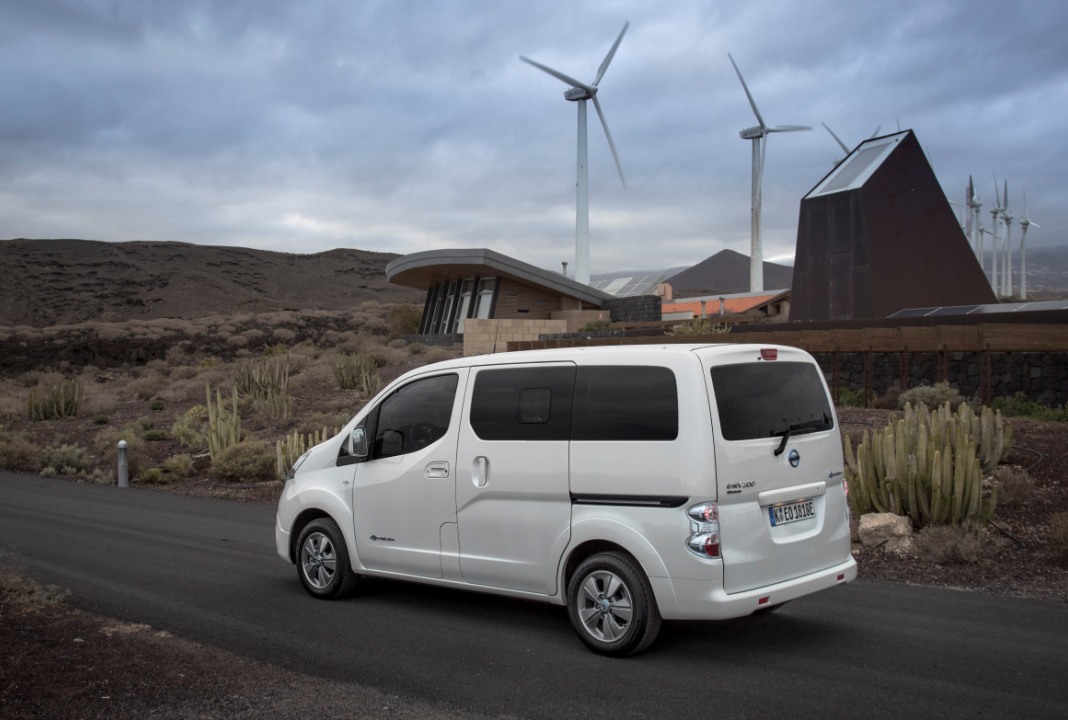 Powered by an AC synchronous electric motor driving the front wheels through a single-speed automatic gearbox, the e-NV200 develops 187lb/ft torque and 107BHP, which allows it to carry its 1689kg mass through 0-100km/h in 14-seconds. With its torque instantly available from moving off, the e-NV200 seems quicker and more responsive than headline figures suggest. With torque so readily and immediately available, the e-NV200’s accelerator pedal can however more gradually dial in power and responsiveness for a more fluid and intuitive experience.
Nearly silent operating, a distant electric motor whine lends more involvement when the e-NV200 is pressed hard. Confident and responsive on inclines at moderate speeds, the e-NV200 rate of acceleration diminishes somewhat as it nears its official 123km/h top speed. Driven in strong head winds on strong inclines on coastal highways in Tenerife, Spain, the e-NV200 regularly exceeded its top speed by some 10km/h. Updated for further single charge driving without increasing the size of its 40Kw battery pack, the e-NV200’s claimed range is 301km in the city and 200km on the combined cycle.
A potentially popular people carrier for Jordan, the e-NV200’s immediate torque and increased range would be well-suited to Amman’s hilly topography. However, and as with all electric vehicles, generous range estimates are reduced with aggressive driving, accelerator input and high speed. Meanwhile, the e-NV200 charging time, depending on conditions is quoted at 40-60 minutes from low battery alert to 80% charge, with a high capacity 50Kw charger, when available. More commonly, its 7Kw charger takes 7.5-hours for a full charge. Domestic electric charging is possible, but hardly convenient at 21.5-hours.
Powered by an AC synchronous electric motor driving the front wheels through a single-speed automatic gearbox, the e-NV200 develops 187lb/ft torque and 107BHP, which allows it to carry its 1689kg mass through 0-100km/h in 14-seconds. With its torque instantly available from moving off, the e-NV200 seems quicker and more responsive than headline figures suggest. With torque so readily and immediately available, the e-NV200’s accelerator pedal can however more gradually dial in power and responsiveness for a more fluid and intuitive experience.
Nearly silent operating, a distant electric motor whine lends more involvement when the e-NV200 is pressed hard. Confident and responsive on inclines at moderate speeds, the e-NV200 rate of acceleration diminishes somewhat as it nears its official 123km/h top speed. Driven in strong head winds on strong inclines on coastal highways in Tenerife, Spain, the e-NV200 regularly exceeded its top speed by some 10km/h. Updated for further single charge driving without increasing the size of its 40Kw battery pack, the e-NV200’s claimed range is 301km in the city and 200km on the combined cycle.
A potentially popular people carrier for Jordan, the e-NV200’s immediate torque and increased range would be well-suited to Amman’s hilly topography. However, and as with all electric vehicles, generous range estimates are reduced with aggressive driving, accelerator input and high speed. Meanwhile, the e-NV200 charging time, depending on conditions is quoted at 40-60 minutes from low battery alert to 80% charge, with a high capacity 50Kw charger, when available. More commonly, its 7Kw charger takes 7.5-hours for a full charge. Domestic electric charging is possible, but hardly convenient at 21.5-hours.
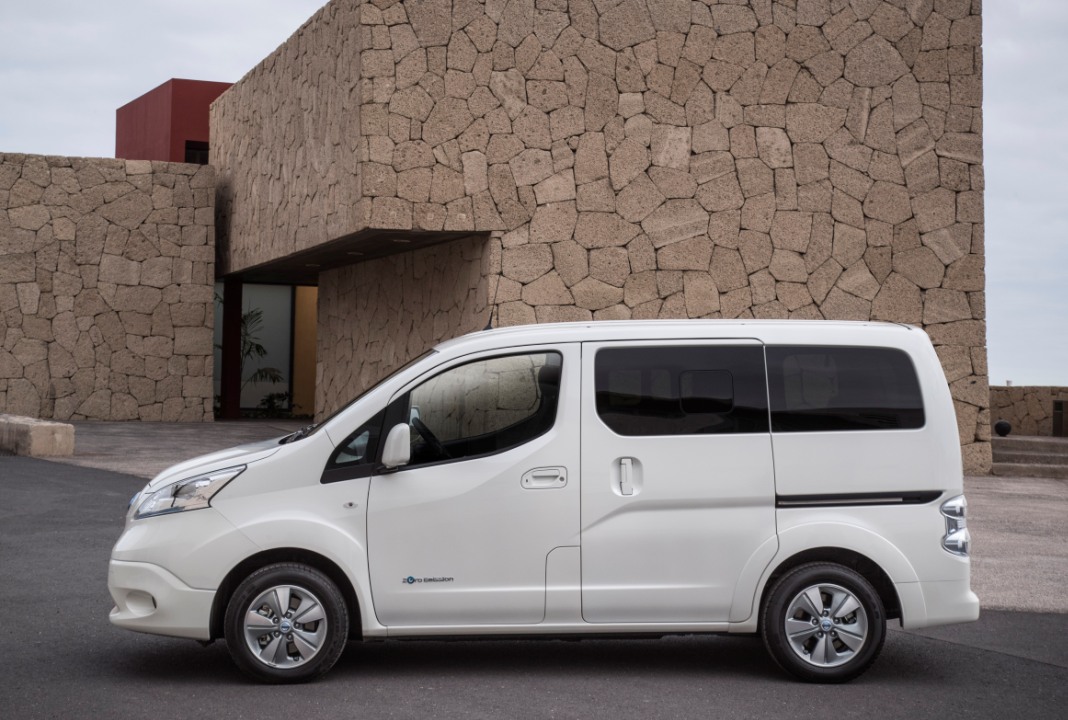 A comfortable ride with MacPherson strut front suspension and slim and supple 185/65R15 tyres, the e-NV200 well absorbs road imperfections and is refined and quiet inside. Settled and smooth at moderate speeds, it can feel less settled at high speed and in strong crosswinds, where its rugged torsion beam and leaf spring would be better planted with more cargo or passengers, while its tall flanks – good for space efficiency – mean that one has to correct steering input to counteract heavy wind forces. Meanwhile ventilated disc brakes all round perform well and are supported by electric regenerative braking force.
Relatively narrow and with terrific front visibility and commanding driving position, the e-NV200 is easy to thread through narrow roads. Steering is light and easy, while the slim front tyres can be overpowered with sudden torque, but however give a good picture of the road for such a vehicle. Understeer through tight hard driven corners is corrected by easing off power or by stability control systems. Inside, the e-NV200 features comfortable seats and generous passenger space, while fit, finish and materials are well-assembled, practically designed and pleasant, yet not particularly exotic.
Accessible through large and wide swing angle front doors, big sliding side doors and with large rear cargo loading access and 523mm lift-over , the e-NV200 Evalia is Practical and spacious. Accommodating seven passengers comfortably including a minimum of 440-litres, and features two spacious individual front seats, 40/60 split folding three-seat middle bench, and two side-mounted fold down seats in the rear cargo area. With rear rows folded, the Evalia can also accommodate up to 3,000-litres. Meanwhile numerous storage spaces, large side mirrors, colour reversing monitor and an intuitive infotainment system are also useful.
A comfortable ride with MacPherson strut front suspension and slim and supple 185/65R15 tyres, the e-NV200 well absorbs road imperfections and is refined and quiet inside. Settled and smooth at moderate speeds, it can feel less settled at high speed and in strong crosswinds, where its rugged torsion beam and leaf spring would be better planted with more cargo or passengers, while its tall flanks – good for space efficiency – mean that one has to correct steering input to counteract heavy wind forces. Meanwhile ventilated disc brakes all round perform well and are supported by electric regenerative braking force.
Relatively narrow and with terrific front visibility and commanding driving position, the e-NV200 is easy to thread through narrow roads. Steering is light and easy, while the slim front tyres can be overpowered with sudden torque, but however give a good picture of the road for such a vehicle. Understeer through tight hard driven corners is corrected by easing off power or by stability control systems. Inside, the e-NV200 features comfortable seats and generous passenger space, while fit, finish and materials are well-assembled, practically designed and pleasant, yet not particularly exotic.
Accessible through large and wide swing angle front doors, big sliding side doors and with large rear cargo loading access and 523mm lift-over , the e-NV200 Evalia is Practical and spacious. Accommodating seven passengers comfortably including a minimum of 440-litres, and features two spacious individual front seats, 40/60 split folding three-seat middle bench, and two side-mounted fold down seats in the rear cargo area. With rear rows folded, the Evalia can also accommodate up to 3,000-litres. Meanwhile numerous storage spaces, large side mirrors, colour reversing monitor and an intuitive infotainment system are also useful.
 Specifications: Nissan e-NV200
Specifications: Nissan e-NV200
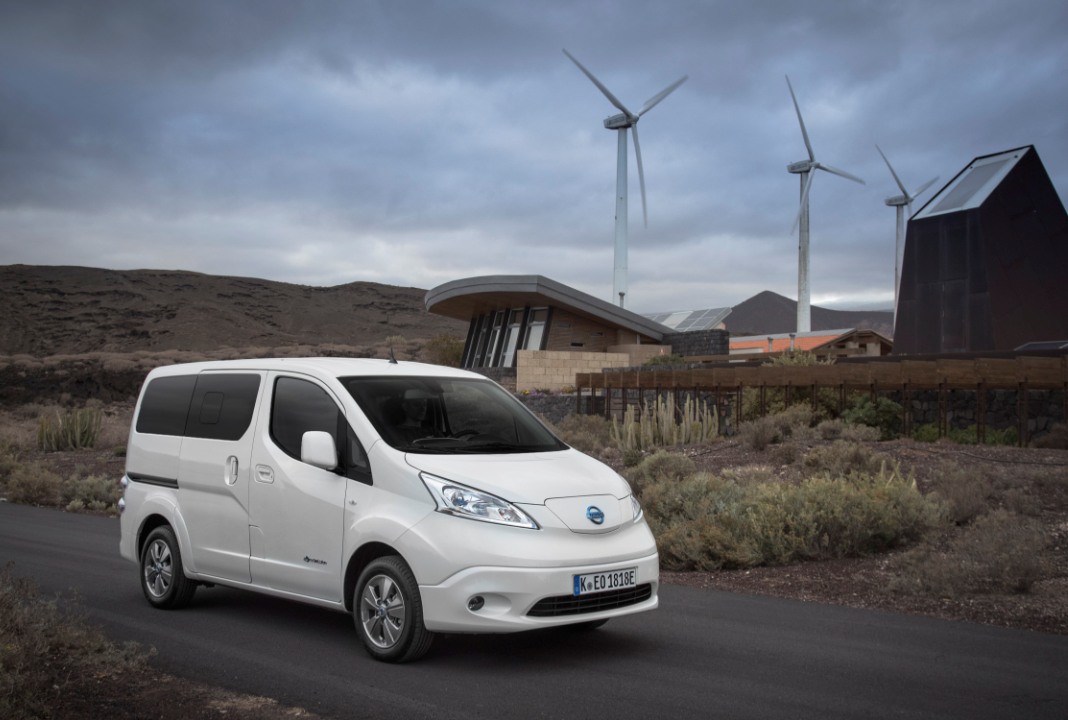


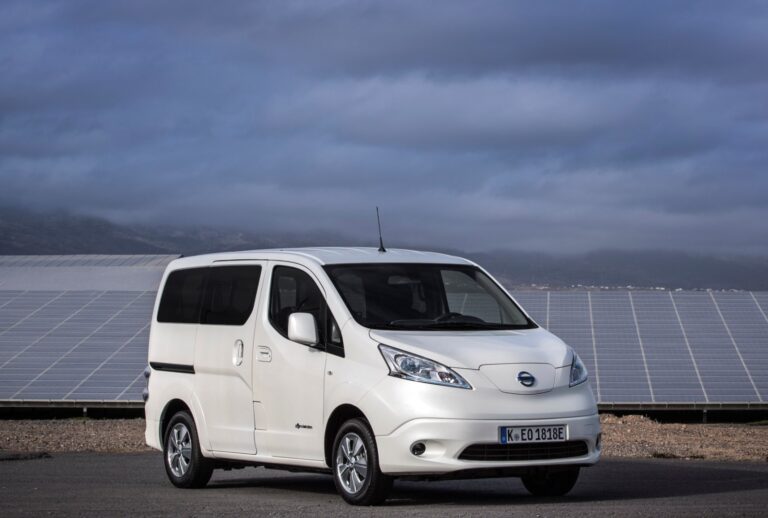
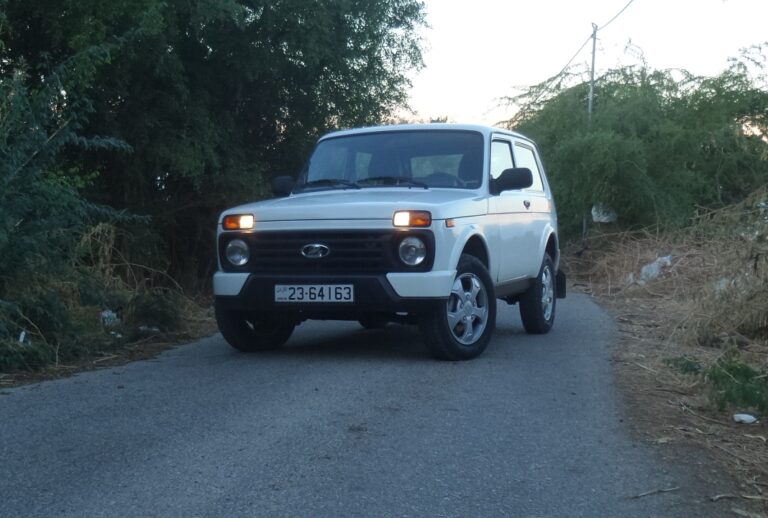






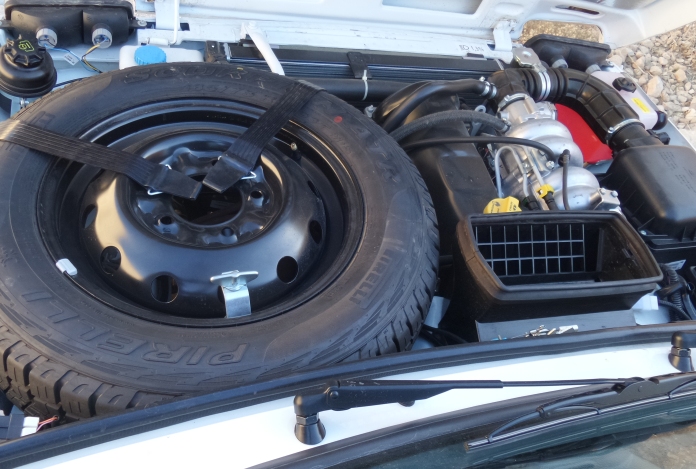




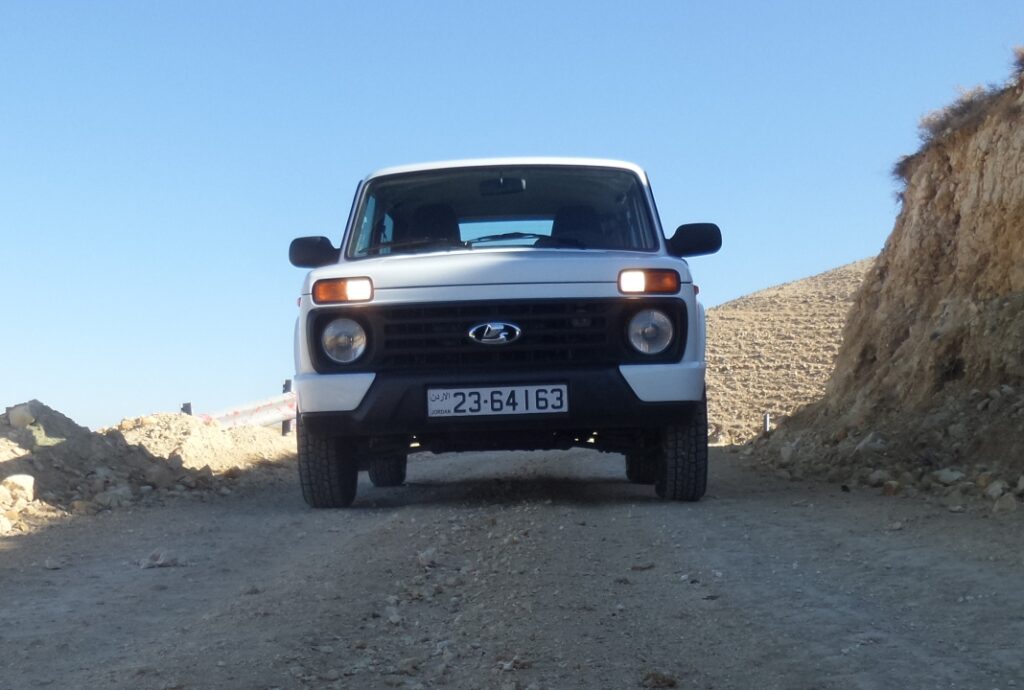
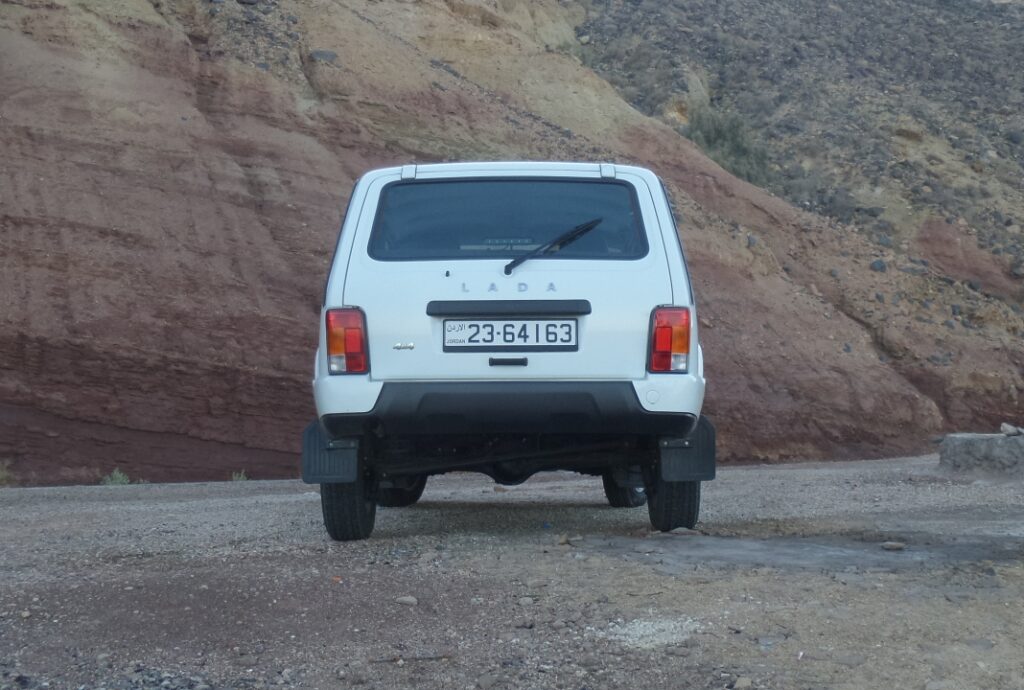




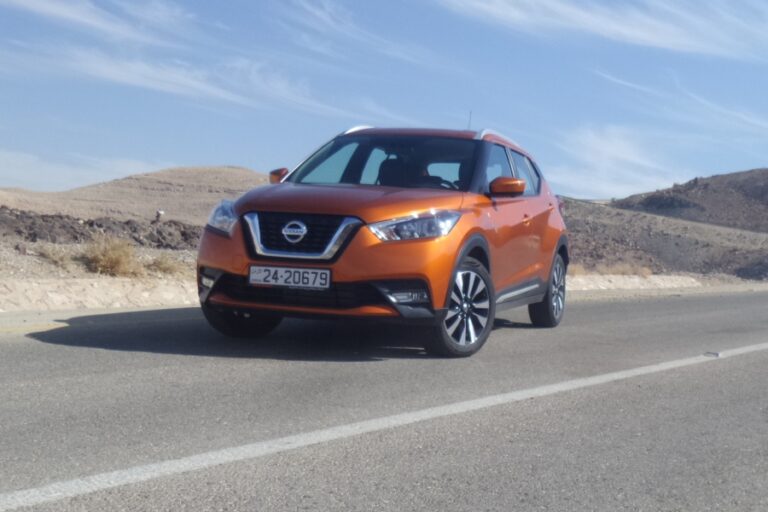
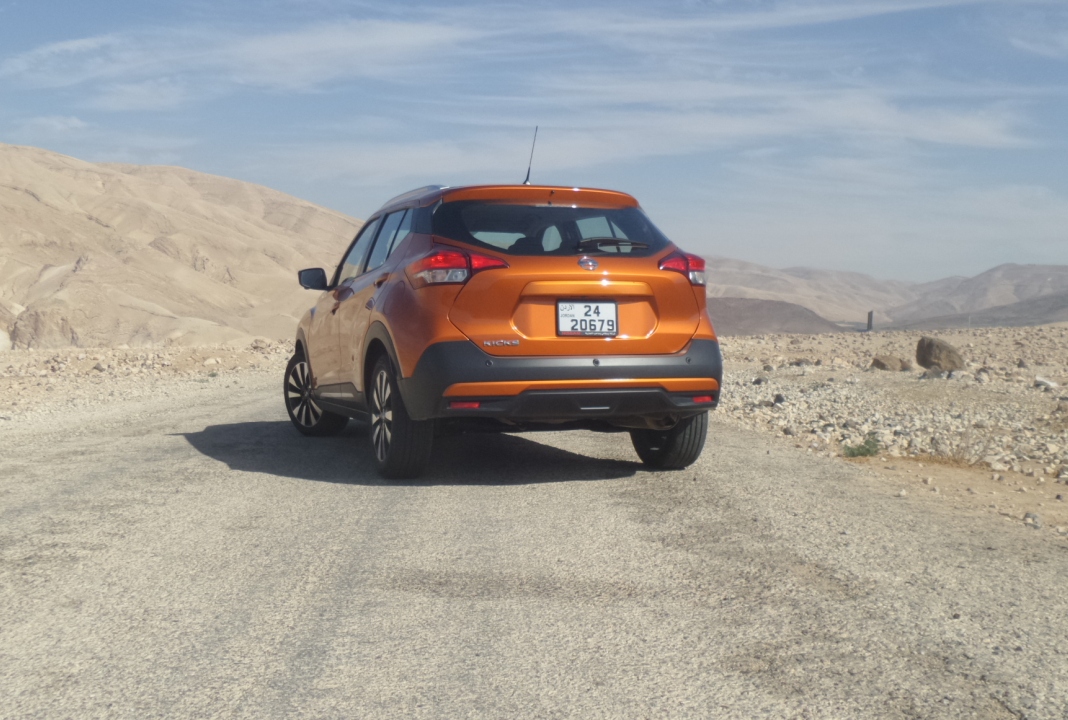 Powered by a naturally-aspirated 1.6-litre four-cylinder developing 118BHP at somewhere between 5,500-6,000rpm and 110lb/ft at around 4,000rpm, the Kicks’ engine is progressive in delivery and just right in refinement and sound insulation, without being too distant. As responsive from idle and versatile in mid-range as it needs to be for keeping a good pace, the Kicks accelerates through 0-100km/h in 11.5-seconds, and returns both a good headline combined fuel consumption rating of 6.1l/100km, and is frugal in real world driving.
A perky engine that is happy to rev high in its own right, the Kicks’ 1.6 can however initially seem unwilling to rev all the way to 6,000rpm, owing to its continuously variable transmission. Ultra smooth and efficient in normal driving, CVT does however prefer to keep a car in its more efficient low and mid speed rev range, and is not as clear cut in changing ratios when more power is needed. However, Nissan’s CVT is one of the better ones there are.
Seemingly ‘learning’ and adapting its ratio shift algorithm to ones driving style after a short drive, the Kicks’ throttle becomes more responsive as more aggressive. With lower ratios called up more often and held for longer periods of time to allow the engine to rev more freely to just past 6,000rpm, the Kicks’ sportier transmission profile better handles inclines and suits its sporty driving, but one would still have preferred the Latin American spec manual gearbox option. Meanwhile front disc and rear drum brakes proved reassuringly effective even on steep descents.
Powered by a naturally-aspirated 1.6-litre four-cylinder developing 118BHP at somewhere between 5,500-6,000rpm and 110lb/ft at around 4,000rpm, the Kicks’ engine is progressive in delivery and just right in refinement and sound insulation, without being too distant. As responsive from idle and versatile in mid-range as it needs to be for keeping a good pace, the Kicks accelerates through 0-100km/h in 11.5-seconds, and returns both a good headline combined fuel consumption rating of 6.1l/100km, and is frugal in real world driving.
A perky engine that is happy to rev high in its own right, the Kicks’ 1.6 can however initially seem unwilling to rev all the way to 6,000rpm, owing to its continuously variable transmission. Ultra smooth and efficient in normal driving, CVT does however prefer to keep a car in its more efficient low and mid speed rev range, and is not as clear cut in changing ratios when more power is needed. However, Nissan’s CVT is one of the better ones there are.
Seemingly ‘learning’ and adapting its ratio shift algorithm to ones driving style after a short drive, the Kicks’ throttle becomes more responsive as more aggressive. With lower ratios called up more often and held for longer periods of time to allow the engine to rev more freely to just past 6,000rpm, the Kicks’ sportier transmission profile better handles inclines and suits its sporty driving, but one would still have preferred the Latin American spec manual gearbox option. Meanwhile front disc and rear drum brakes proved reassuringly effective even on steep descents.
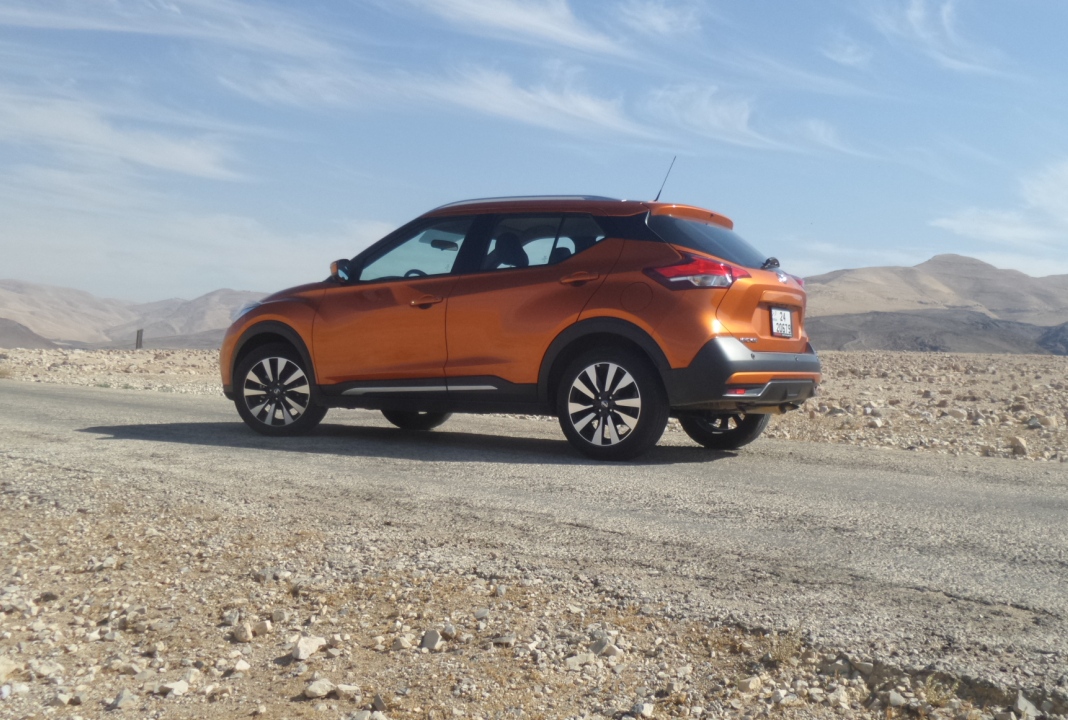 Despite high ground clearance and aggressive SUV-like design, the Kicks is true to its hatchback-like underpinnings and size in the way it handles with eager agility and maneuverability. Fun and frisky through narrow winding roads, the Kicks’ electric-assisted steering is direct, quick and precise yet refined and stable at speed. Flickable and crisp on turn-in, the Kicks’ steering provides decent feel owing to comparatively slim 205/55R17 tyres. Meanwhile front grip is assured, with understeer apparent only if pushed too fast and tight into a corner.
Riding on front strut and rear torsion beam suspension and weighing in at just 1,135kg, as driven, the Kicks is nippy, tidy and keen to adjust a cornering line on throttle or to pivot weight with a dab of the brakes. Though riding high, it feels nimble and alert, while damping is taut and provides good rebound control. Finding a happy medium between firmness and comfort, it well-controls body lean through corners but rides forgivingly if slightly busy over imperfections and smoothly at speed.
Well-packaged and accommodating, the Kicks could have freed up more space if the centre console were removed. Stylish and ergonomic with sporty flat-bottom steering wheel, it features soft textures prominently, while some hard plastics for affordability. Driving position is alert, upright, supportive and with good road visibility, while a clear instrument cluster features an analogue speedometer and configurable digital pod for rev counter and other information. Driven in well-equipped top SL spec, the Kicks features a rear and around view monitor with Moving Object Detection.
Despite high ground clearance and aggressive SUV-like design, the Kicks is true to its hatchback-like underpinnings and size in the way it handles with eager agility and maneuverability. Fun and frisky through narrow winding roads, the Kicks’ electric-assisted steering is direct, quick and precise yet refined and stable at speed. Flickable and crisp on turn-in, the Kicks’ steering provides decent feel owing to comparatively slim 205/55R17 tyres. Meanwhile front grip is assured, with understeer apparent only if pushed too fast and tight into a corner.
Riding on front strut and rear torsion beam suspension and weighing in at just 1,135kg, as driven, the Kicks is nippy, tidy and keen to adjust a cornering line on throttle or to pivot weight with a dab of the brakes. Though riding high, it feels nimble and alert, while damping is taut and provides good rebound control. Finding a happy medium between firmness and comfort, it well-controls body lean through corners but rides forgivingly if slightly busy over imperfections and smoothly at speed.
Well-packaged and accommodating, the Kicks could have freed up more space if the centre console were removed. Stylish and ergonomic with sporty flat-bottom steering wheel, it features soft textures prominently, while some hard plastics for affordability. Driving position is alert, upright, supportive and with good road visibility, while a clear instrument cluster features an analogue speedometer and configurable digital pod for rev counter and other information. Driven in well-equipped top SL spec, the Kicks features a rear and around view monitor with Moving Object Detection.
 Specifications: Nissan Kicks
Specifications: Nissan Kicks

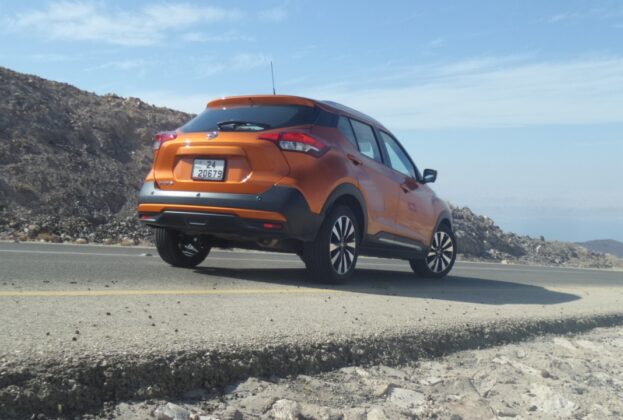
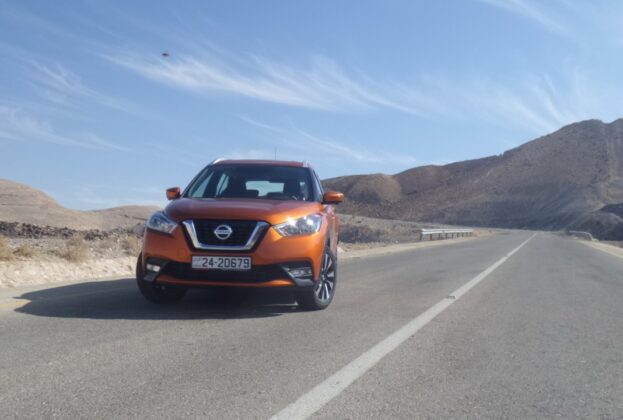
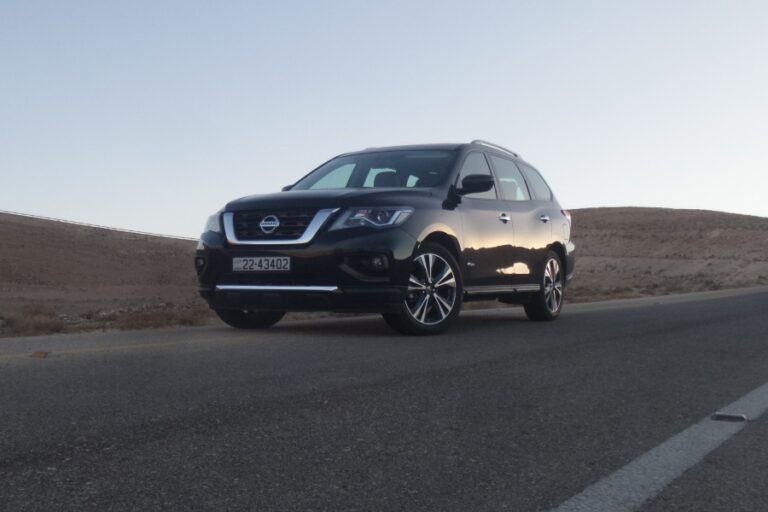
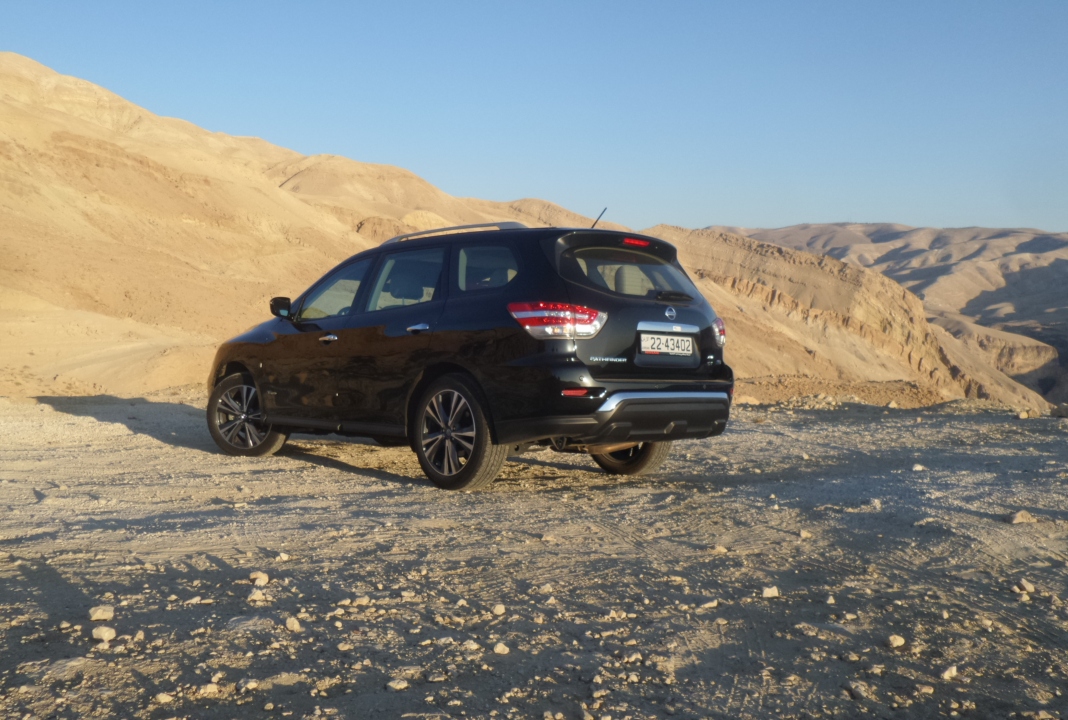 Unchanged under the skin, the Pathfinder Hybrid is powered by a supercharged 2.5-litre 4-cylinder engine developing 230BHP at 560rpm and 243lb/ft at 3,600rpm, and backed up by a 20BHP and 29lb/ft electric motor, with batteries generating electricity through the combustion engine and regenerative braking. With a total system output of 250BHP and 246lb/ft, the Pathfinder Hybrid hauls its estimated 2071kg mass responsively and confidently off-the line owing to its mechanically-driven supercharge boost and instant electric motor delivery. Accelerating from standstill to 97km/h in approximately 8-seconds, it returns comparatively frugal 7.4l/100km, combined fuel consumption.
Responsive and consistently muscular throughout, the Pathfinder Hybrid’s petrol engine is a fantastic unit in its own right that should be used in more Niossan products. Eager and capable of 6,200rpm, the supercharged engine’s shift point rarely rises above 5,600rpm owing to the continuously variable transmission’s (CVT) characteristic maintain engine speed within its most efficient range. Well-suited to the comfortable Pathfinder Hybrid’s family motoring duties, its CVT is silky smooth and seamless in delivery, yet a traditional manual or automatic would better suit the supercharged engine were it in another application.
Well-integrating petrol and electric motor better than many other hybrids, the Pathfinder Hybrid is smooth and refined to drive, as is its’ CVT, which however does with only Drive and Low modes, rather than featuring specific pre-set ratios to simulate a traditional gearbox, as some other Nissans. Primarily driving the front wheels and sending power to the rear as necessary in Auto mode, the Pathfinder Hybrid also features a lockable four-wheel-drive mode for low traction surfaces. A front-drive mode also offers better efficiency and torque steer thrills when launching with a heavy right foot from standstill.
Unchanged under the skin, the Pathfinder Hybrid is powered by a supercharged 2.5-litre 4-cylinder engine developing 230BHP at 560rpm and 243lb/ft at 3,600rpm, and backed up by a 20BHP and 29lb/ft electric motor, with batteries generating electricity through the combustion engine and regenerative braking. With a total system output of 250BHP and 246lb/ft, the Pathfinder Hybrid hauls its estimated 2071kg mass responsively and confidently off-the line owing to its mechanically-driven supercharge boost and instant electric motor delivery. Accelerating from standstill to 97km/h in approximately 8-seconds, it returns comparatively frugal 7.4l/100km, combined fuel consumption.
Responsive and consistently muscular throughout, the Pathfinder Hybrid’s petrol engine is a fantastic unit in its own right that should be used in more Niossan products. Eager and capable of 6,200rpm, the supercharged engine’s shift point rarely rises above 5,600rpm owing to the continuously variable transmission’s (CVT) characteristic maintain engine speed within its most efficient range. Well-suited to the comfortable Pathfinder Hybrid’s family motoring duties, its CVT is silky smooth and seamless in delivery, yet a traditional manual or automatic would better suit the supercharged engine were it in another application.
Well-integrating petrol and electric motor better than many other hybrids, the Pathfinder Hybrid is smooth and refined to drive, as is its’ CVT, which however does with only Drive and Low modes, rather than featuring specific pre-set ratios to simulate a traditional gearbox, as some other Nissans. Primarily driving the front wheels and sending power to the rear as necessary in Auto mode, the Pathfinder Hybrid also features a lockable four-wheel-drive mode for low traction surfaces. A front-drive mode also offers better efficiency and torque steer thrills when launching with a heavy right foot from standstill.
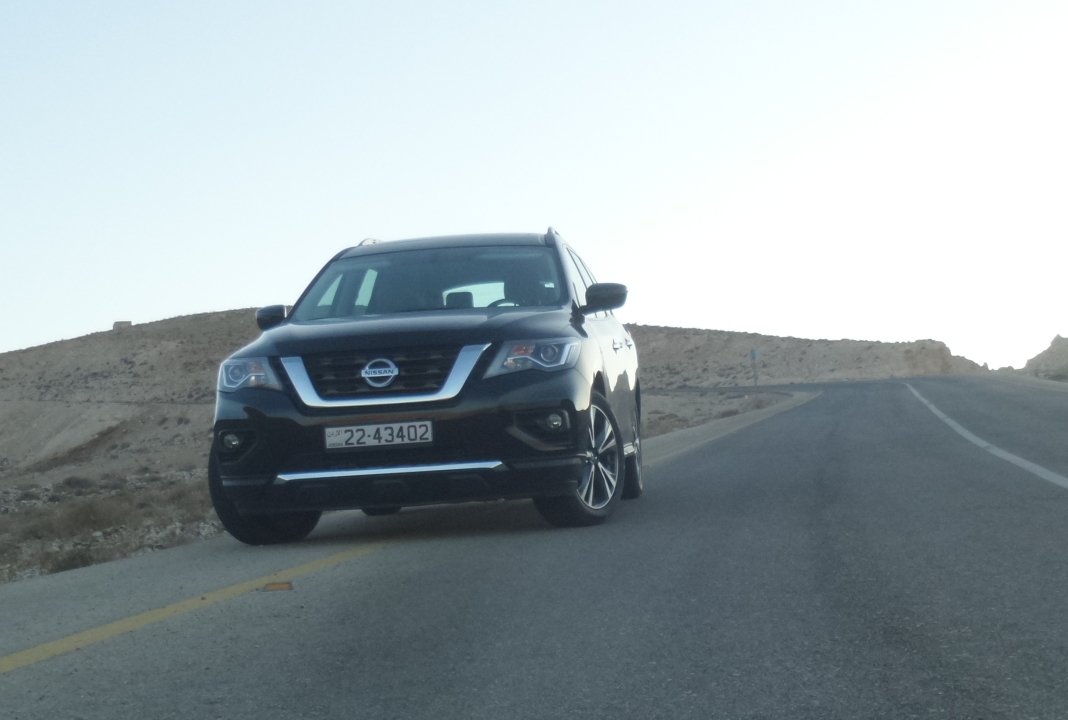 Stable, settled and confident on highway, the Pathfinder Hybrid comfortably absorbs lumps, bumps and imperfections. Sprung on the supple side rather than firm, the Pathfinder Hybrid pitches slightly on crests, dives a bit on heavy sudden braking and leans somewhat through tight and fast corners. However, this is all to a slight degree, and nevertheless doesn’t detract from its balanced chassis and buttoned down on rebound. It is also more eager and tidy into corners than expected eager than expected, despite its weight, comfort levels and front-biased weighting and architecture.
Not exactly a sports SUV like its Infiniti QX70 relation, the Pathfinder Hybrid’s handling is however reassuringly competent and predictable. Tidy into and gripping hard through corners, it well signals its dynamic limitations and through corners, and progressively builds up lateral acceleration. When cornering, both its chassis and light and user-friendly steering load up in a predictable manner, with the latter weighing up nicely in corners, through which its delivers natural feel and feedback for its segment. Meanwhile visibility is decent for a car of this size and is aided by a rear view camera and sensors.
Well-equipped in SV trim level as tested, the Pathfinder Hybrid features panoramic sunroof, Bluetooth phone integration, 6-speaker audio system, electronic brakeforce distribution, tri-zone climate control, two airbags and Isofix child seat anchors, but front parking sensors, sideboards and blind spot detection systems would have also been welcome given its size and height. A refined, comfortable and hard wearing cabin with plenty of space, the Pathfinder accommodates seven passengers and features versatile tilt, fold and sliding split Latch and Glide middle row seats, which allow generous access to the third row even with a child seat fitted.
Stable, settled and confident on highway, the Pathfinder Hybrid comfortably absorbs lumps, bumps and imperfections. Sprung on the supple side rather than firm, the Pathfinder Hybrid pitches slightly on crests, dives a bit on heavy sudden braking and leans somewhat through tight and fast corners. However, this is all to a slight degree, and nevertheless doesn’t detract from its balanced chassis and buttoned down on rebound. It is also more eager and tidy into corners than expected eager than expected, despite its weight, comfort levels and front-biased weighting and architecture.
Not exactly a sports SUV like its Infiniti QX70 relation, the Pathfinder Hybrid’s handling is however reassuringly competent and predictable. Tidy into and gripping hard through corners, it well signals its dynamic limitations and through corners, and progressively builds up lateral acceleration. When cornering, both its chassis and light and user-friendly steering load up in a predictable manner, with the latter weighing up nicely in corners, through which its delivers natural feel and feedback for its segment. Meanwhile visibility is decent for a car of this size and is aided by a rear view camera and sensors.
Well-equipped in SV trim level as tested, the Pathfinder Hybrid features panoramic sunroof, Bluetooth phone integration, 6-speaker audio system, electronic brakeforce distribution, tri-zone climate control, two airbags and Isofix child seat anchors, but front parking sensors, sideboards and blind spot detection systems would have also been welcome given its size and height. A refined, comfortable and hard wearing cabin with plenty of space, the Pathfinder accommodates seven passengers and features versatile tilt, fold and sliding split Latch and Glide middle row seats, which allow generous access to the third row even with a child seat fitted.
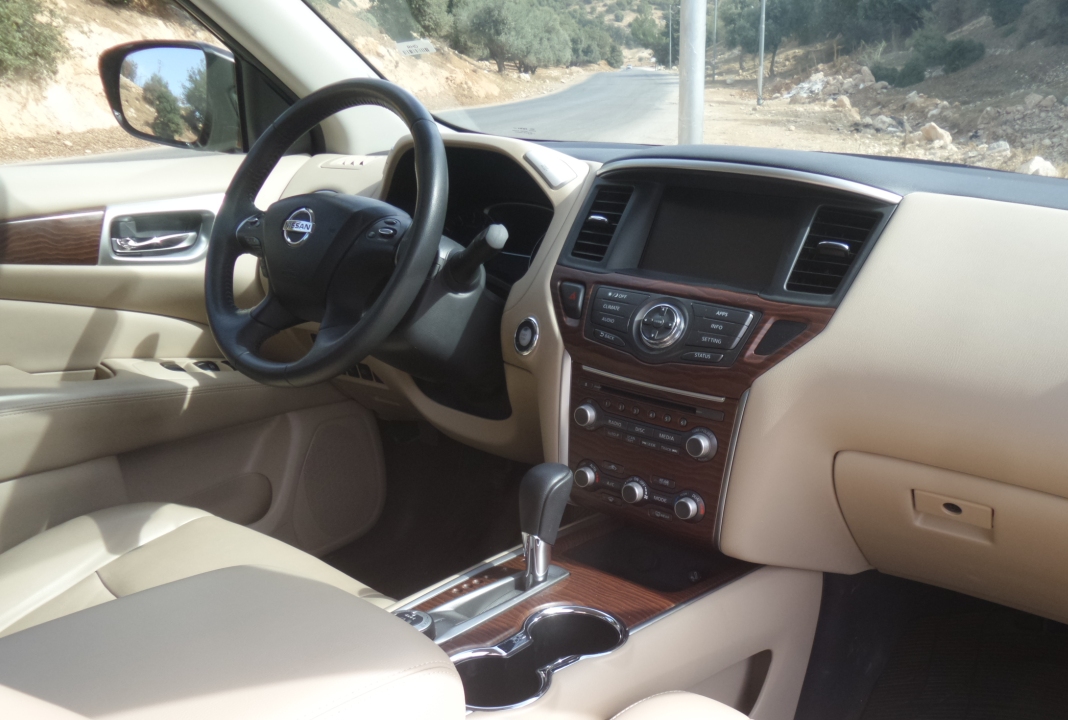 Specifications: Nissan Pathfinder Hybrid SV
Specifications: Nissan Pathfinder Hybrid SV
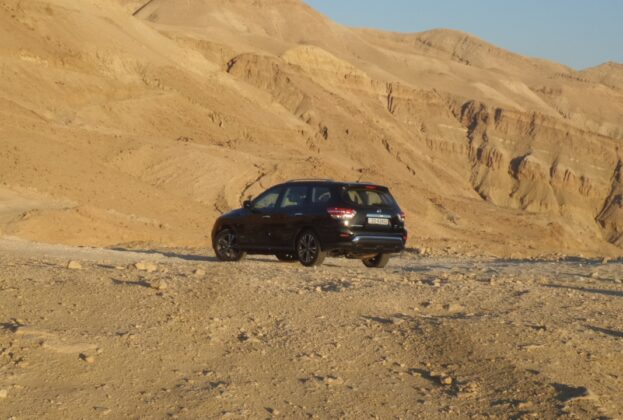
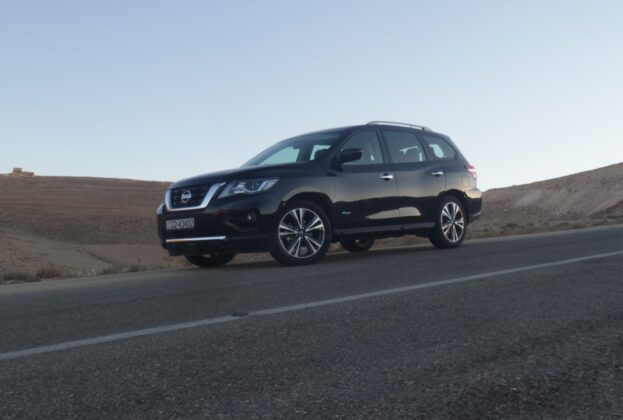
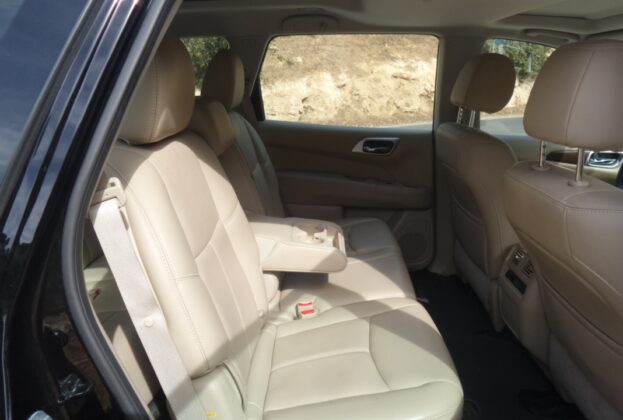
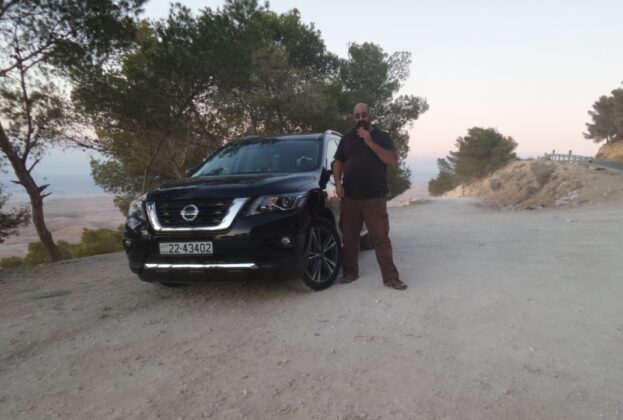
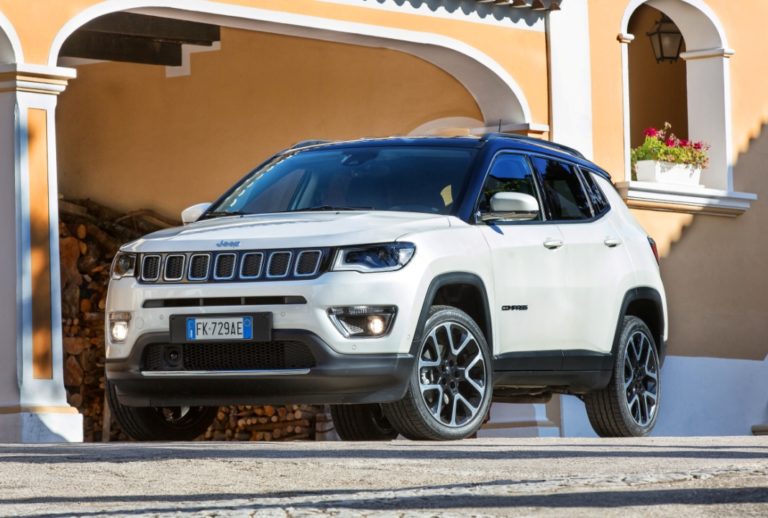



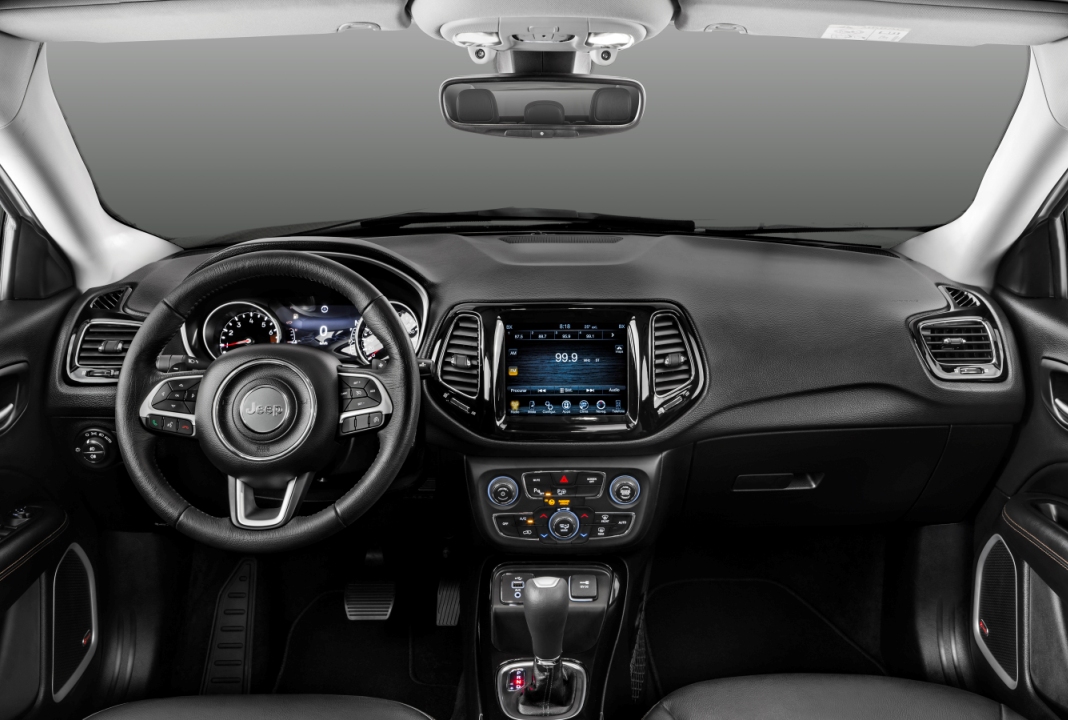


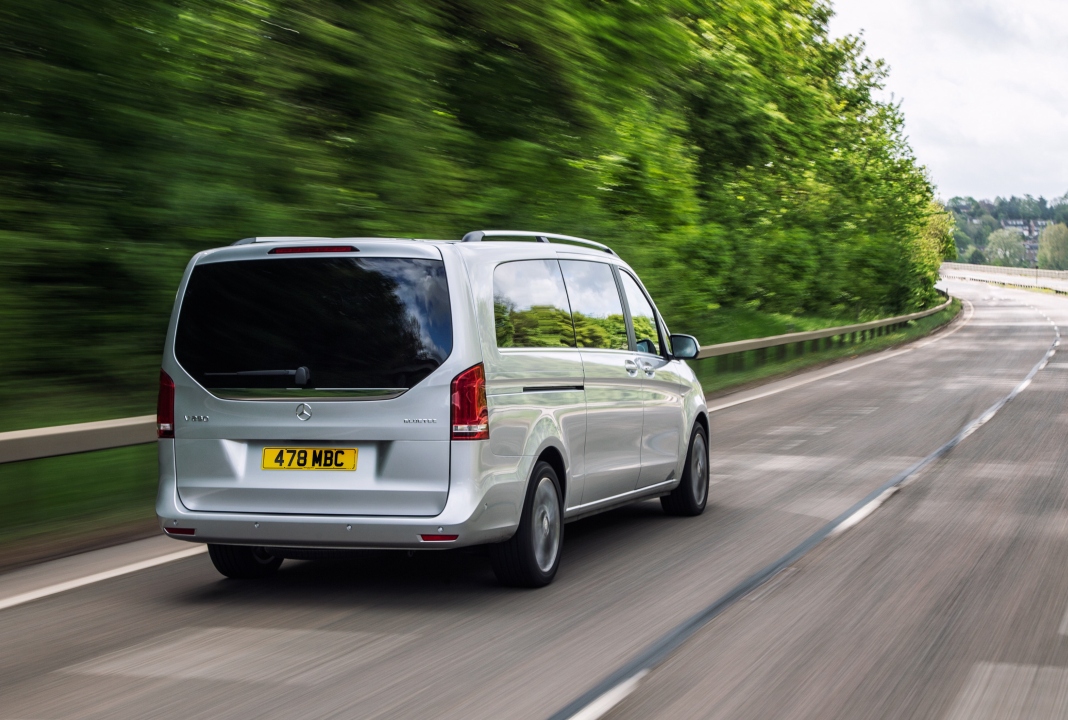 Driven in the longest Extra Long version of three available lengths, with extended 3200mm wheelbase and longer rear overhang, the V-Class’s features a very subtly descending roofline and low CD0.31 aerodynamics for efficiency and low wind noise. It’s long, tall and wide rear loading bay and body allow for hugely cavernous cargo and passenger space, among the best in the MPV and van segments, and simply unmatched by SUVs or estate cars. At the rear, the new model features smaller, better integrated rear lights than the Viano, a low loading lip, electric tailgate and smaller glass hatch opening for more convenience for loading smaller items.
Offered in most markets with a 2.15-litre turbodiesel engine, the sole petrol V250 variant, available in Jordan, is powered by Mercedes’ now familiar and effective 2-litre turbocharged direct injection four-cylinder. Replacing its Viano predecessor’s 3.5-litre naturally-aspirated V6, the V250 develops 208BHP at 5,500rpm and 258lb/ft torque throughout 1200-4,000rpm, and is approximately capable of 0-100km/h in 9.4-seconds and a 210km/h top speed. At a 20BHP disadvantage to the Viano yet gaining 4lb/ft, the V250 nevertheless feels the more responsive, suitable engine and certainly more efficient engine, and benefits from a well-sorted and brilliantly geared version of Mercedes’ also familiar 7-speed automatic gearbox, in place of the Viano’s 5-speed.
Driven in the longest Extra Long version of three available lengths, with extended 3200mm wheelbase and longer rear overhang, the V-Class’s features a very subtly descending roofline and low CD0.31 aerodynamics for efficiency and low wind noise. It’s long, tall and wide rear loading bay and body allow for hugely cavernous cargo and passenger space, among the best in the MPV and van segments, and simply unmatched by SUVs or estate cars. At the rear, the new model features smaller, better integrated rear lights than the Viano, a low loading lip, electric tailgate and smaller glass hatch opening for more convenience for loading smaller items.
Offered in most markets with a 2.15-litre turbodiesel engine, the sole petrol V250 variant, available in Jordan, is powered by Mercedes’ now familiar and effective 2-litre turbocharged direct injection four-cylinder. Replacing its Viano predecessor’s 3.5-litre naturally-aspirated V6, the V250 develops 208BHP at 5,500rpm and 258lb/ft torque throughout 1200-4,000rpm, and is approximately capable of 0-100km/h in 9.4-seconds and a 210km/h top speed. At a 20BHP disadvantage to the Viano yet gaining 4lb/ft, the V250 nevertheless feels the more responsive, suitable engine and certainly more efficient engine, and benefits from a well-sorted and brilliantly geared version of Mercedes’ also familiar 7-speed automatic gearbox, in place of the Viano’s 5-speed.
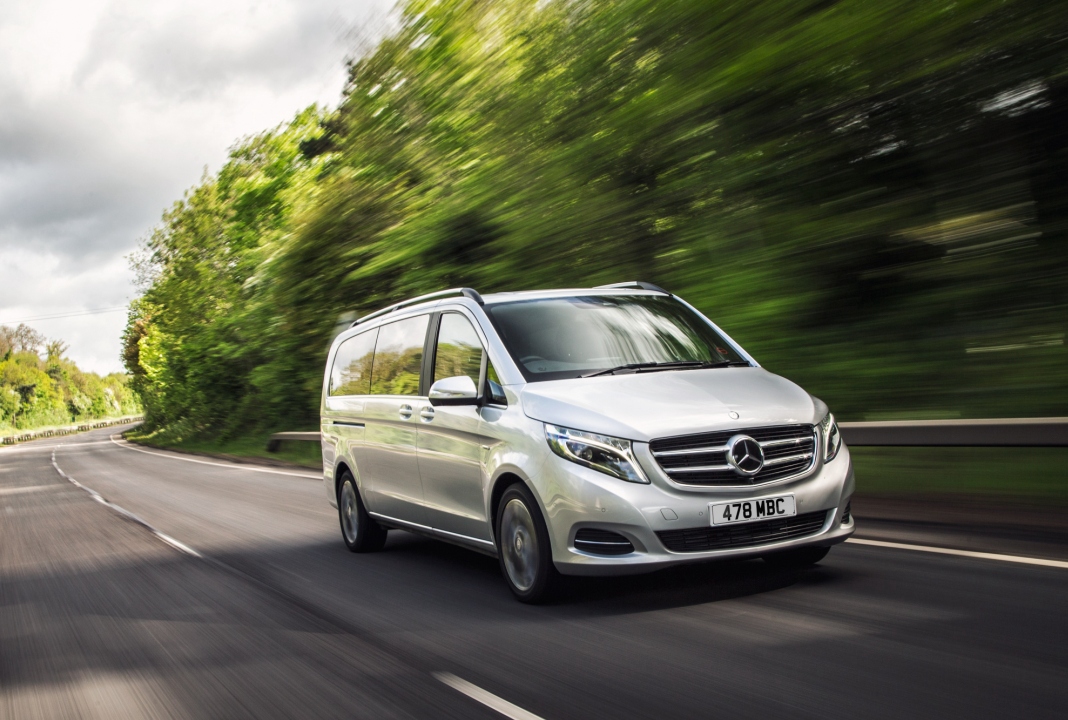 With quick-spooling turbo and responsive aggressively geared first and second ratios, the V250 feels sprightly and responsive from standstill, with turbo lag all but seemingly absent when driven in Comfort or Sport gearbox response mode. In Economy mode, revs are kept lower and gears higher, so naturally lag becomes slightly more apparent, but efficiency improves, and also benefits from taller top gears. Brawny, lively and versatile with muscular mid-range pull for inclines, overtaking and hauling, the V250’s engine belies a hefty 2055kg estimated weight, and is smooth, refined and willing to be revved hard to its redline, where engine roar is slightly more evident.
Another significant benefit courtesy of the V250’s downsized engine is that its front end feels noticeably lighter than its predecessor, with a crisper and more eager turn-in than expected from a large MPV, let alone one that is van-based. Tidy into corners with good front grip and little understeer when pushed too aggressively, the V250 Extra long is surprisingly agile through switchbacks, with its front engine and rear drive balance working in its favour. Meanwhile its long wheelbase provides good rear grip, and predictably telegraphed oversteer if provoked by a pivot to tighten a cornering line, or with too much throttle coming out of a corner.
With quick-spooling turbo and responsive aggressively geared first and second ratios, the V250 feels sprightly and responsive from standstill, with turbo lag all but seemingly absent when driven in Comfort or Sport gearbox response mode. In Economy mode, revs are kept lower and gears higher, so naturally lag becomes slightly more apparent, but efficiency improves, and also benefits from taller top gears. Brawny, lively and versatile with muscular mid-range pull for inclines, overtaking and hauling, the V250’s engine belies a hefty 2055kg estimated weight, and is smooth, refined and willing to be revved hard to its redline, where engine roar is slightly more evident.
Another significant benefit courtesy of the V250’s downsized engine is that its front end feels noticeably lighter than its predecessor, with a crisper and more eager turn-in than expected from a large MPV, let alone one that is van-based. Tidy into corners with good front grip and little understeer when pushed too aggressively, the V250 Extra long is surprisingly agile through switchbacks, with its front engine and rear drive balance working in its favour. Meanwhile its long wheelbase provides good rear grip, and predictably telegraphed oversteer if provoked by a pivot to tighten a cornering line, or with too much throttle coming out of a corner.
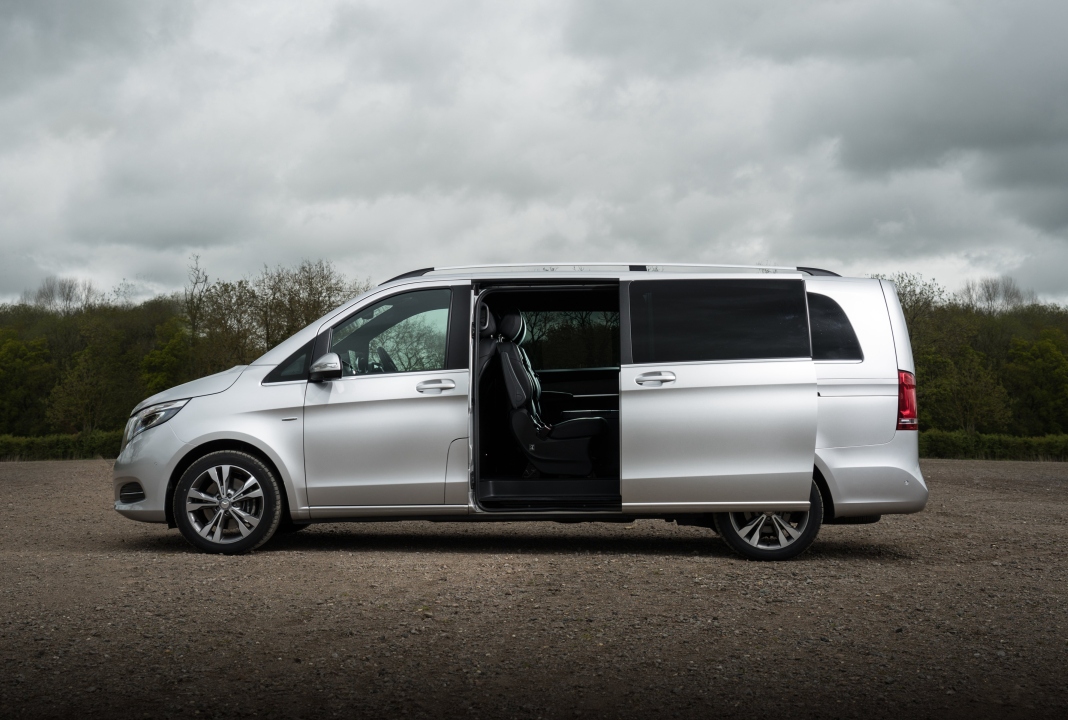 Similar to other Mercedes passenger cars, the V250’s electric-assisted rack and pinion steering is positive, precise and eager to self-centre. And with better feel and feedback than some cars and many MPVs, vans and SUVs, the V250’s steering, upright driving position and balanced chassis, one feels involved and in the middle of the action. With a tauter and more rigid and refined feel to its construction and driving dynamic than the Viano, the V250 rides on independent rear suspension with variable dampers that soften to allow for supple ride comfort and tighten for comparably good body lean control through corners and to press wheels tautly into the tarmac.
Stable and refined at speed for its segment, the V250 is however in its comfort zone when cruising, while its optional Avantgarde trim 245/45R19 tyres provide a good compromise between control and comfort, and braking is reassuring. Riding well and smooth, the V250 can wallow very slightly over particularly choppy road surfacing, and on heavy braking, there is slight brake dive – both of which were less than expected. With a tight 12.5-meter turning circle, the V250 Extra Long is more maneuverable than its size suggests, but given its length and forward driving position, one often needs to turn-in later than intuitive when driving a car.
Similar to other Mercedes passenger cars, the V250’s electric-assisted rack and pinion steering is positive, precise and eager to self-centre. And with better feel and feedback than some cars and many MPVs, vans and SUVs, the V250’s steering, upright driving position and balanced chassis, one feels involved and in the middle of the action. With a tauter and more rigid and refined feel to its construction and driving dynamic than the Viano, the V250 rides on independent rear suspension with variable dampers that soften to allow for supple ride comfort and tighten for comparably good body lean control through corners and to press wheels tautly into the tarmac.
Stable and refined at speed for its segment, the V250 is however in its comfort zone when cruising, while its optional Avantgarde trim 245/45R19 tyres provide a good compromise between control and comfort, and braking is reassuring. Riding well and smooth, the V250 can wallow very slightly over particularly choppy road surfacing, and on heavy braking, there is slight brake dive – both of which were less than expected. With a tight 12.5-meter turning circle, the V250 Extra Long is more maneuverable than its size suggests, but given its length and forward driving position, one often needs to turn-in later than intuitive when driving a car.
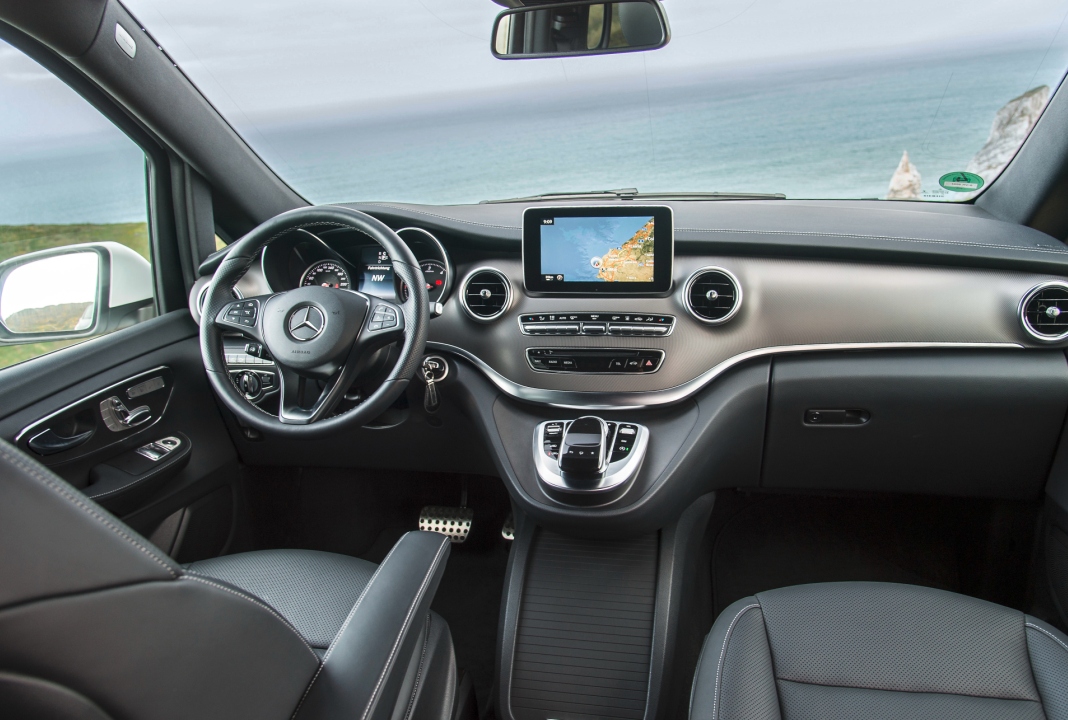 Enormous at 5,370mm long, 1,928mm wide and 1,880mm tall, the V-Class Extra Long is however relatively easily maneuverable, especially when moving forward. To help with rear visibility, which can be tricky owing to size and height, the V250 Avantgarde version driven featured a 360° and reversing camera parking package. Meanwhile for overtaking and lane-changing maneuvers, in which lower cars aren’t completely visible in big blind spots and, optional blind spot and lane assistance systems were invaluable. Over shoulder visibility is better when second row seats are configured to be front-facing, while bigger van-like side mirrors would be a welcome addition, even if at the expense of aerodynamics and aesthetics.
Refined, luxurious and superbly comfortable inside, the V250 Avantgarde has a classy and modern ambiance, with a contemporary dashboard, leather upholstery and steering, user-friendly infotainment and convenience features, soft textures, good fit and finish, tinted rear windows, and contemporary car-like dashboard and steering. In terms of practicality, the luxurious Avantgarde version features plenty of storage spaces and two – rather than one – huge electric and remote operable sliding doors to easily access the rear two seat rows. Accommodating 8-passengers with two rear bench seats, the 7-seat Avantgarde however featured twin middle row captain’s seats and a table unit, all of which are detachable and configurable along twin long flush rails.
Enormous at 5,370mm long, 1,928mm wide and 1,880mm tall, the V-Class Extra Long is however relatively easily maneuverable, especially when moving forward. To help with rear visibility, which can be tricky owing to size and height, the V250 Avantgarde version driven featured a 360° and reversing camera parking package. Meanwhile for overtaking and lane-changing maneuvers, in which lower cars aren’t completely visible in big blind spots and, optional blind spot and lane assistance systems were invaluable. Over shoulder visibility is better when second row seats are configured to be front-facing, while bigger van-like side mirrors would be a welcome addition, even if at the expense of aerodynamics and aesthetics.
Refined, luxurious and superbly comfortable inside, the V250 Avantgarde has a classy and modern ambiance, with a contemporary dashboard, leather upholstery and steering, user-friendly infotainment and convenience features, soft textures, good fit and finish, tinted rear windows, and contemporary car-like dashboard and steering. In terms of practicality, the luxurious Avantgarde version features plenty of storage spaces and two – rather than one – huge electric and remote operable sliding doors to easily access the rear two seat rows. Accommodating 8-passengers with two rear bench seats, the 7-seat Avantgarde however featured twin middle row captain’s seats and a table unit, all of which are detachable and configurable along twin long flush rails.
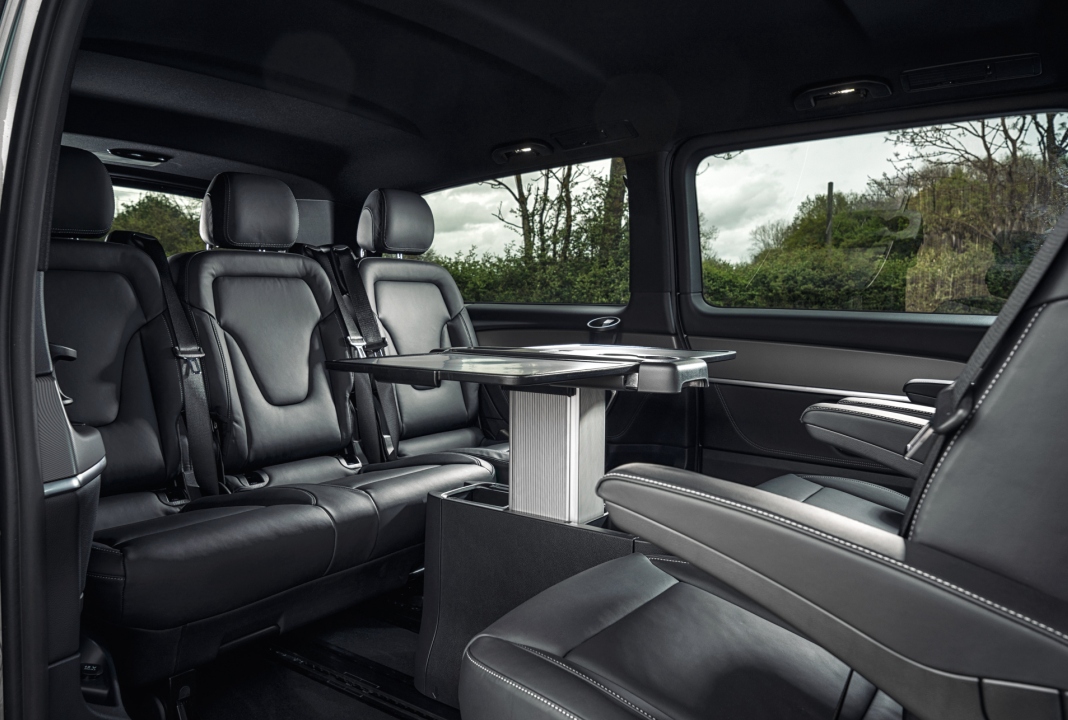 Specifications: Mercedes-Benz V250 Avantgarde (Extra Long)
Specifications: Mercedes-Benz V250 Avantgarde (Extra Long)


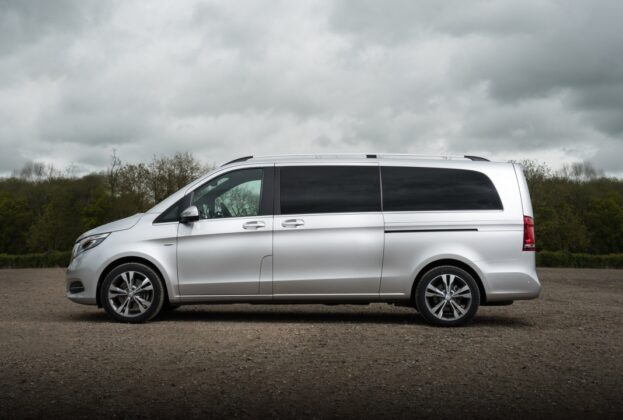
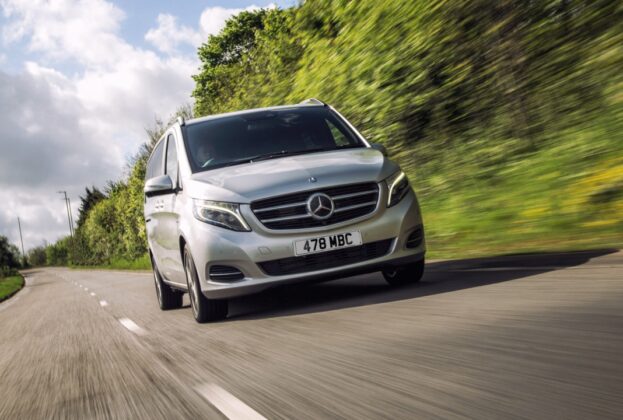
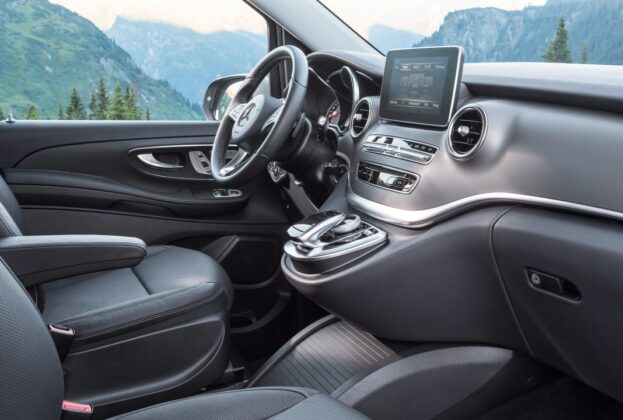
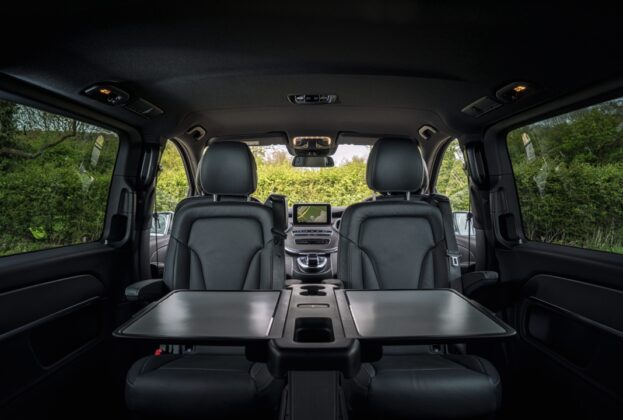
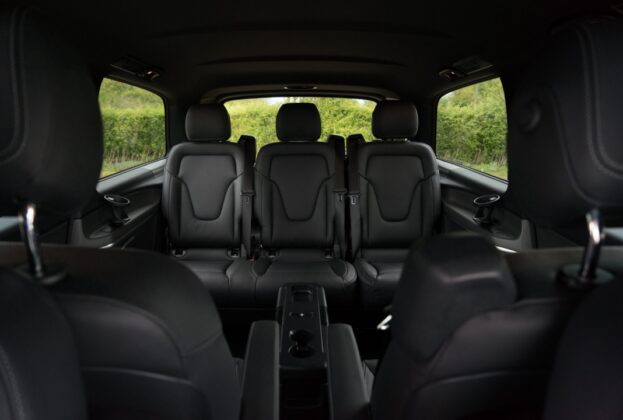
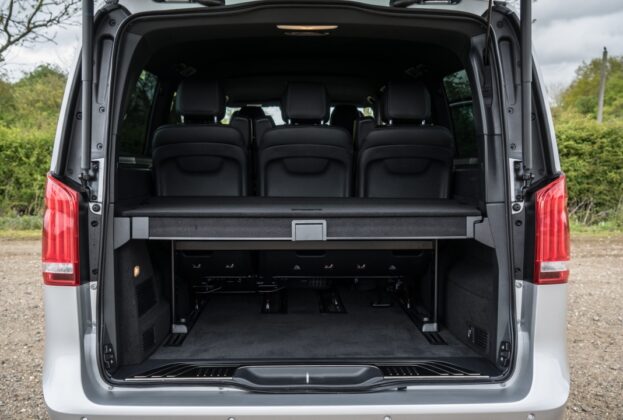
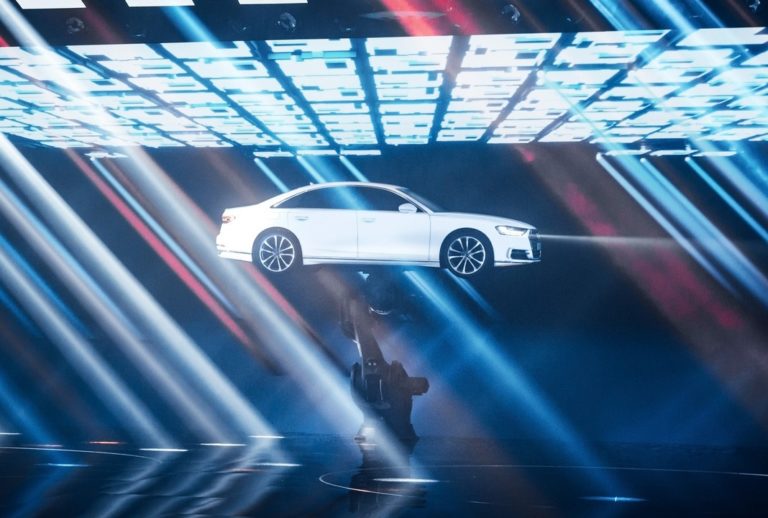








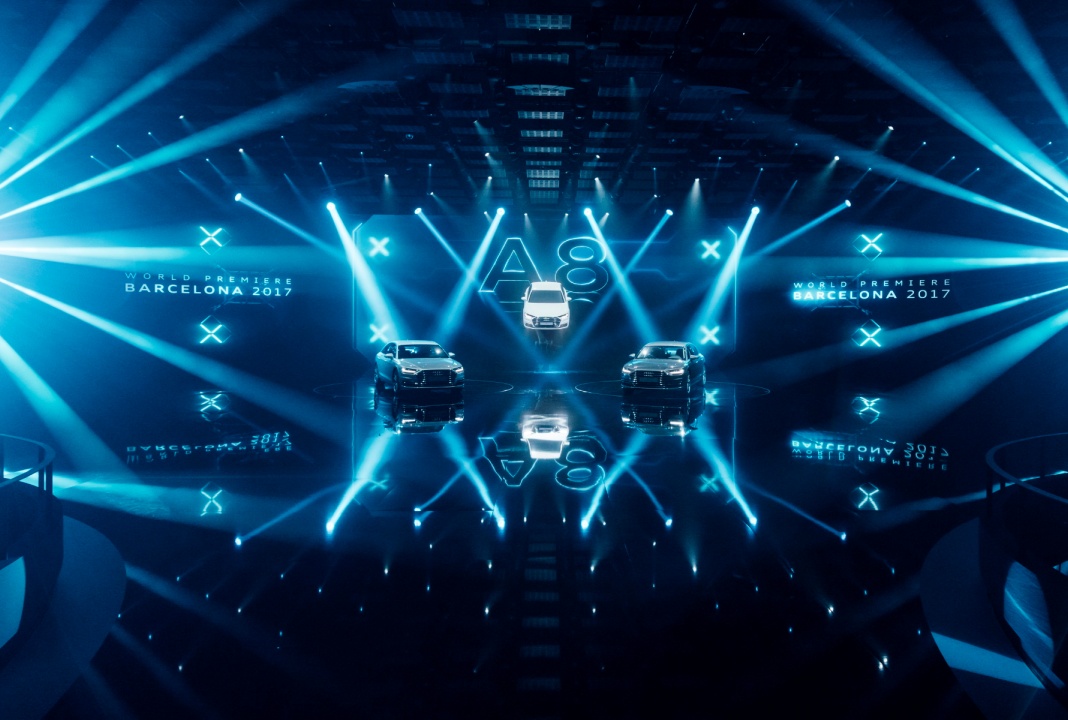
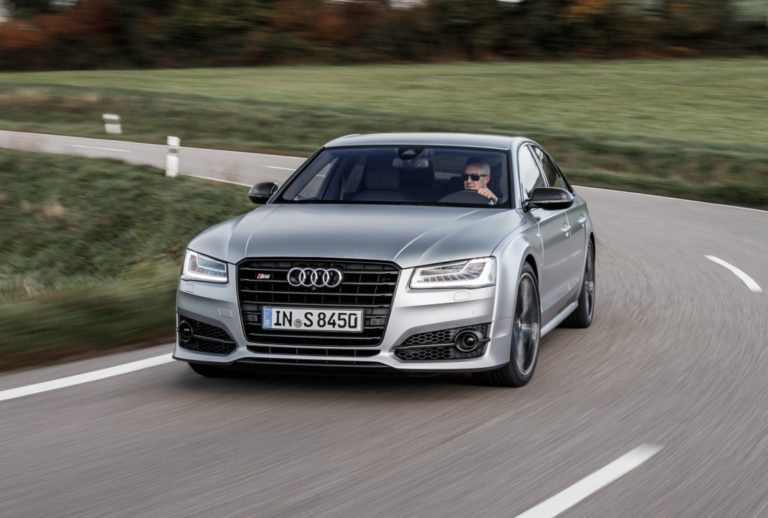
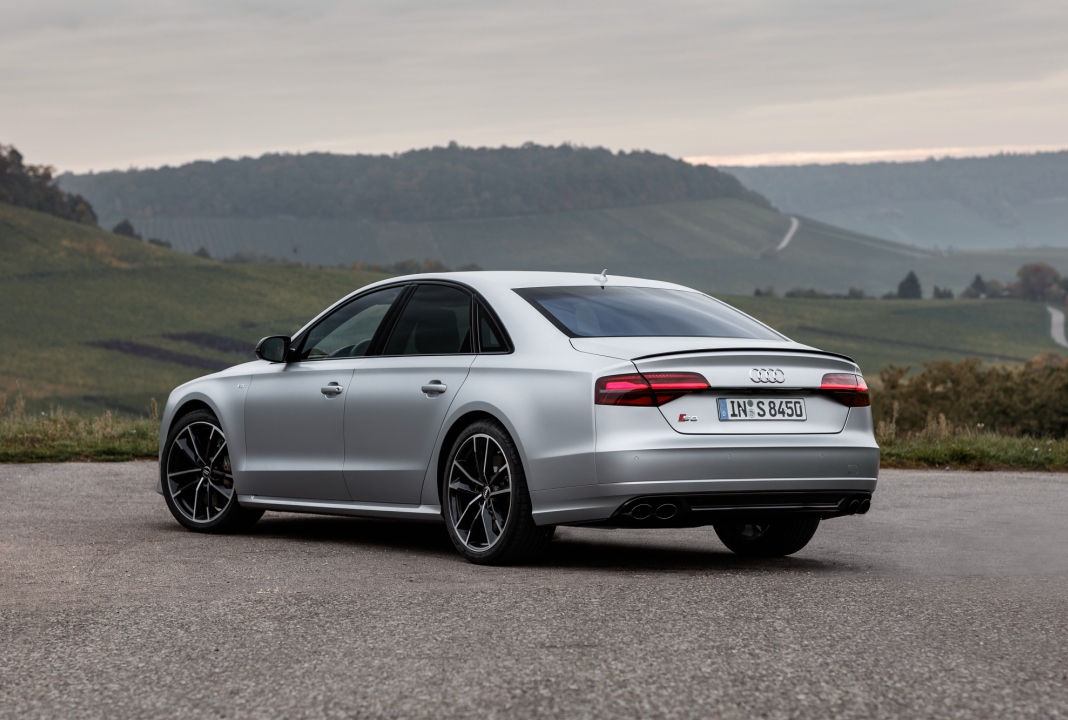

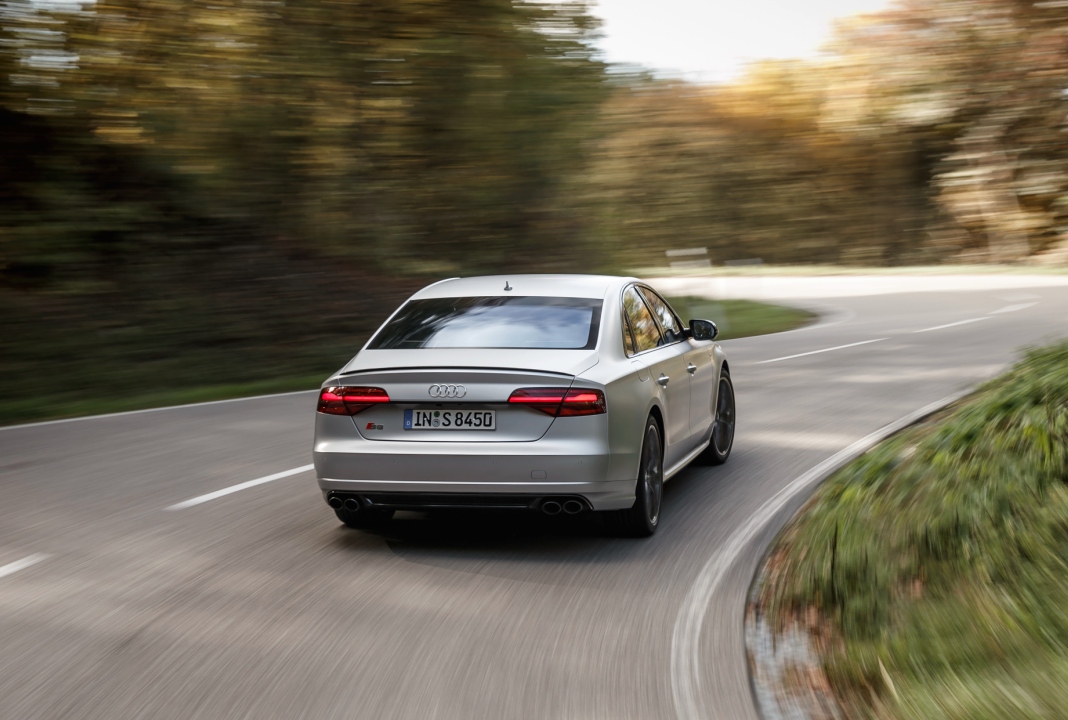
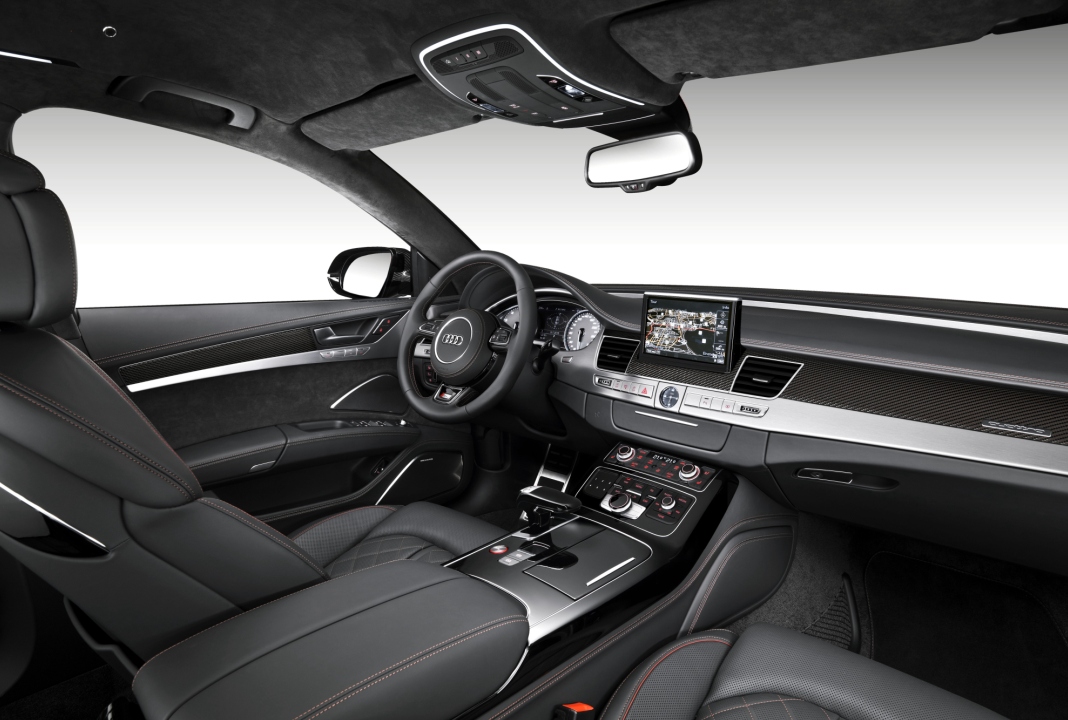
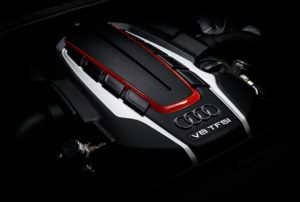
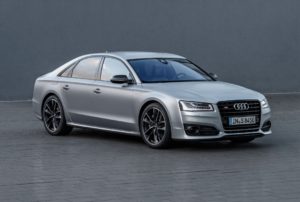
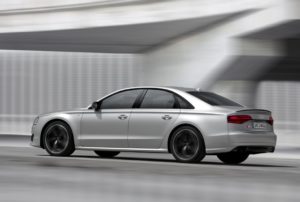



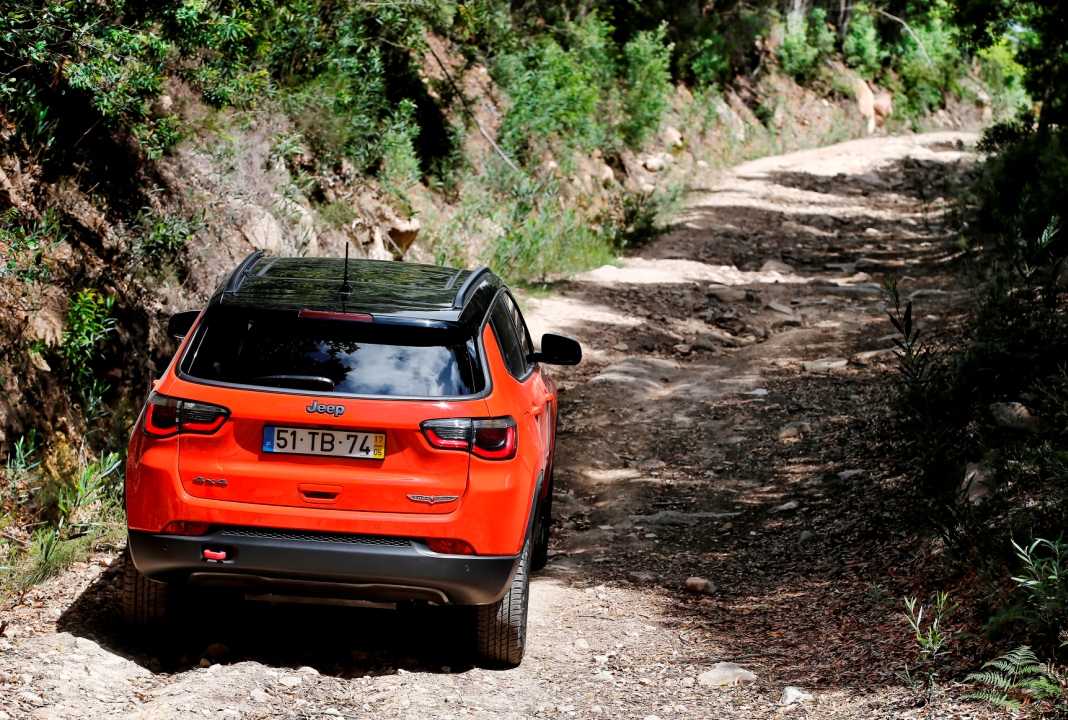
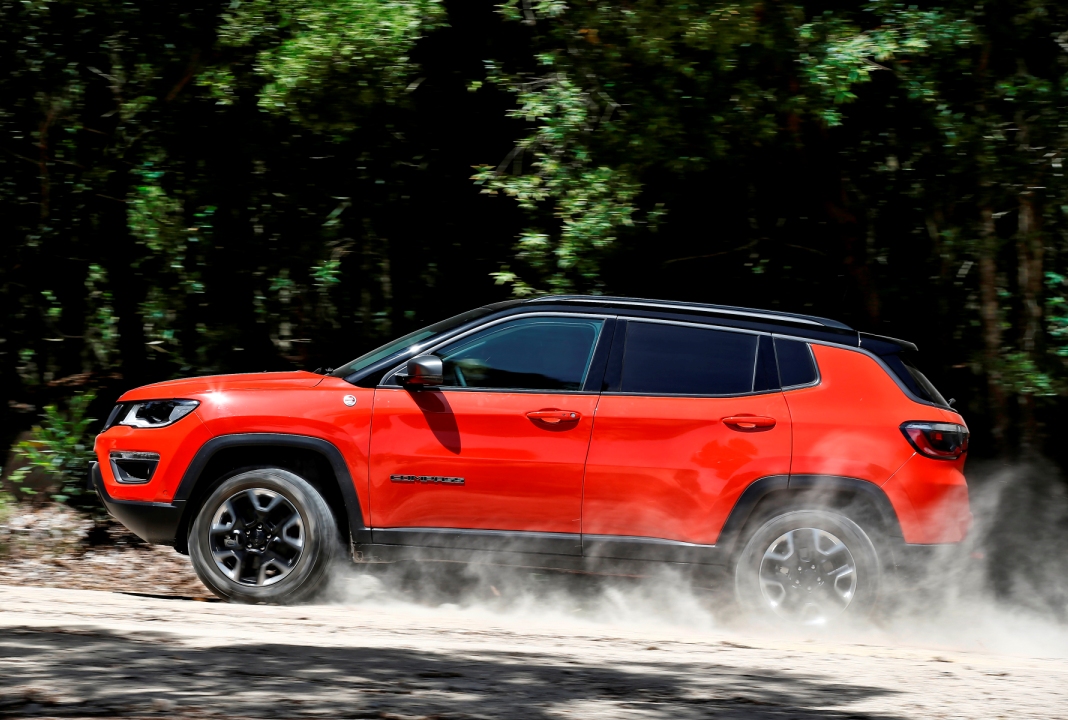



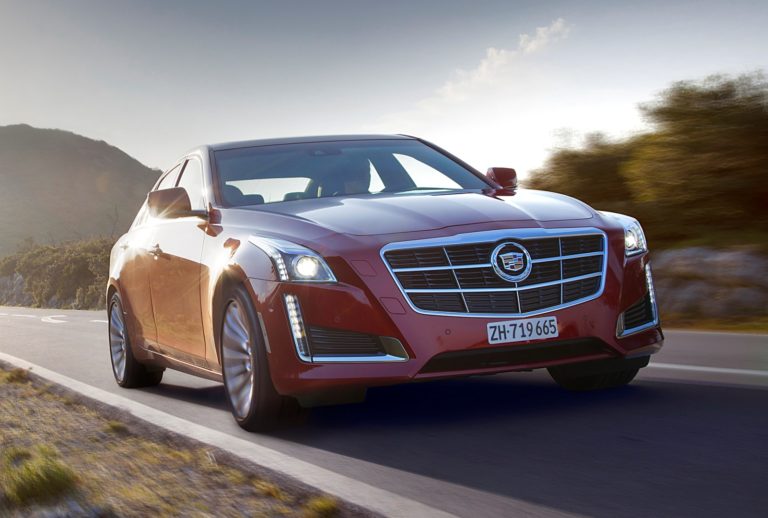
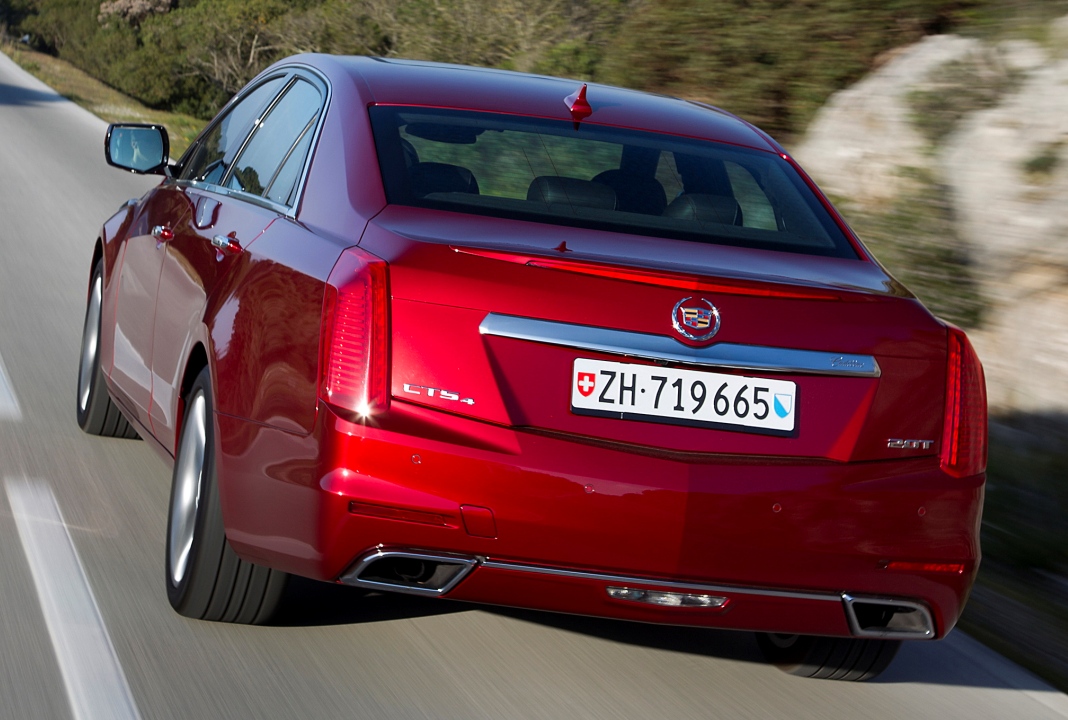
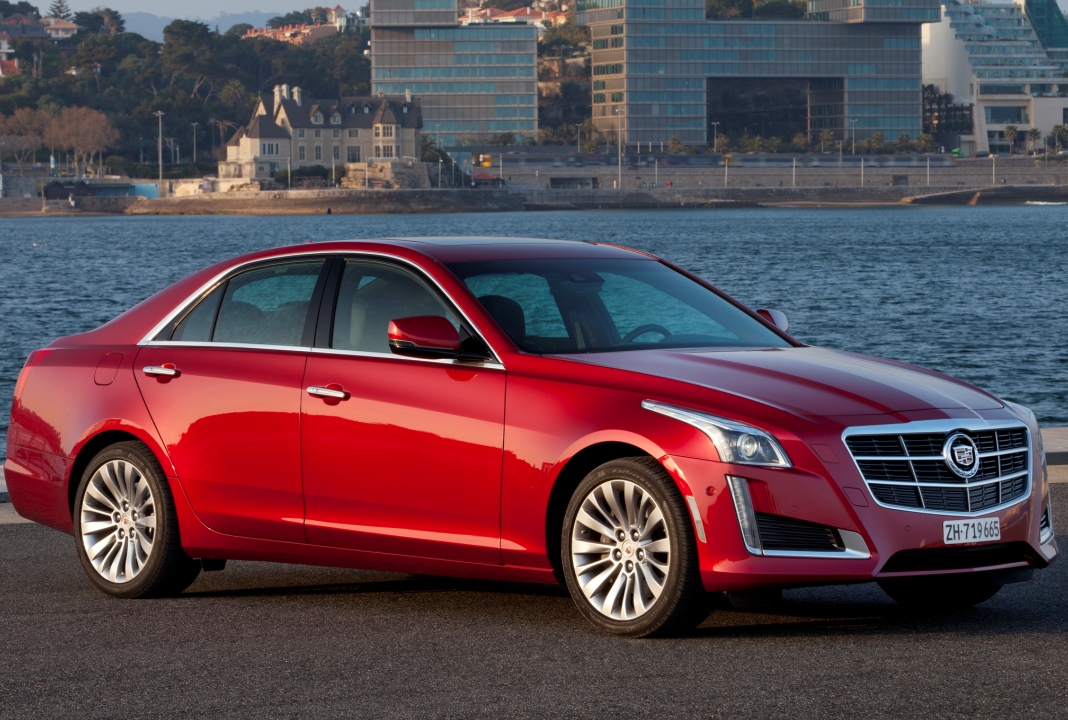


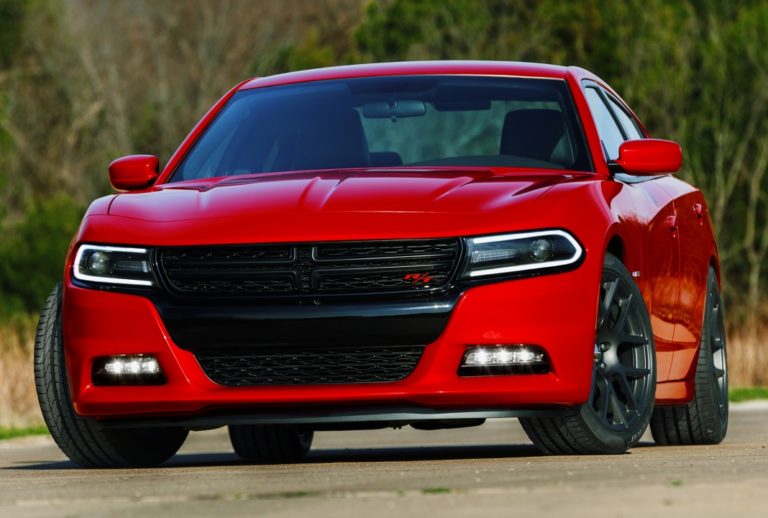
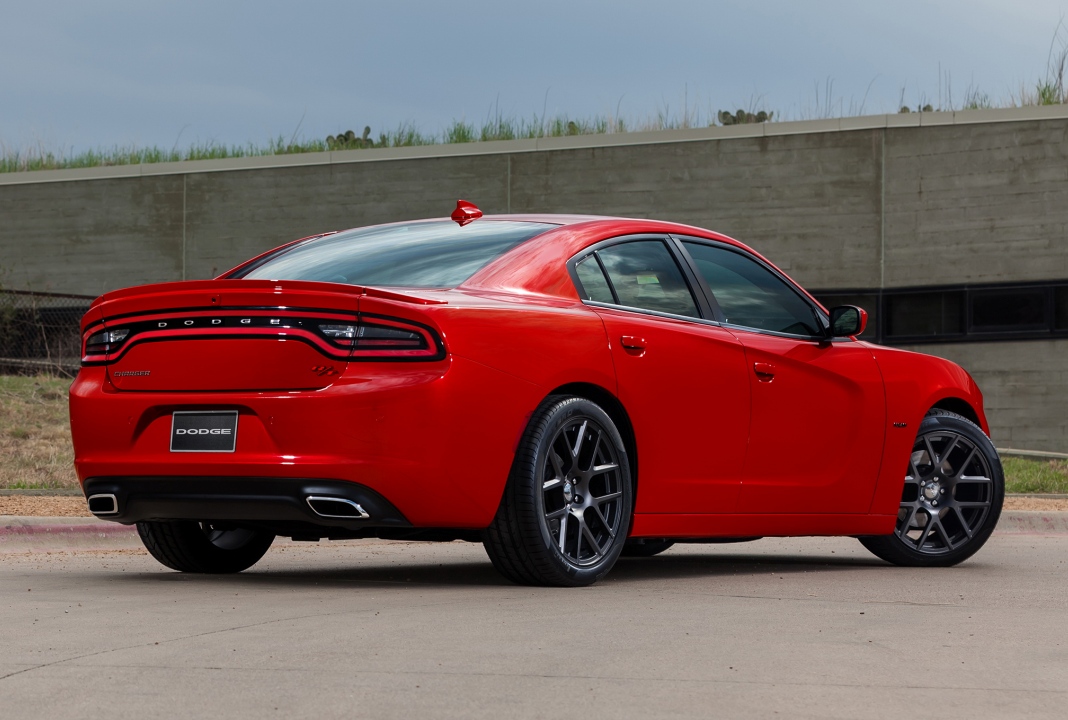

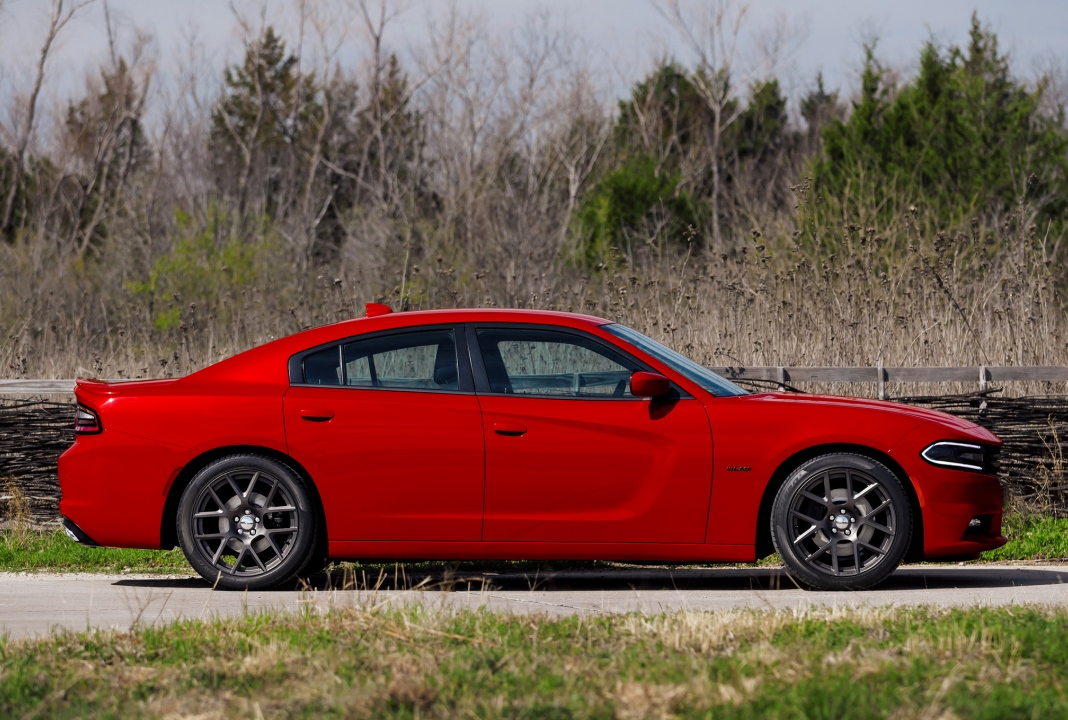


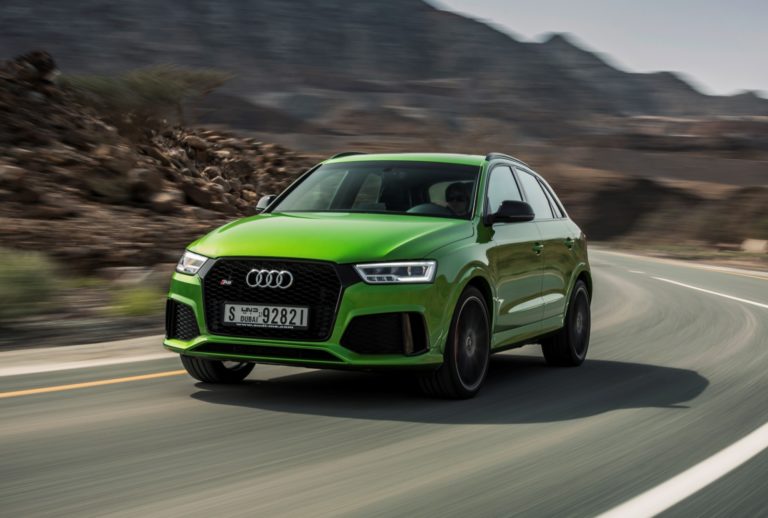


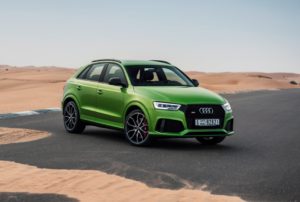

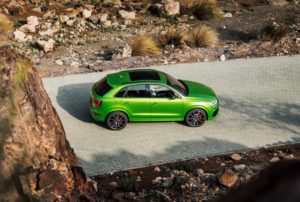
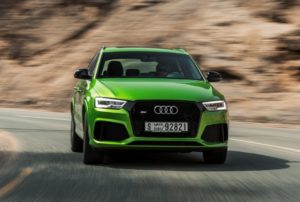
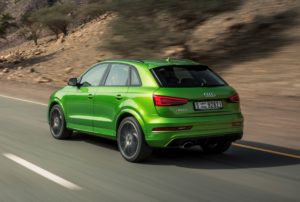

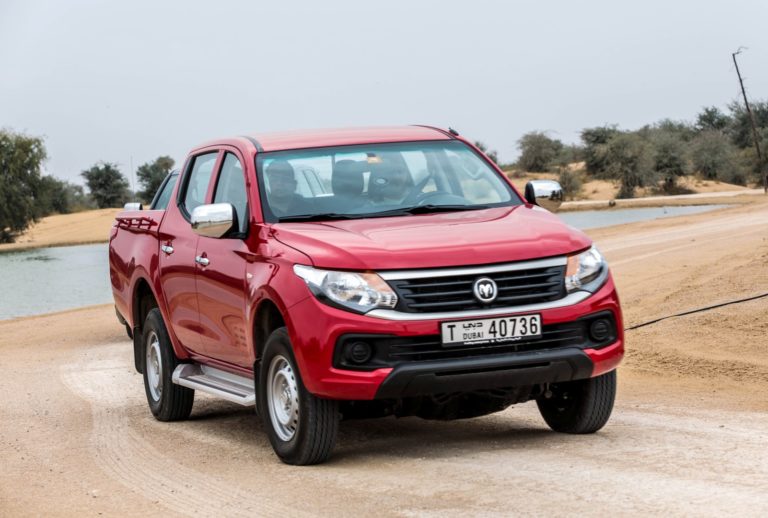

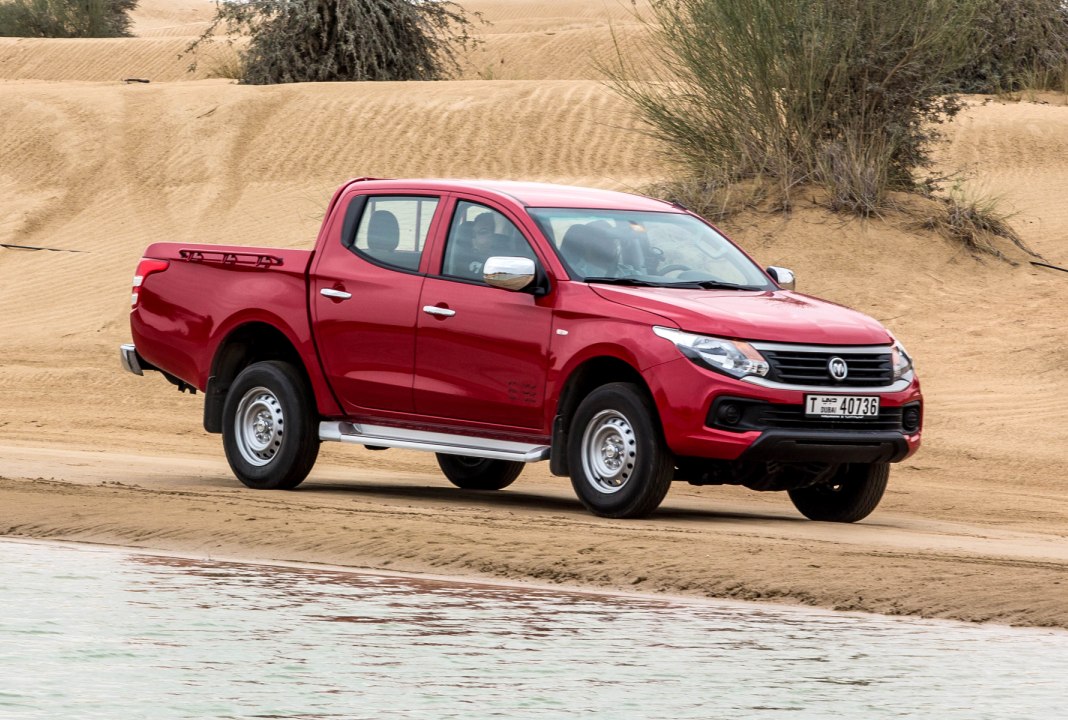

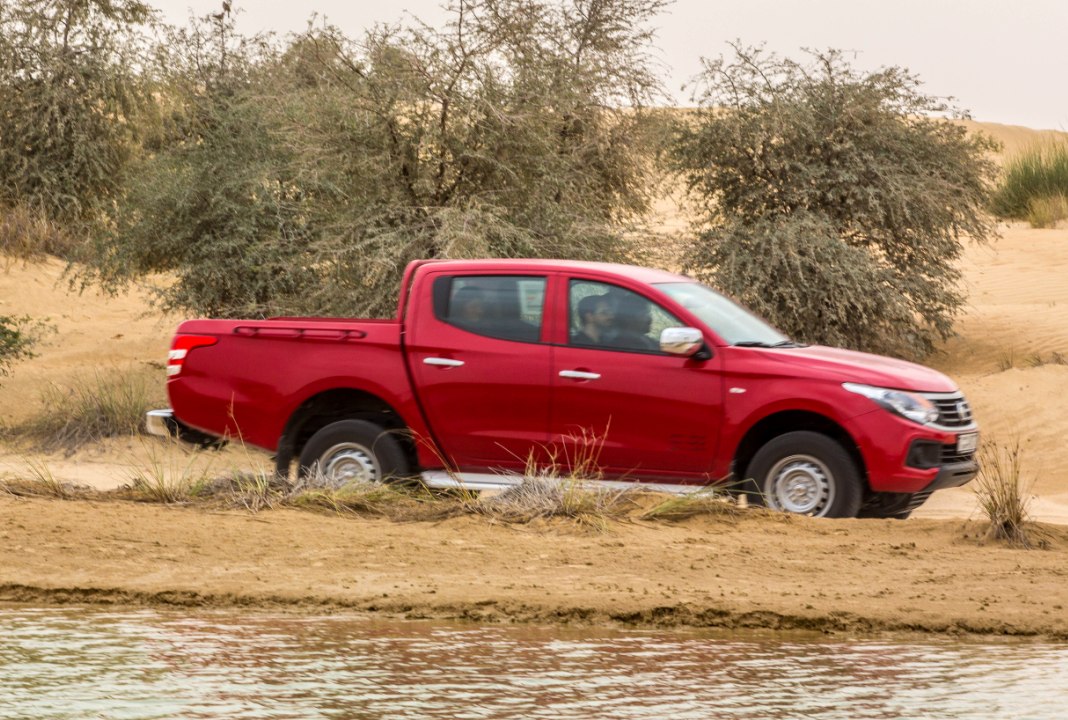

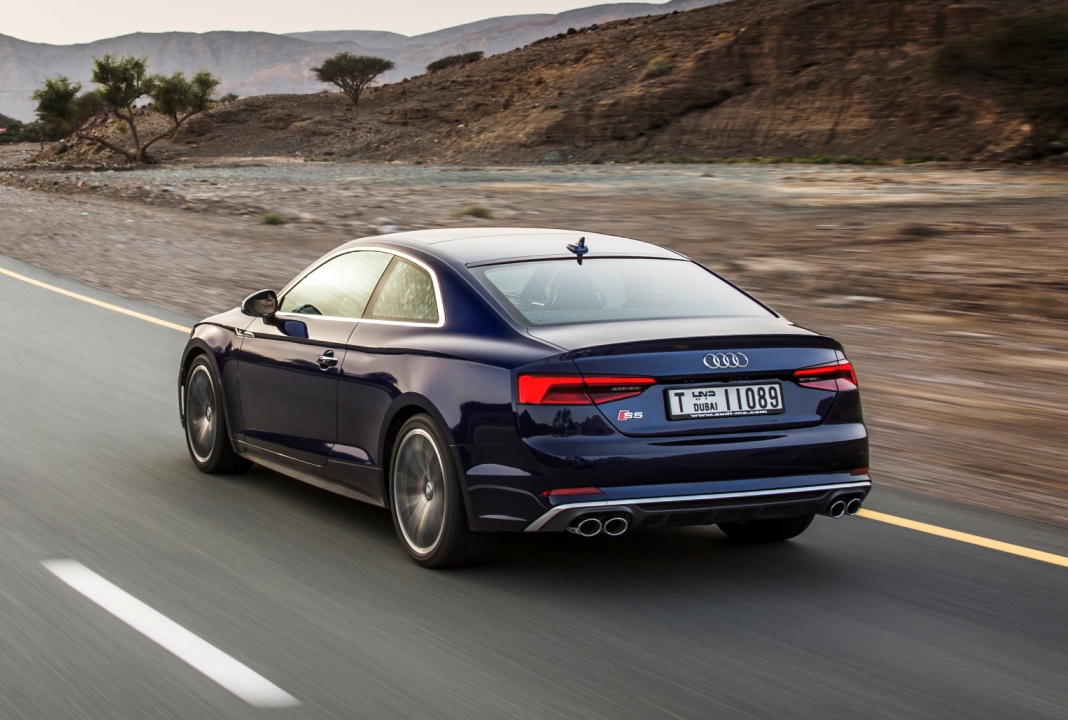

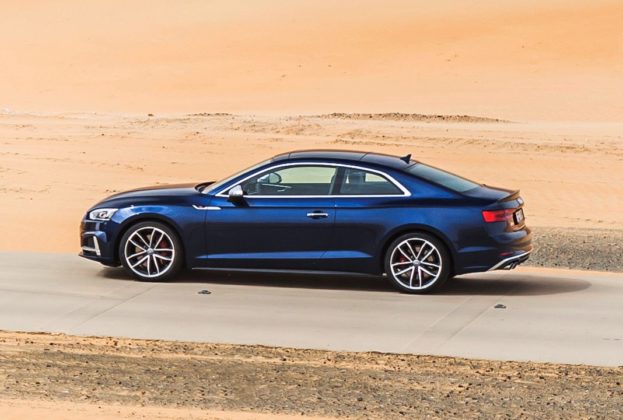
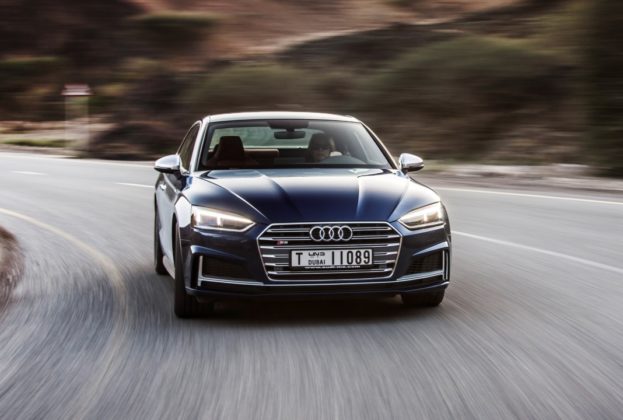
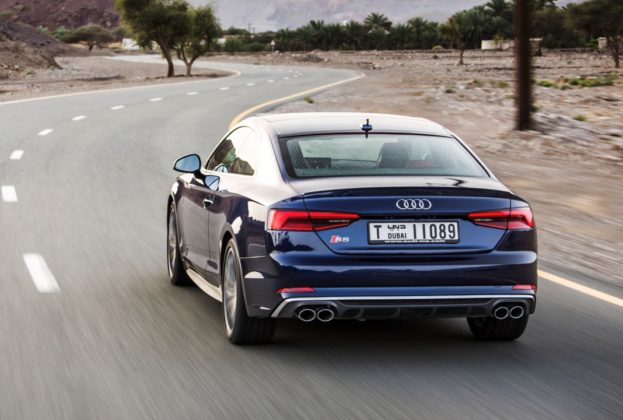
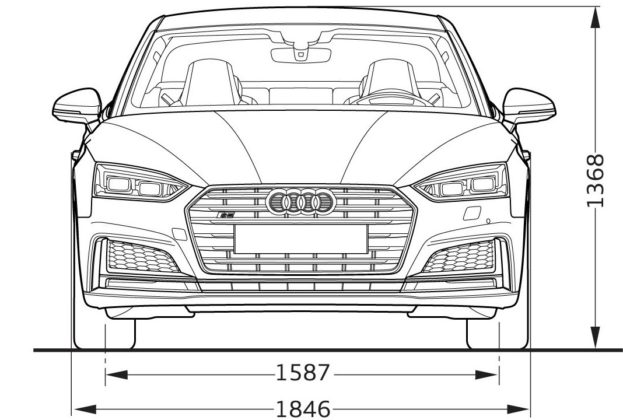
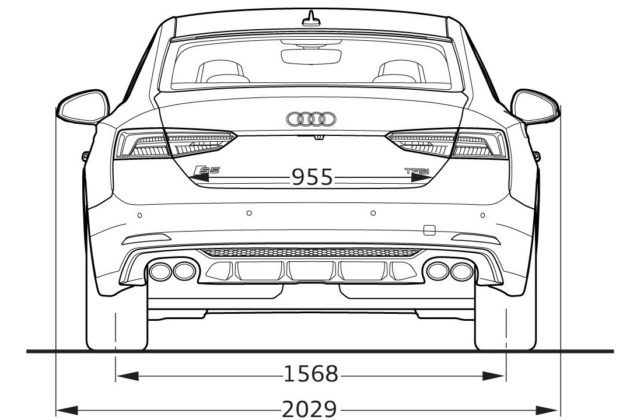
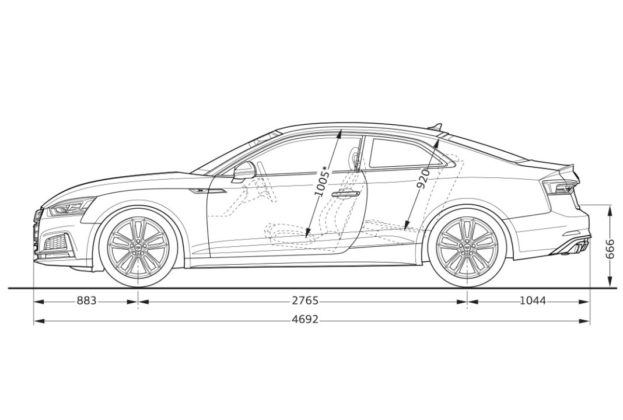
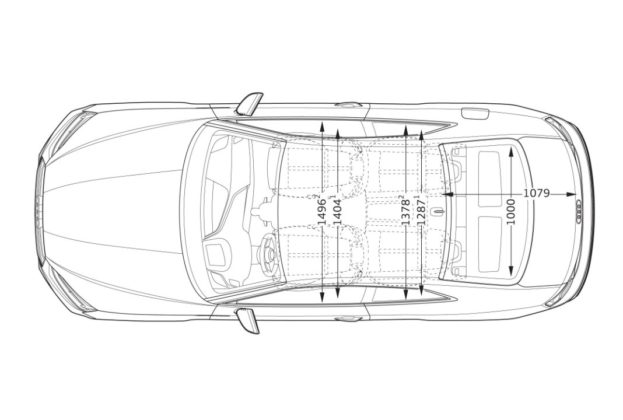
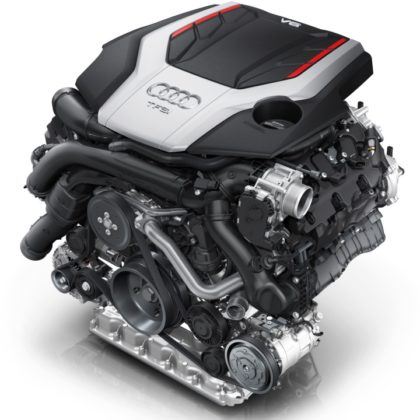







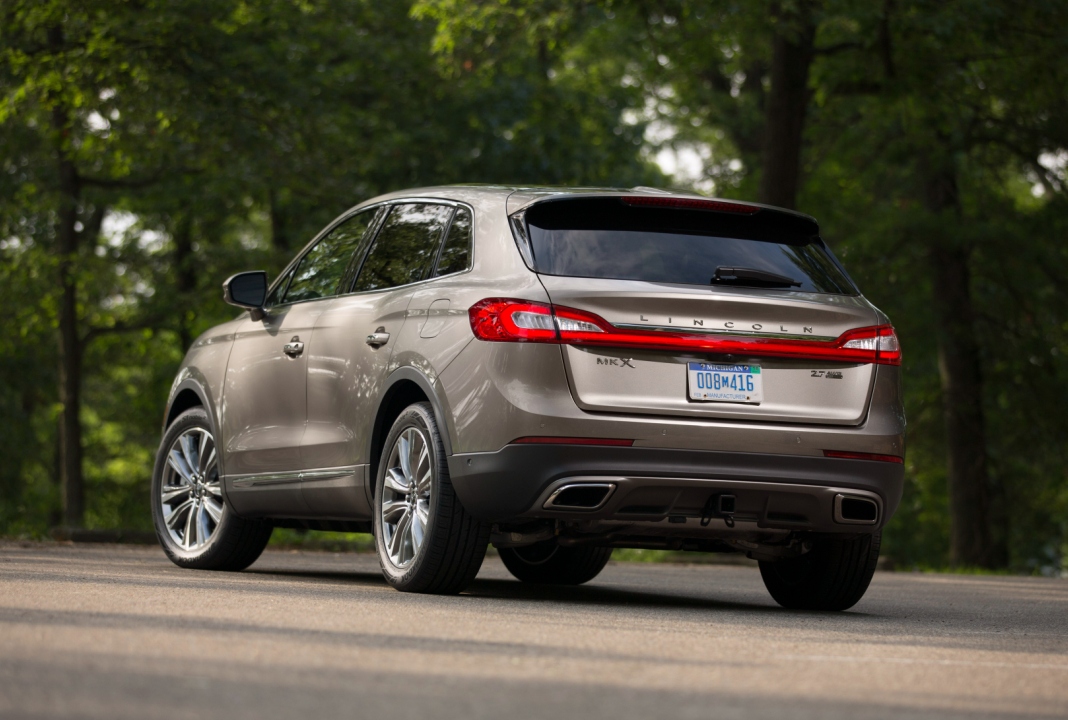

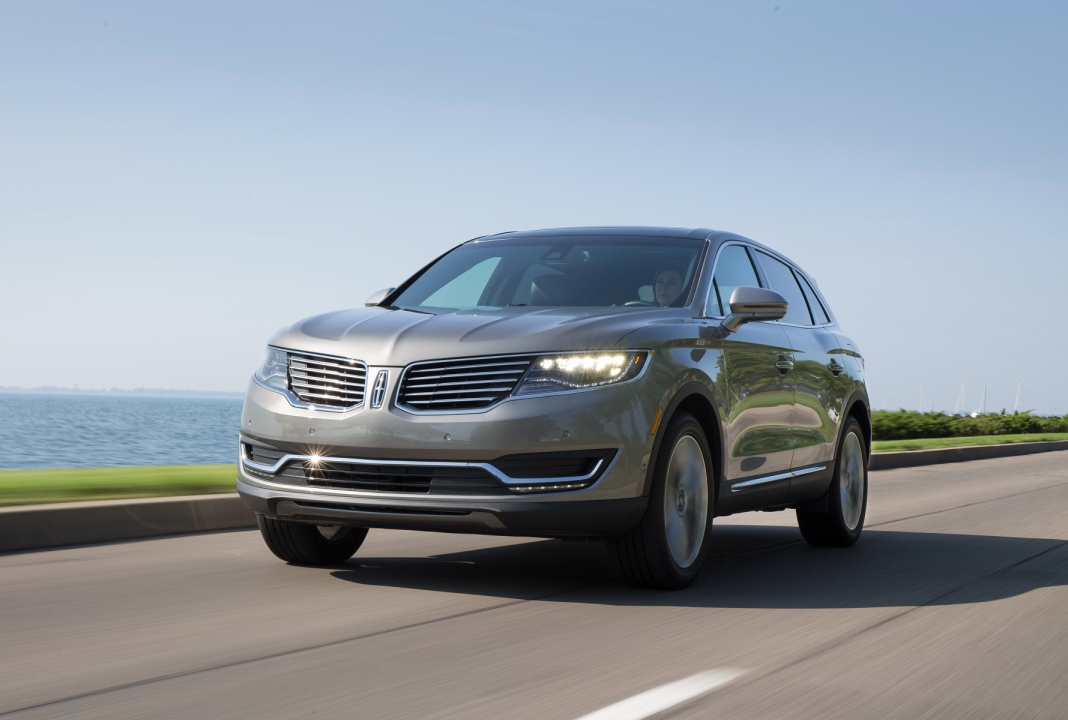
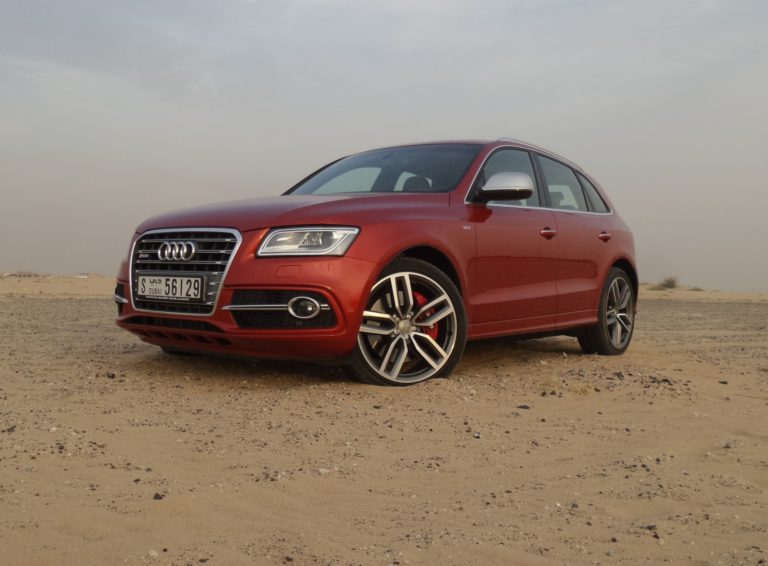
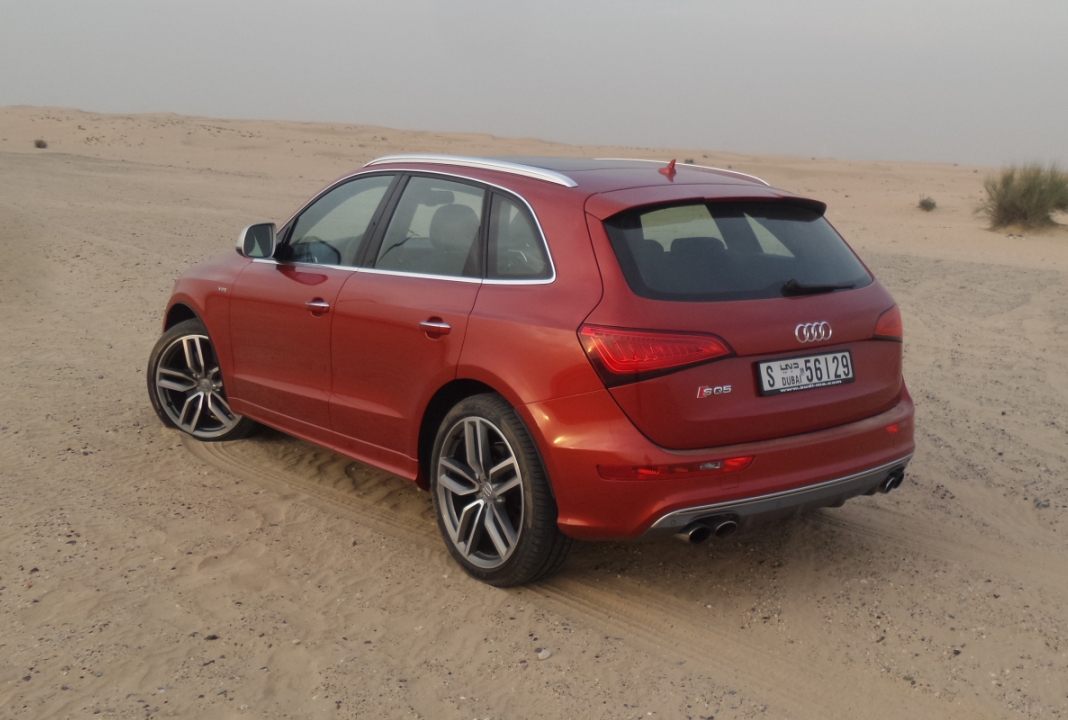
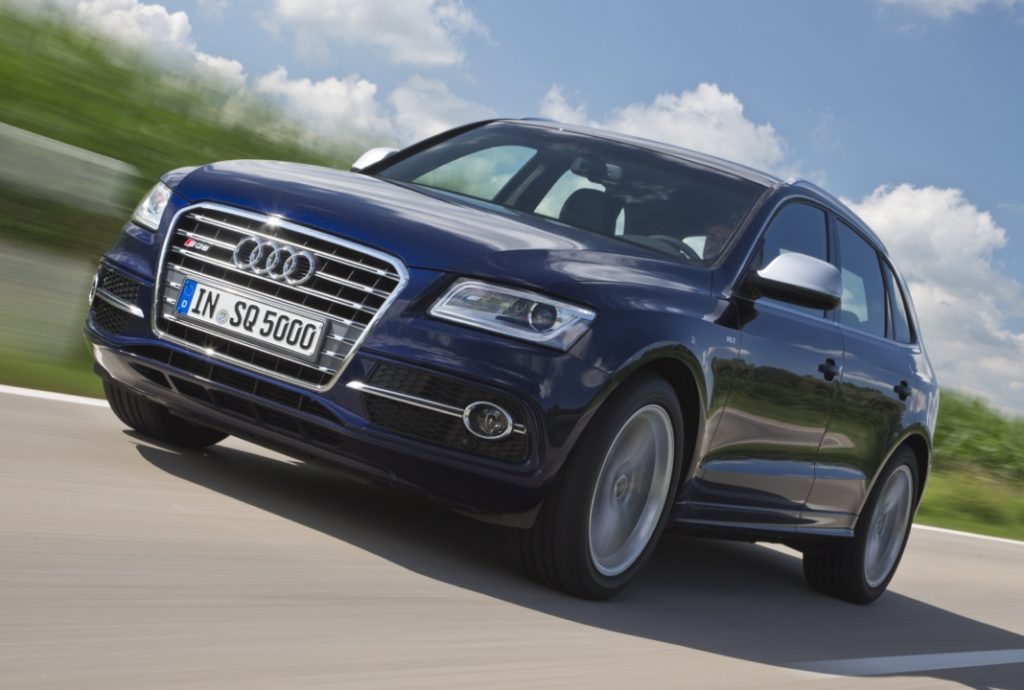
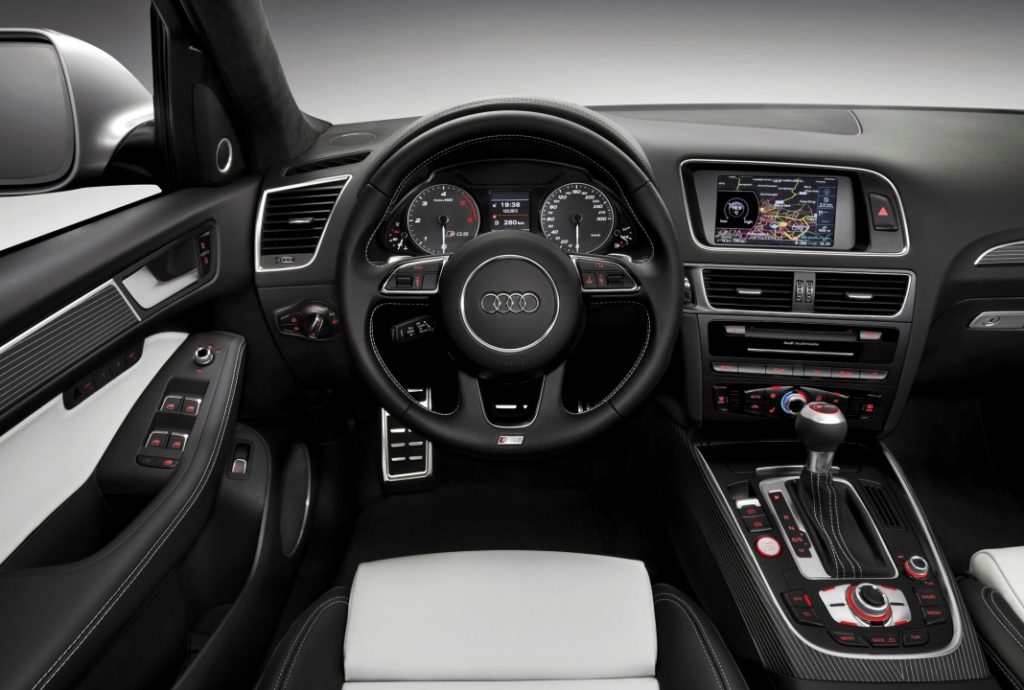

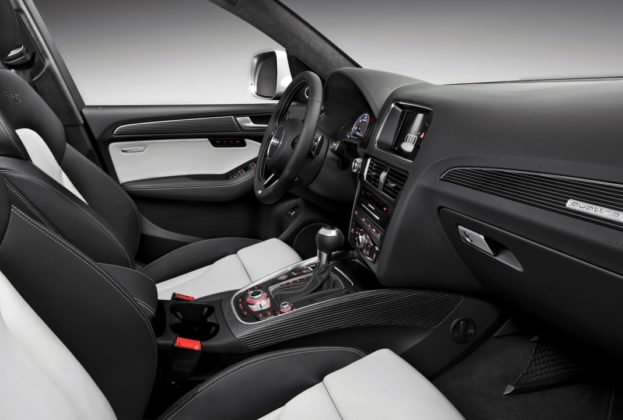
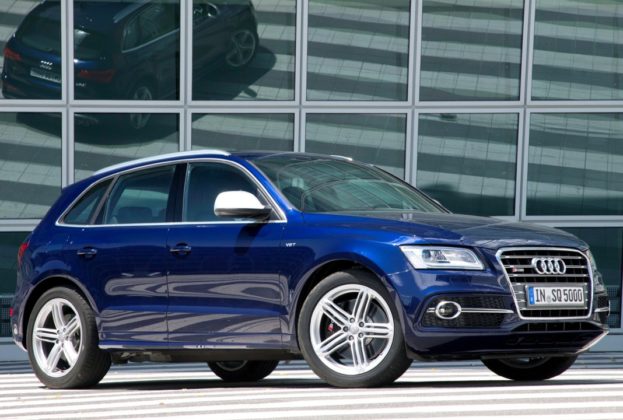
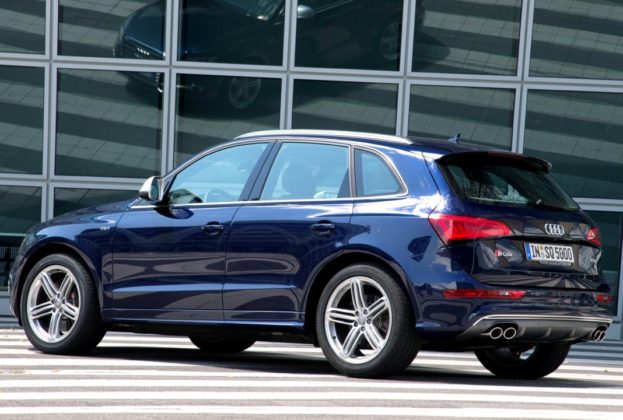

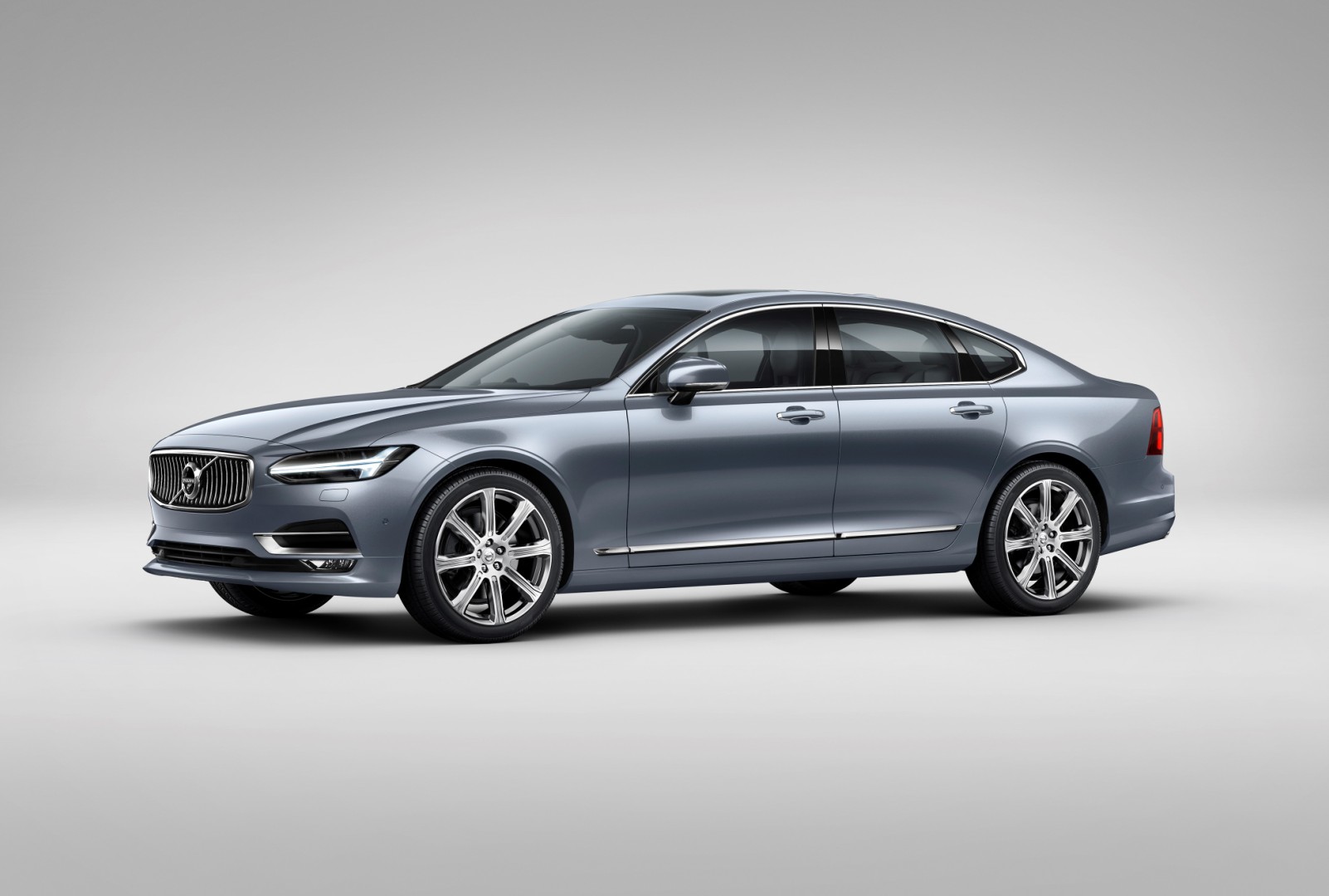
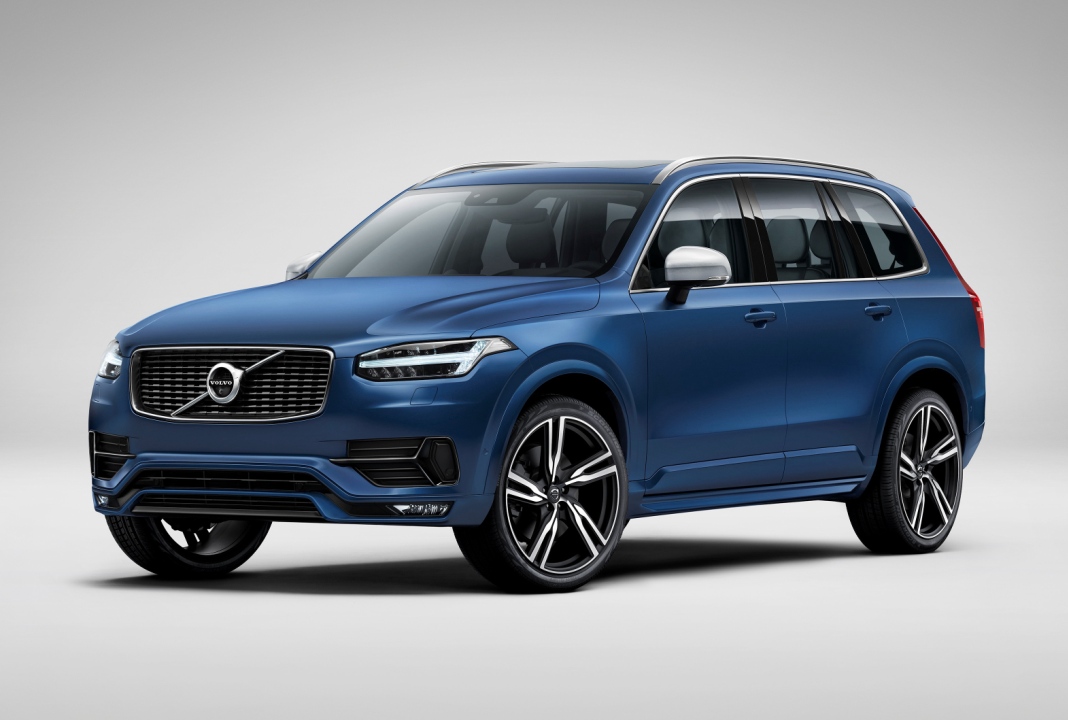
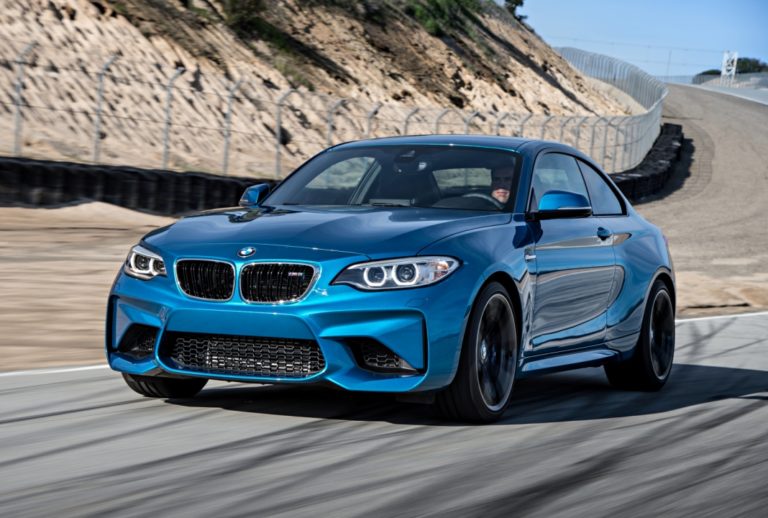
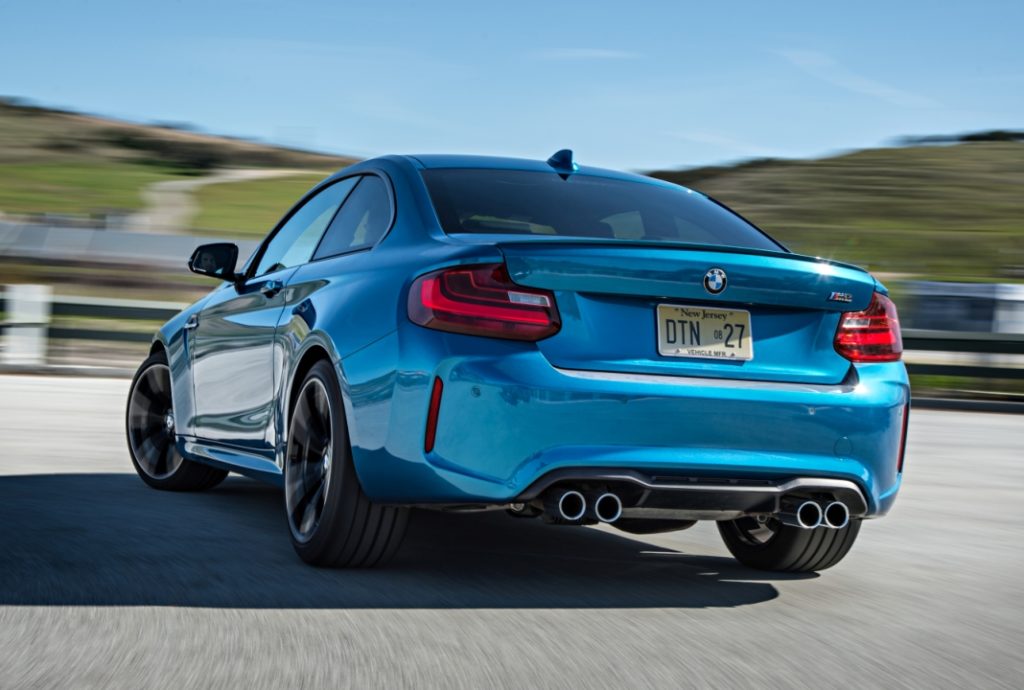
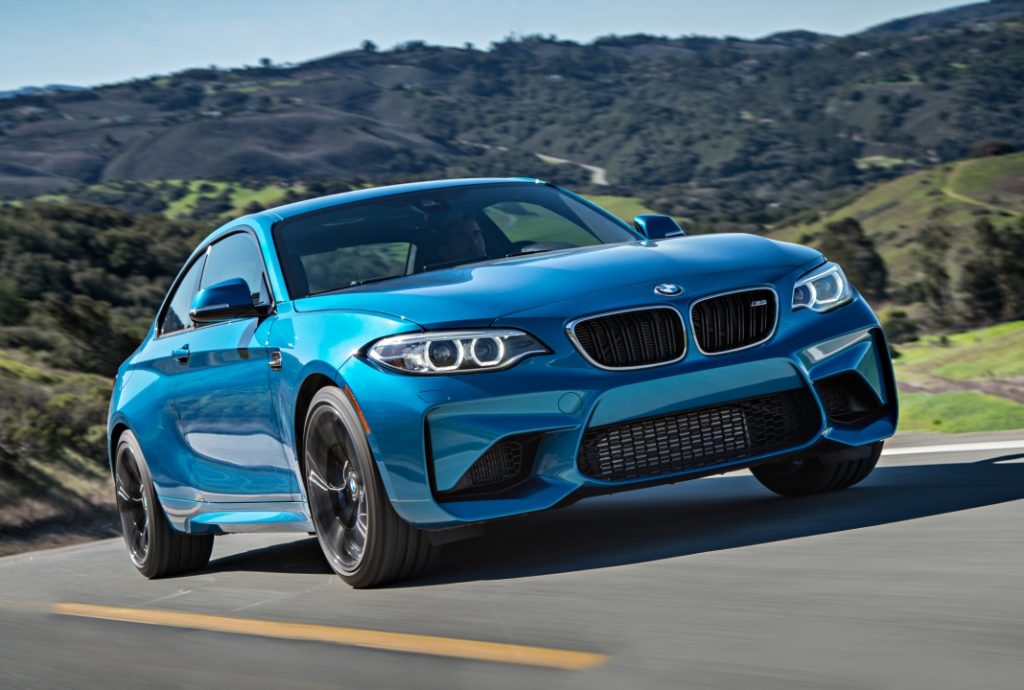
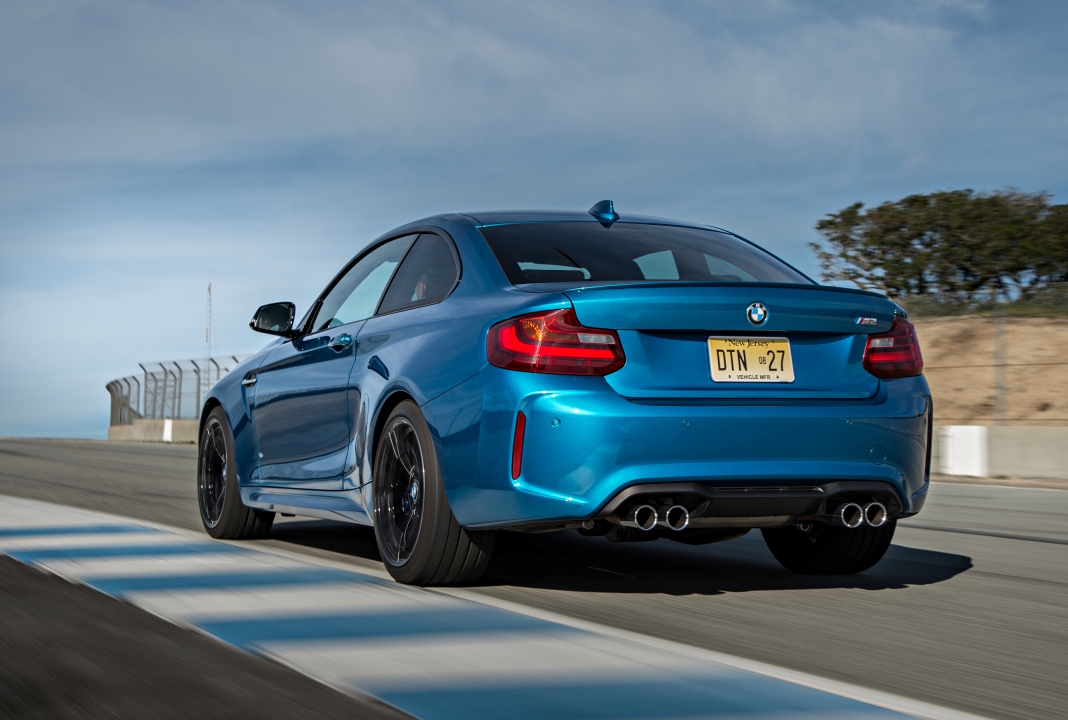



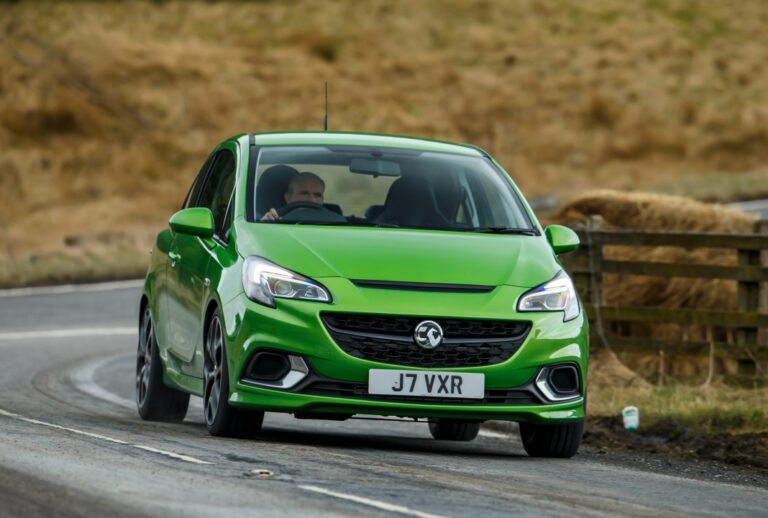
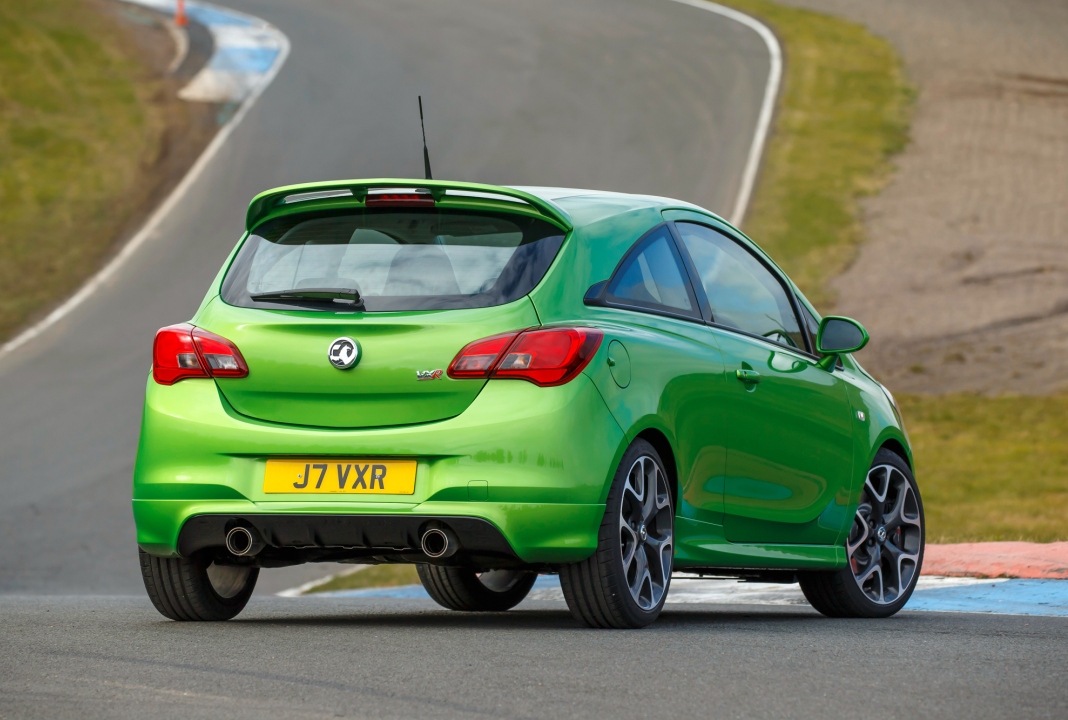
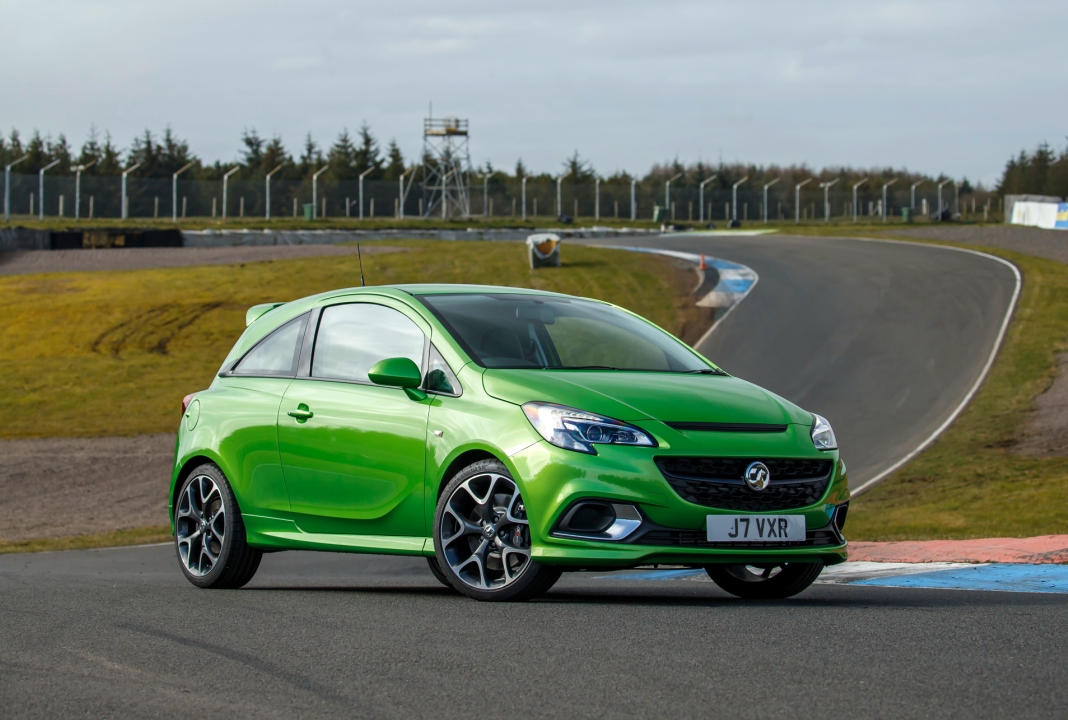
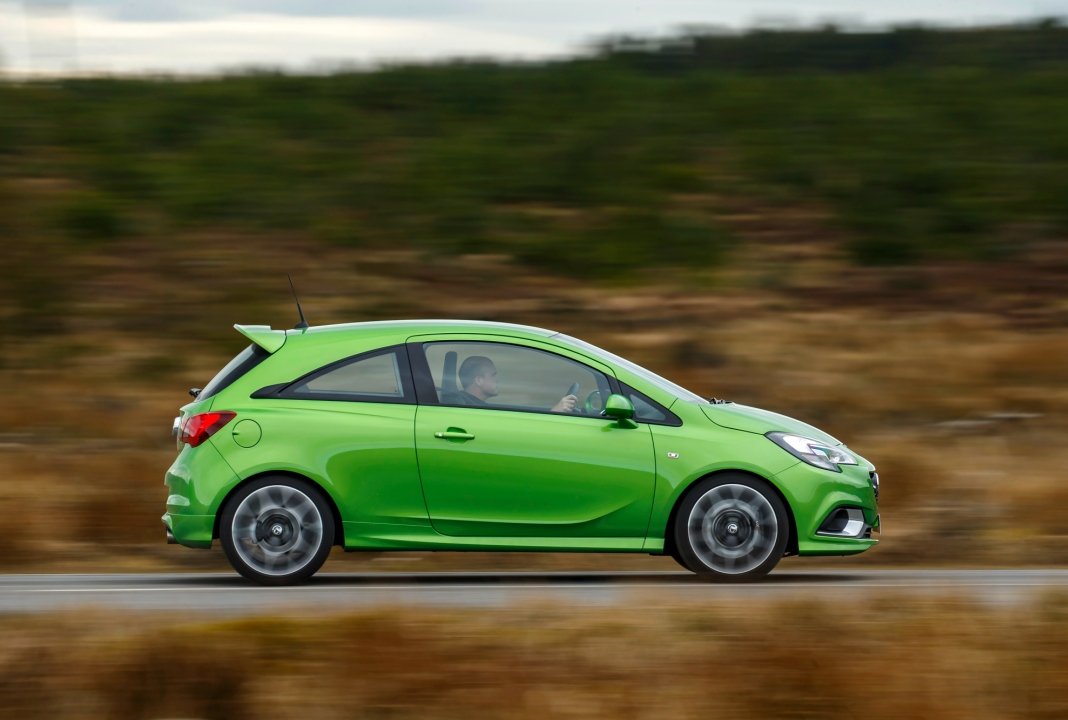
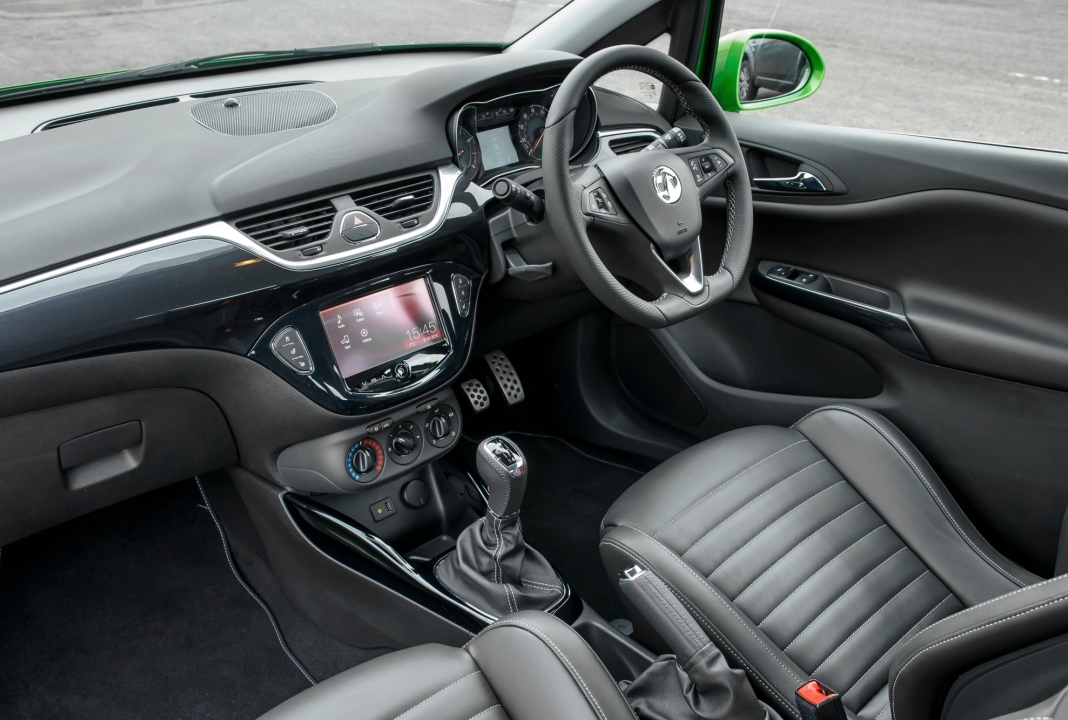












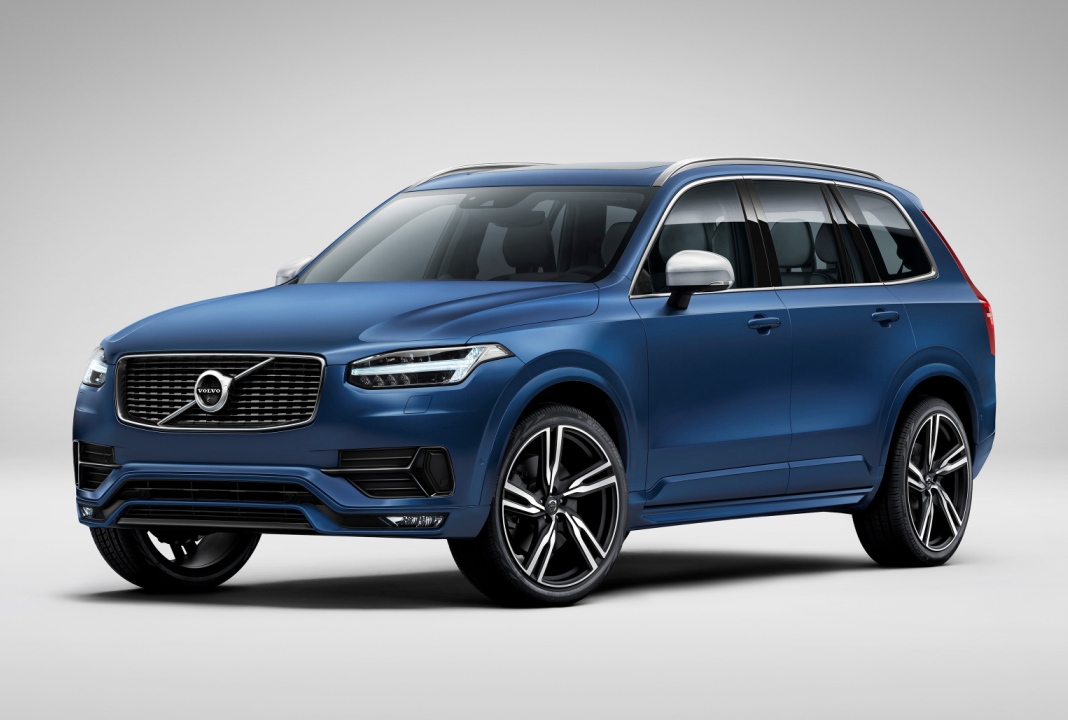
























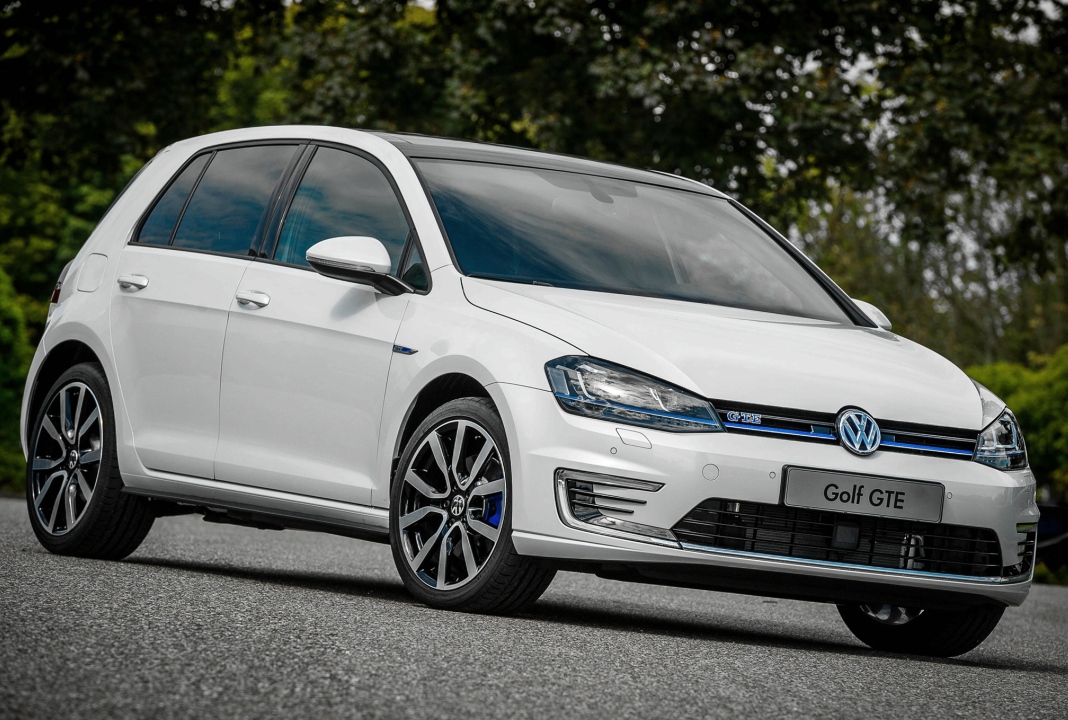


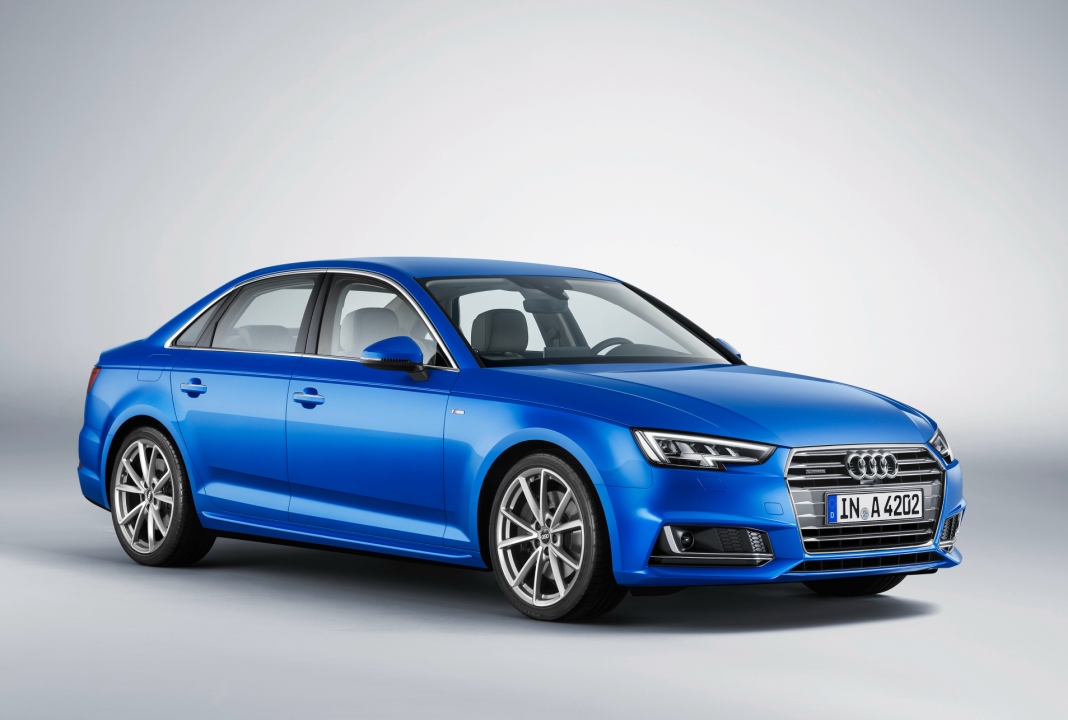
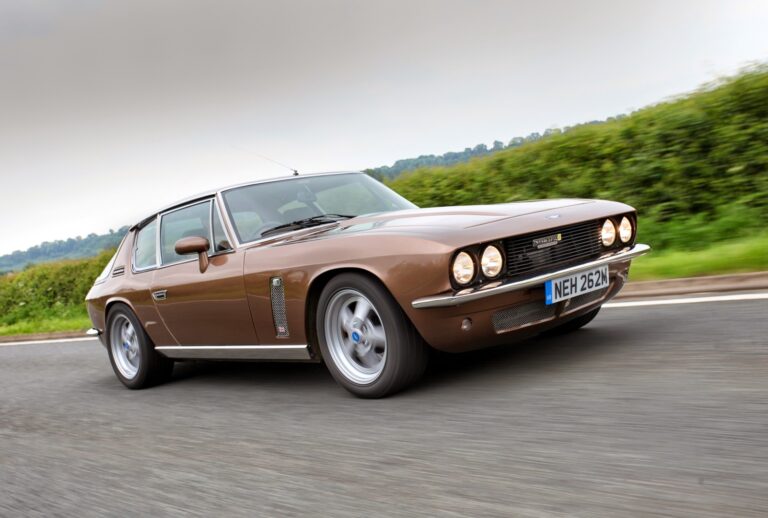
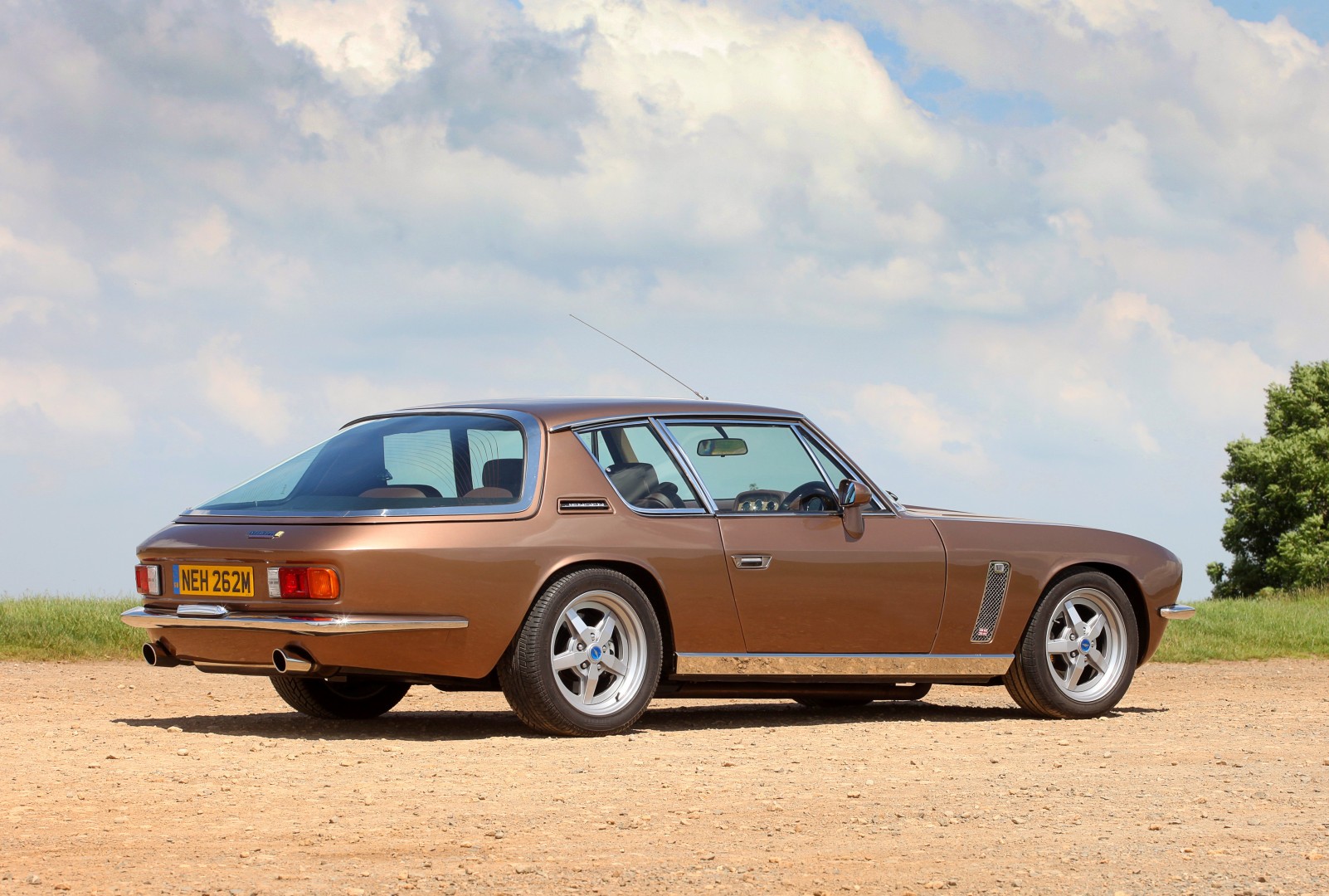




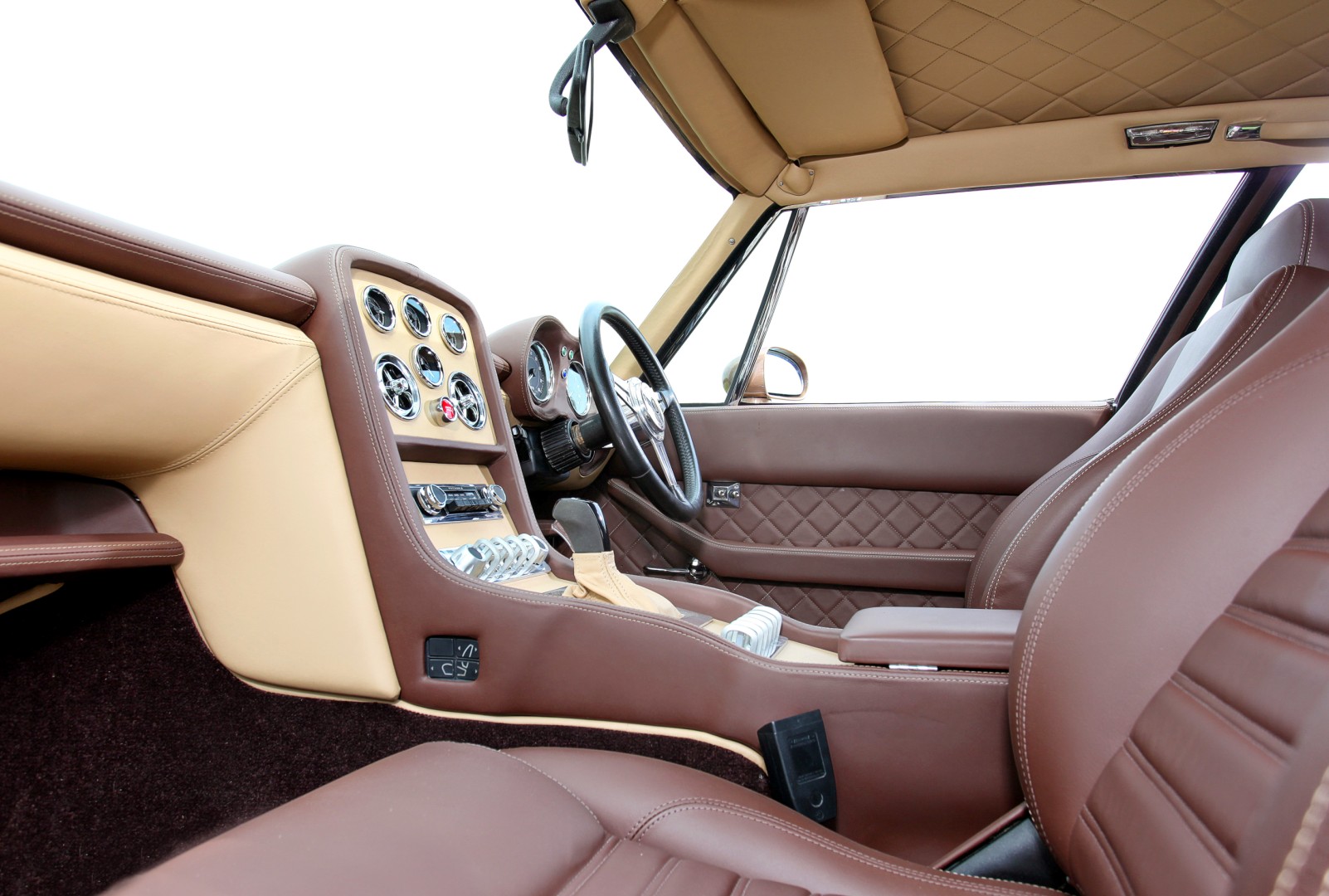
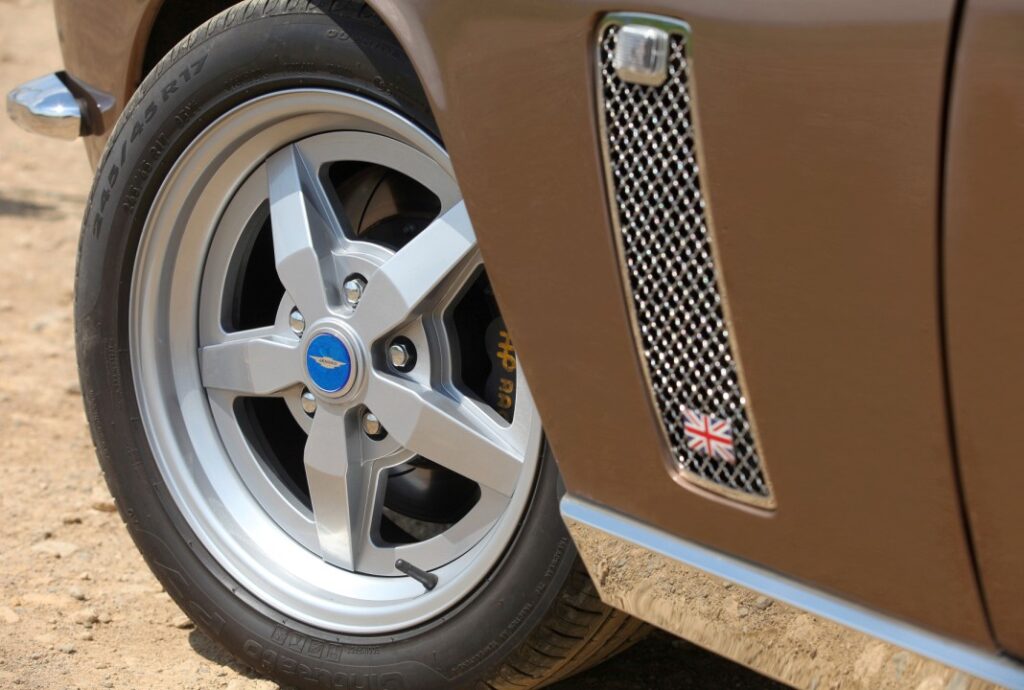

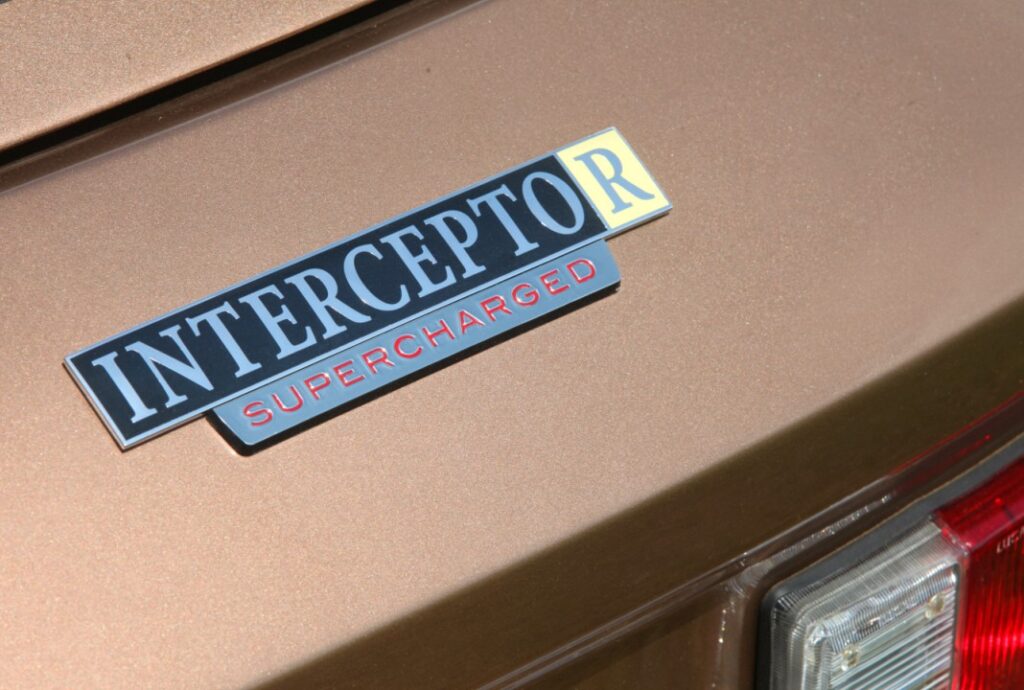

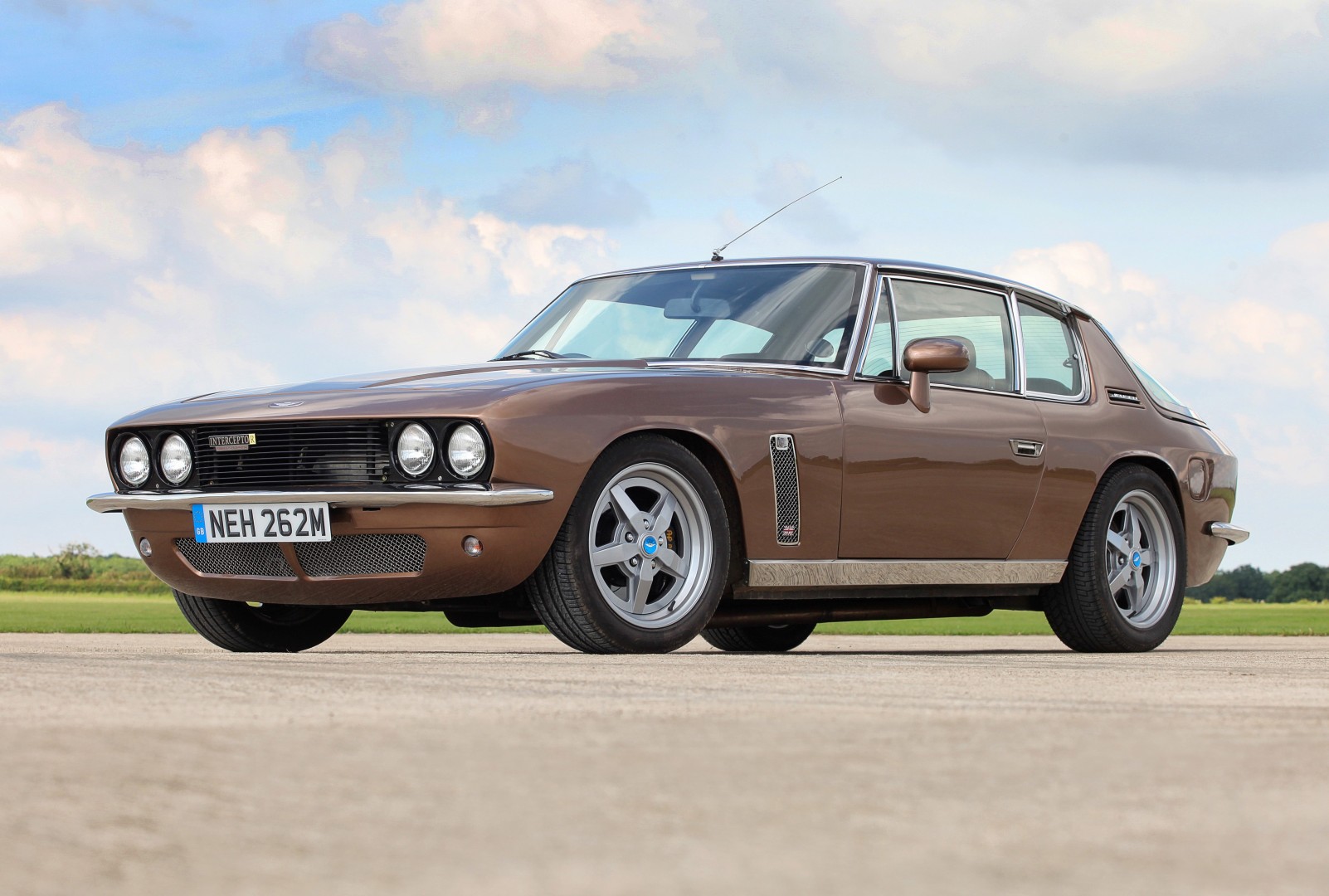
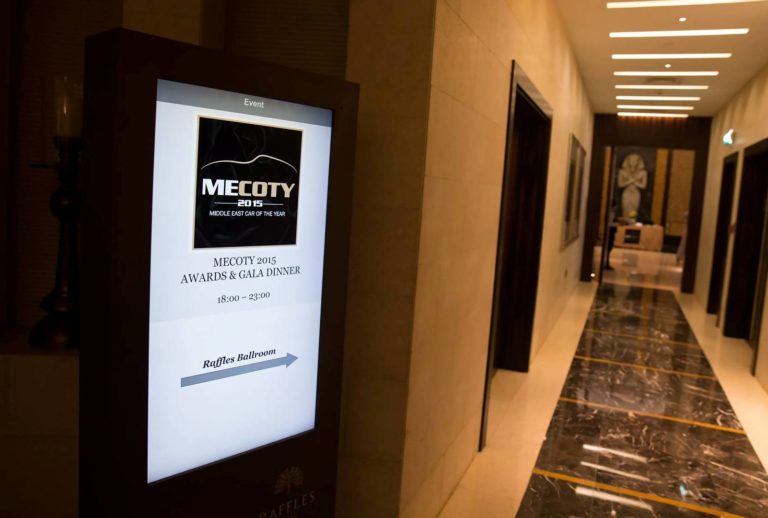

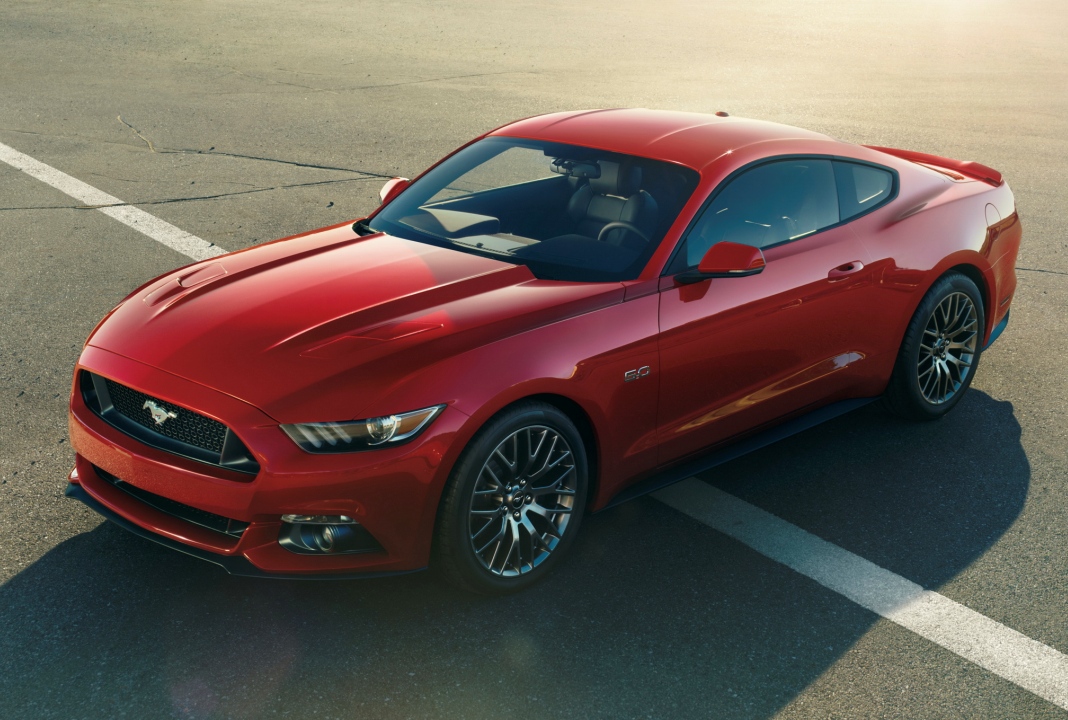
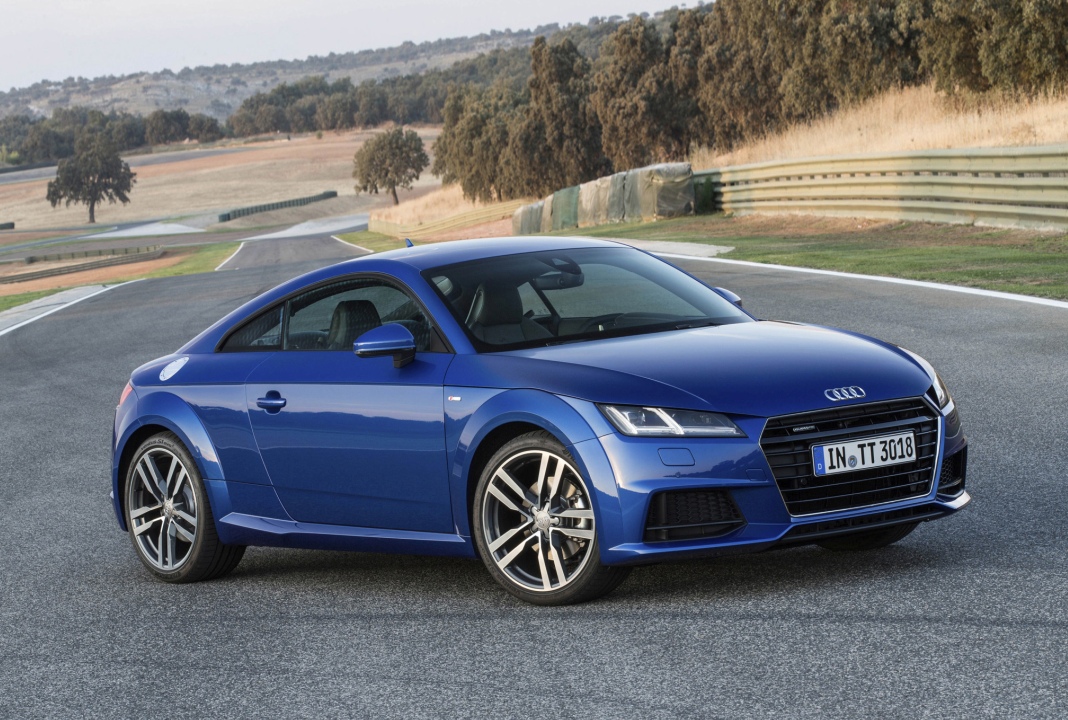













































Recent Comments